Modified Biotin, Streptavidin Mutant, And Usage Of Them
SUGIYAMA; Akira ; et al.
U.S. patent application number 16/512894 was filed with the patent office on 2020-01-16 for modified biotin, streptavidin mutant, and usage of them. This patent application is currently assigned to SAVID THERAPEUTICS INC.. The applicant listed for this patent is SAVID THERAPEUTICS INC.. Invention is credited to Hirofumi DOI, Tsuyoshi INOUE, Motomu KANAI, Tatsuya KAWATO, Tatsuhiko KODAMA, Tomohiro MESHIZUKA, Eiichi MIZOHATA, Yohei SHIMIZU, Akira SUGIYAMA, Noriaki TAKASU, Mari TAKATSU.
| Application Number | 20200017558 16/512894 |
| Document ID | / |
| Family ID | 53878320 |
| Filed Date | 2020-01-16 |
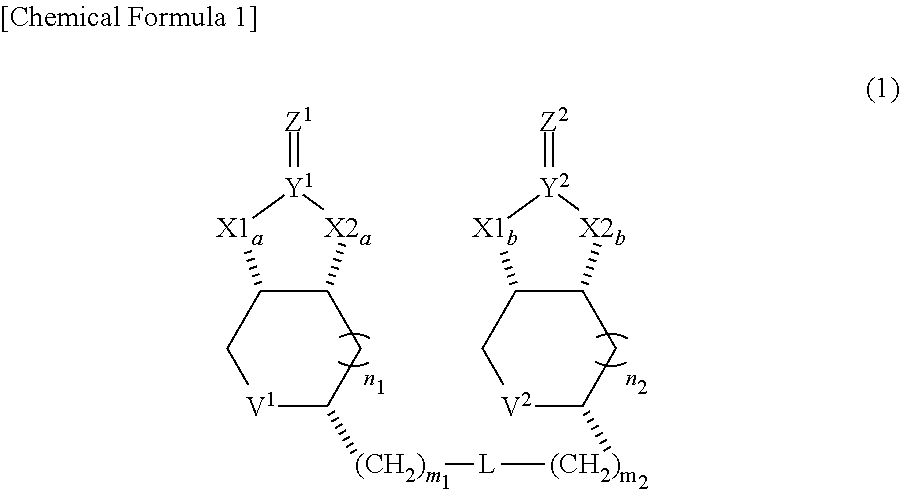
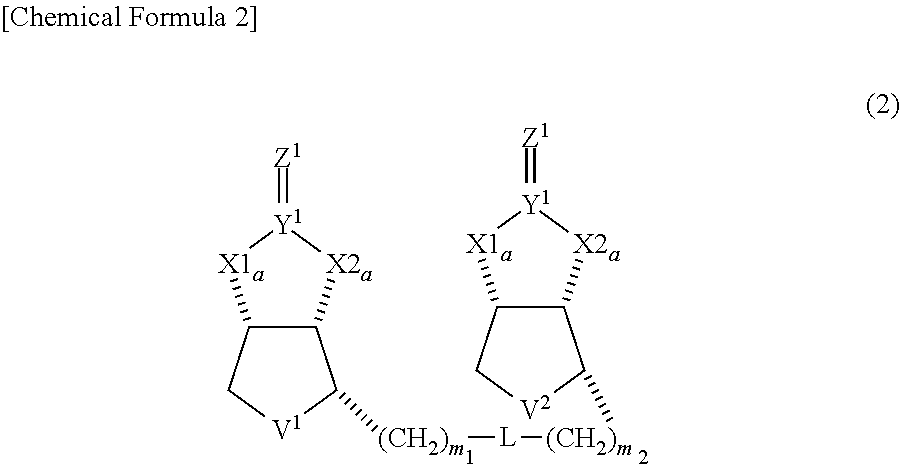


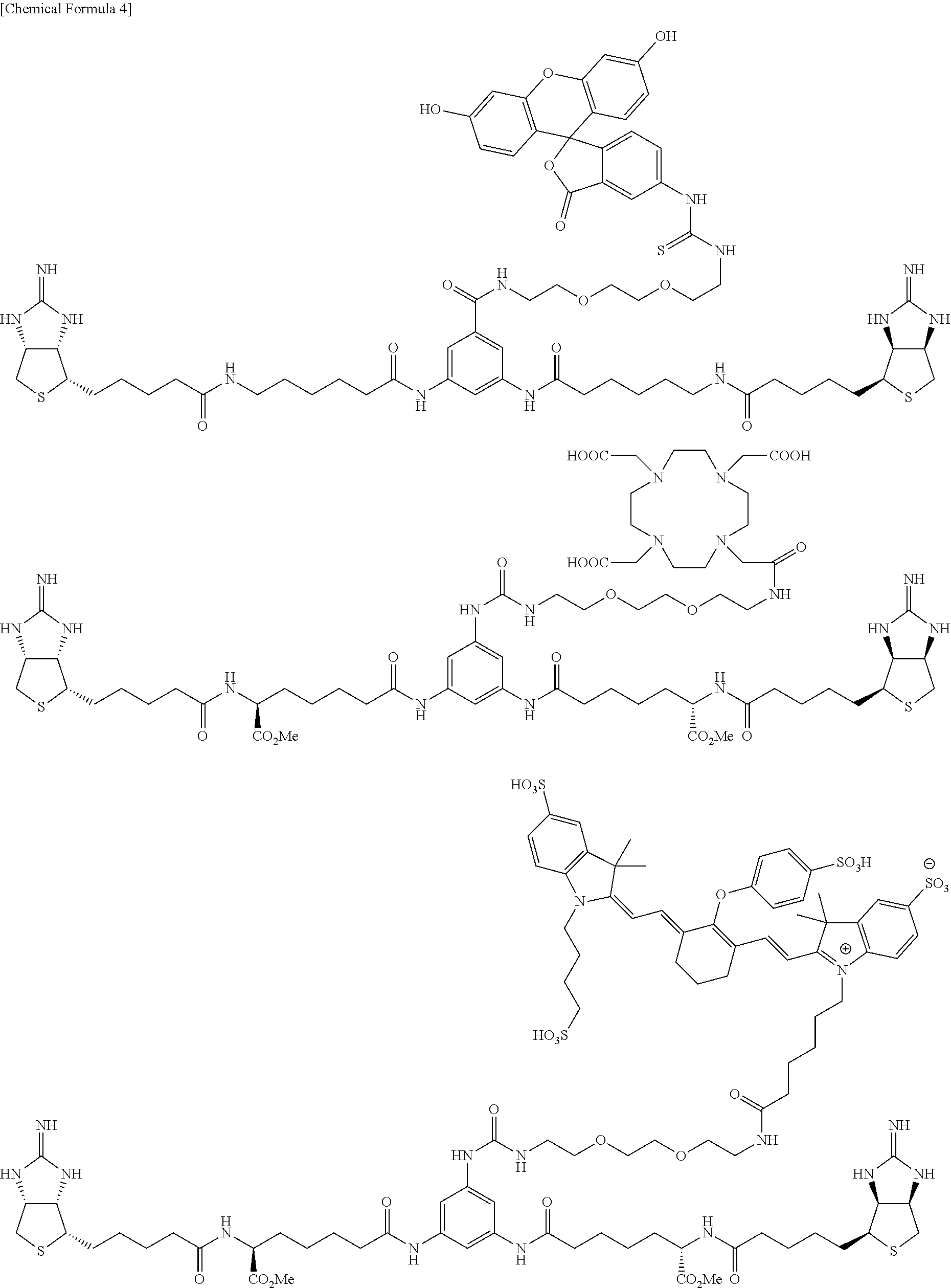

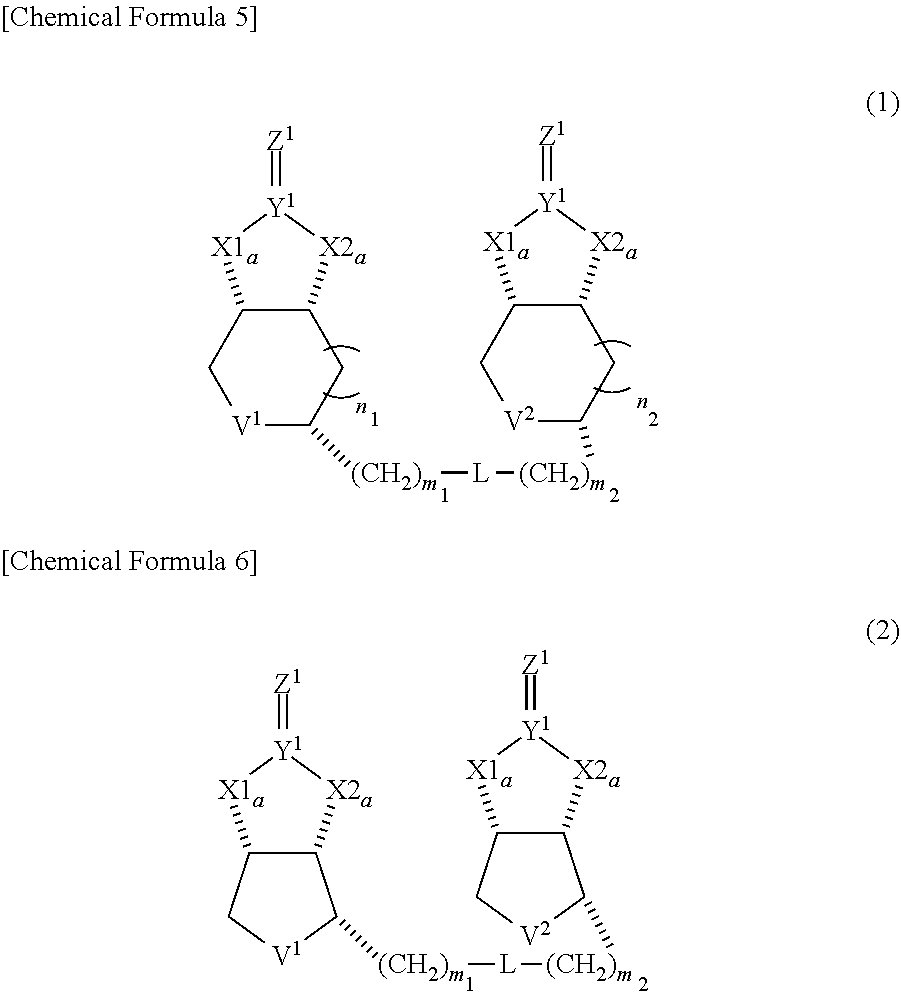


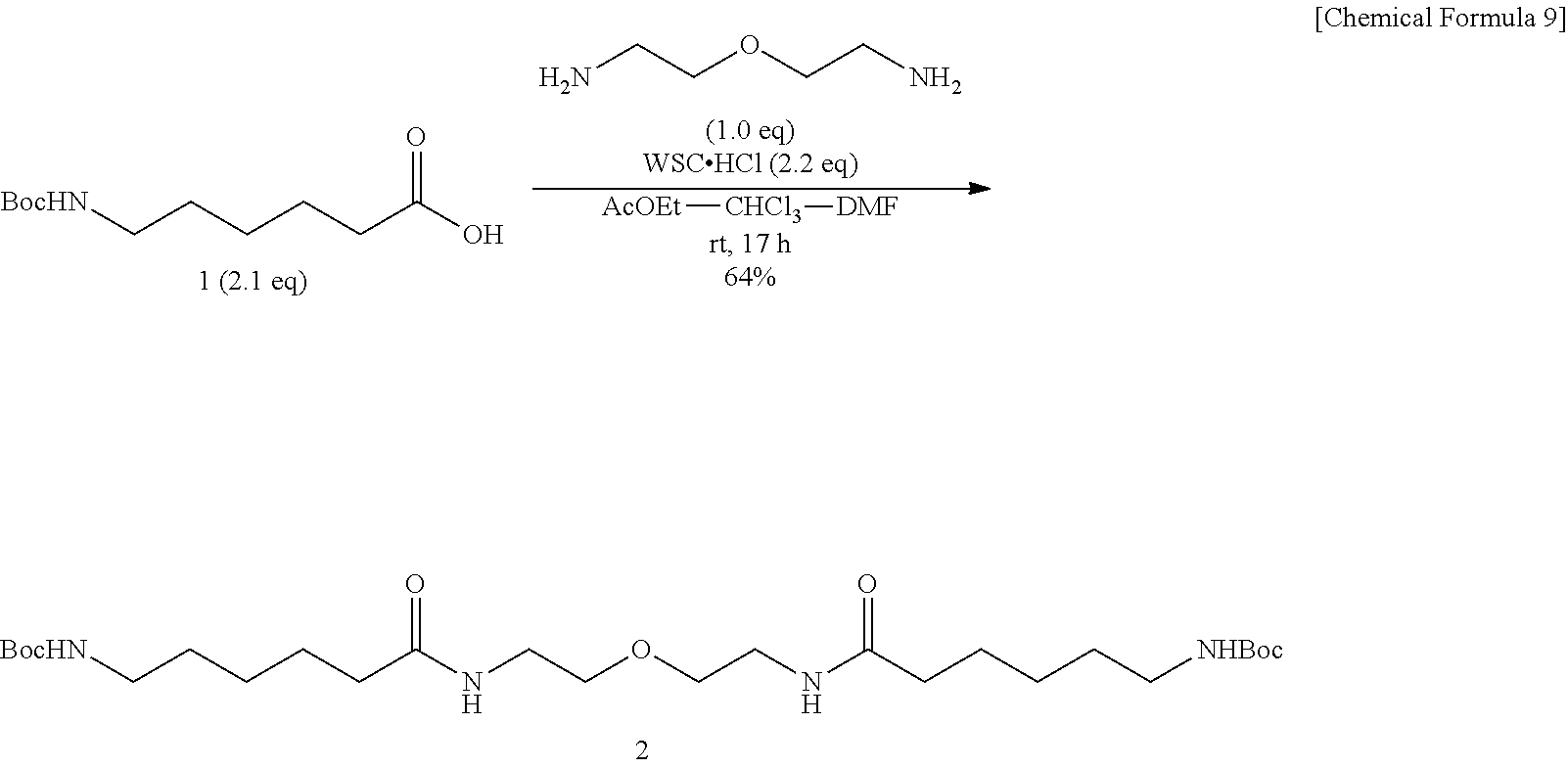

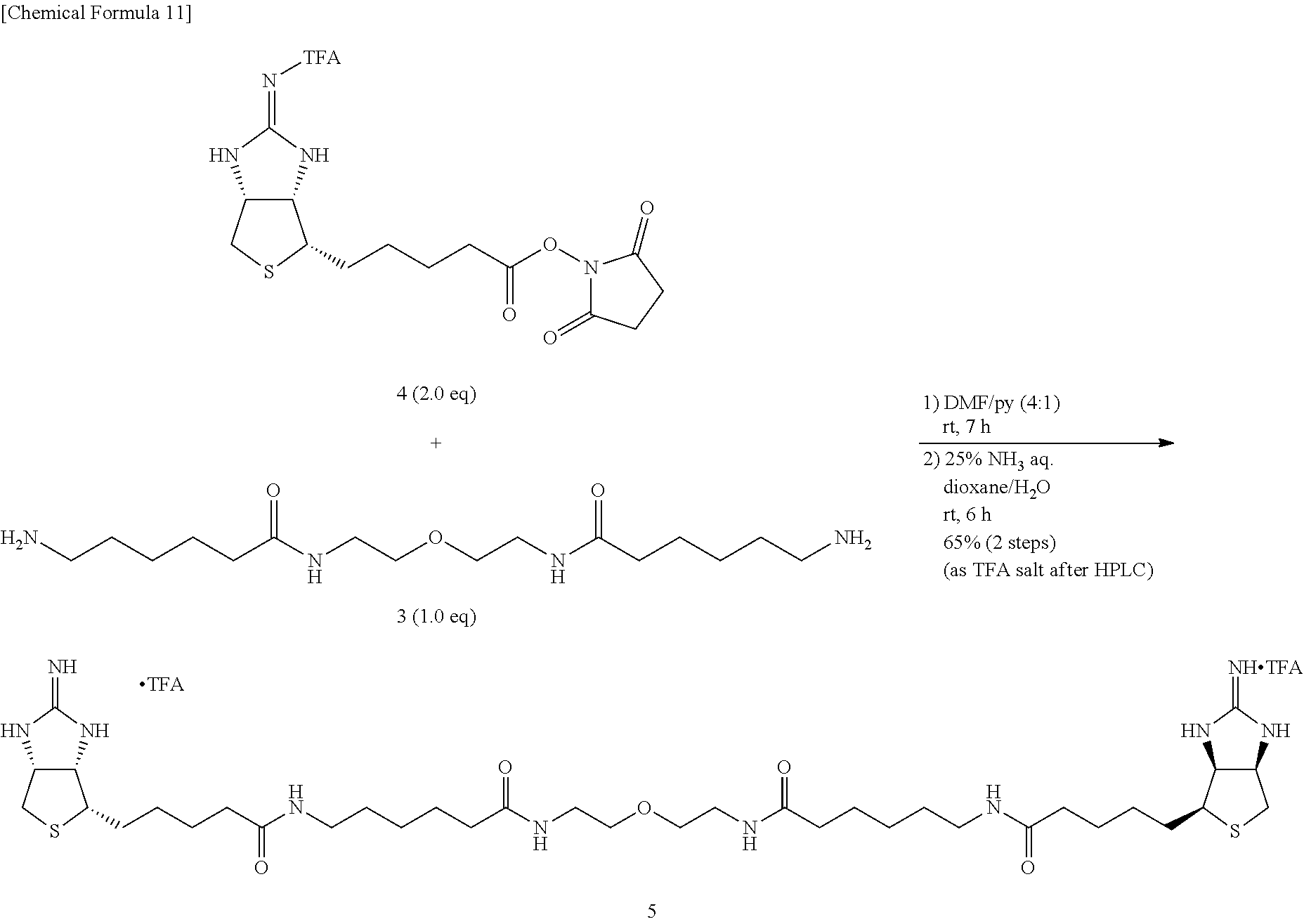
View All Diagrams
| United States Patent Application | 20200017558 |
| Kind Code | A1 |
| SUGIYAMA; Akira ; et al. | January 16, 2020 |
MODIFIED BIOTIN, STREPTAVIDIN MUTANT, AND USAGE OF THEM
Abstract
An object of this invention is to provide a streptavidin mutant reduced in affinity to the naturally-occurring biotin, and to provide a modified biotin which shows a high affinity to such streptavidin mutant reduced in affinity to the naturally-occurring biotin. This invention can provide a compound composed of a dimer of modified biotin, a streptavidin mutant, angsd usage of them.
| Inventors: | SUGIYAMA; Akira; (Tokyo, JP) ; DOI; Hirofumi; (Chiba, JP) ; KODAMA; Tatsuhiko; (Tokyo, JP) ; INOUE; Tsuyoshi; (Osaka, JP) ; MIZOHATA; Eiichi; (Osaka, JP) ; KAWATO; Tatsuya; (Tokushima, JP) ; MESHIZUKA; Tomohiro; (Osaka, JP) ; KANAI; Motomu; (Tokyo, JP) ; SHIMIZU; Yohei; (Tokyo, JP) ; TAKASU; Noriaki; (Mie, JP) ; TAKATSU; Mari; (Tokyo, JP) | ||||||||||
| Applicant: |
|
||||||||||
|---|---|---|---|---|---|---|---|---|---|---|---|
| Assignee: | SAVID THERAPEUTICS INC. Tokyo JP |
||||||||||
| Family ID: | 53878320 | ||||||||||
| Appl. No.: | 16/512894 | ||||||||||
| Filed: | July 16, 2019 |
Related U.S. Patent Documents
| Application Number | Filing Date | Patent Number | ||
|---|---|---|---|---|
| 15119441 | Aug 17, 2016 | |||
| PCT/JP2015/054431 | Feb 18, 2015 | |||
| 16512894 | ||||
| Current U.S. Class: | 1/1 |
| Current CPC Class: | C07K 2319/33 20130101; C07K 16/2887 20130101; A61K 49/0032 20130101; A61P 35/00 20180101; C07D 495/04 20130101; C07K 16/22 20130101; C07D 519/00 20130101; C07K 2317/622 20130101; A61K 49/0058 20130101; A61K 49/0052 20130101; C07K 2319/22 20130101; C09B 23/107 20130101; C07K 14/36 20130101; C07K 2317/24 20130101; C07K 2319/21 20130101 |
| International Class: | C07K 14/36 20060101 C07K014/36; C07D 519/00 20060101 C07D519/00; A61K 49/00 20060101 A61K049/00; C07D 495/04 20060101 C07D495/04; C07K 16/22 20060101 C07K016/22; C07K 16/28 20060101 C07K016/28; C09B 23/10 20060101 C09B023/10 |
Foreign Application Data
| Date | Code | Application Number |
|---|---|---|
| Feb 18, 2014 | JP | 2014-028525 |
| Oct 17, 2014 | JP | 2014-212861 |
Claims
1. A streptavidin mutant comprising an amino acid sequence in which Asn at amino acid residue 37 in the amino acid sequence represented by SEQ ID NO: 3 is substituted with other amino acid residue.
2. A streptavidin mutant comprising an amino acid sequence represented by SEQ ID NO: 4.
3. A DNA encoding the streptavidin mutant described in claim 1.
4. A streptavidin mutant-molecular probe conjugate, obtained by combining the streptavidin mutant described in claim 1 with a molecular probe.
5. The streptavidin mutant-molecular probe conjugate of claim 4, wherein the molecular probe is an anti-human CD20 antibody.
6. The streptavidin mutant-molecular probe conjugate of claim 4, wherein the molecular probe is rituximab.
7. The streptavidin mutant-molecular probe conjugate of claim 4, wherein the molecular probe is an anti-epiregulin single chain antibody.
8. A therapeutic agent, or in vivo or in vitro diagnostic agent, comprising the streptavidin mutant-molecular probe conjugate described in claim 4.
9. A therapeutic, or in vivo or in vitro diagnostic kit, comprising (a) a streptavidin mutant-molecular probe conjugate obtained by combining a streptavidin mutant comprising an amino acid sequence in which Asn at amino acid residue 37 in the amino acid sequence represented by SEQ ID NO: 3 is substituted with other amino acid residue, with a molecular probe; and (b) an in vivo or in vitro diagnostic substance, or a therapeutic substance, labeled with a compound represented by Formula (1) below: ##STR00055## wherein, each of X1a, X1b, X2a and X2b independently represents O or NH, each of Y.sup.1 and Y.sup.2 independently represents C or S, each of Z.sup.1 and Z.sup.2 independently represents O, S or NH, each of V.sup.1 and V.sup.2 independently represents S or S.sup.+--O.sup.-, each of n1 and n2 independently represents 0 or 1, each of m1 and m2 independently represents and integer from 1 to 10, and L represents a linking group.
Description
CROSS-REFERENCE TO RELATED APPLICATIONS
[0001] The present application is a Divisional of U.S. application Ser. No. 15/119,441, filed Aug. 17, 2016, which is a National stage of International Patent Application No. PCT/JP2015/054431, filed Feb. 18, 2015, which claims priority to Japanese Application No. 2014-212861, filed Oct. 17, 2014 and Japanese Application No. 2014-028525, filed Feb. 18, 2014, the contents of which are expressly incorporated by reference herein in their entireties.
TECHNICAL FIELD
[0002] This invention relates to compound composed of a dimer of modified biotin, a streptavidin mutant, and usage of them.
BACKGROUND ART
[0003] Avidin and biotin, or, streptavidin and biotin show a very strong affinity (Kd=10.sup.-15 to 10.sup.-14 M), which is one of the strongest interactions between two biomolecules. Today, the avidin/streptavidin-biotin interaction has been widely used in the fields of biochemistry, molecular biology, and medicine (Green, (1975), Adv. Protein Chem., 29: 85-133; Green, (1990), Methods Enzymol., 184: 51-67). Avidin is a basic glycoprotein derived from albumen, and has an isoelectric point above 10. Meanwhile, streptavidin is derived from Streptomyces (Streptomyces avidinii), has the isoelectric point at around the neutral point, and has no sugar chain. Both proteins can form a tetramer, and can bind one biotin molecule per one subunit. The molecular weight it at around 60 kDa.
[0004] In recent years, there has been proposed the pretargeting method, as a method of drug delivery making use of the high binding ability of avidin/streptavidin with biotin, combined with an antigen molecule (Hnatowich, (1987), J. Nucl. Med., 28, 1294-1302). Chicken avidin and bacterial streptavidin are, however, highly immunogenic to human body, and produces an anti-avidin/streptavidin antibody in the early stage after being administered to human. This has been an inhibiting factor against implementation of the pretargeting method (Paganelli, (1991), Cancer Res., 51, 5960-5966). As a solution to this problem, a low-immunogenic streptavidin has been reported (International Patent WO2010/095455).
[0005] Also the pretargeting method using bisbiotin (compound obtained by combining two biotin molecules with a linker) and a streptavidin mutant (Park et al., Clin. Cancer Res.; 17(23); 7373-82, 2011) has been reported. This method has successfully solved a problem of endogenous biotin, by using a streptavidin mutant having an amino acid mutation denoted as S45A or Y43A. More specifically, while the streptavidin mutant with S45A or Y43A can bind biotin only weakly as compared with the wild-type streptavidin, the streptavidin mutant becomes to bind more strongly with bisbiotin after being converted into a bis-form compound.
PRIOR ART LITERATURES
Patent Literature
[0006] [Patent Literature 1] International Publication WO2010/095455
Non-Patent Literature
[0006] [0007] [Non-Patent Literature 1] Green, (1975), Adv. Protein Chem., 29: 85-133; [0008] [Non-Patent Literature 2] Green, (1990), Methods Enzymol., 184: 51-67 [0009] [Non-Patent Literature 3] Hnatowich, (1987), J. Nucl. Med, 28, 1294-1302 [0010] [Non-Patent Literature 4] Paganelli, (1991), Cancer Res., 51, 5960-5966). [0011] [Non-Patent Literature 5] Park et al., Clin. Cancer Res.; 17(23); 7373-82, 2011
SUMMARY OF THE INVENTION
Object to be Solved by the Invention
[0012] The low-immunogenic streptavidin described above, although reduced in the immunogenicity to human, still has affinity to endogenous biotin inhuman body, so that it would elevate the background level in diagnostic applications, or it would fail in achieving a disease-specific drug effect in therapeutic applications. It is therefore an object of this invention to provide a streptavidin mutant reduced in affinity to the natural-occurring biotin, and also to provide a modified biotin which shows a high affinity to such streptavidin mutant reduced in affinity to the naturally-occurring biotin. It is a further object of this invention to provide a diagnostic/therapeutic drug based on combination of the streptavidin mutant and the modified biotin, and a diagnostic/therapeutic kit based on combination of the streptavidin mutant and the modified biotin.
Means for Solving the Object
[0013] After thorough investigations aimed at solving the problems above, the present inventors succeeded in obtaining a streptavidin mutant having a reduced affinity to the naturally-occurring biotin, by further introducing predetermined amino acid mutations into the low-immunogenic streptavidin mutant having been described in International Patent WO2010/095455. The present inventors concurrently synthesized a dimeric compound of modified biotin by partially modifying the biotin structure. The present inventors then examined affinity between the streptavidin mutant and the dimeric compound of modified biotin, and found out combinations thereof having high-affinity. The findings led us to work out this invention.
[1] A compound represented by Formula (1) below:
##STR00001##
(in Formula, each of X1a, X1b, X2a and X2b independently represents O or NH, each of Y.sup.1 and Y.sup.2 independently represents C or S, each of Z.sup.1 and Z.sup.2 independently represents O, S or NH, each of V.sup.1 and V.sup.2 independently represents S or S.sup.+--O.sup.-, each of n1 and n2 independently represents 0 or 1, each of m1 and m2 independently represents an integer from 1 to 10, and L represents a linking group.) [2] The compound of [1], wherein both of n1 and n2 represent 0, and being represented by Formula (2) below:
##STR00002##
(in Formula, X1a, X1b, X2a, X2b, Y.sup.1, Y.sup.2, Z.sup.1, Z.sup.2, V.sup.1, V.sup.2, m1, m2 and L are synonymous to those in Claim 1). [3] The compound of [1] or [2], wherein L represents --CONH--, --NHCO--, --O--, alkylene group having 1 to 10 carbon atoms, optionally substituted phenylene group, or any of combinations of them. [4] The compound of any one of [1] to [3], wherein L represents --CONH--(CH.sub.2).sub.p--CONH--(CH.sub.2).sub.q--O--(CH.sub.2).sub.r--NH- CO(CH.sub.2).sub.s--NH--CO--, --CONH--(CH.sub.2).sub.p--CONH--(CH.sub.2).sub.q--NHCO--(CH.sub.2).sub.s-- -NH--CO--, --CONH--(CH.sub.2).sub.p--CONH-(optionally substituted phenylene group)-NHCO--(CH.sub.2).sub.s--NH--CO--, --CONH--CH(COOCH.sub.3)--(CH.sub.2).sub.p--NHCO-(optionally substituted phenylene group)-CONH--(CH.sub.2).sub.s--CH(COOCH.sub.3)--NH--CO--, or --CONH--(CH.sub.2).sub.p--O--(CH.sub.2).sub.t--NHCO-(optionally substituted phenylene group)-CONH--(CH.sub.2).sub.s--O--(CH.sub.2).sub.u--NH--CO-- (in Formulae, each of p, q, r, s, t and u independently represents an integer from 1 to 10). [5] A compound represented by any one of Formulae below:
##STR00003## ##STR00004##
[6] A compound comprising the compound of any one of [1] to [5], bound with a chelate group capable of capturing a radioisotope. [7] A compound comprising the compound of any one of [1] to [5], bound with a fluorescent compound or a drug compound. [8] A compound represented by any one of formulae below:
##STR00005## ##STR00006##
[9] A streptavidin mutant comprising an amino acid sequence in which Asn at amino acid residue 37 in the amino acid sequence represented by SEQ ID NO: 3 is substituted with other amino acid residue. [10] A streptavidin mutant comprising an amino acid sequence represented by SEQ ID NO: 4. [11] A DNA encoding the streptavidin mutant described in [9] or [10]. [12] A streptavidin mutant-molecular probe conjugate, obtained by combining the streptavidin mutant described in [9] or [10] with a molecular probe. [13] The streptavidin mutant-molecular probe conjugate of [12], wherein the molecular probe is an anti-human CD20 antibody. [14] The streptavidin mutant-molecular probe conjugate of [12], wherein the molecular probe is rituximab. [15] The streptavidin mutant-molecular probe conjugate of [12], wherein the molecular probe is an anti-epiregulin single chain antibody. [16] A therapeutic agent, or in vivo or in vitro diagnostic agent, comprising the streptavidin mutant-molecular probe conjugate described in any one of [12] to [15]. [17] A therapeutic, or in vivo or in vitro diagnostic kit, comprising (a) the streptavidin mutant-molecular probe conjugate described in any one of [12] to [15]; and (b) an in vivo or in vitro diagnostic substance, or a therapeutic substance, labeled with the compound described in any one of [1] to [5].
Advantageous Effects of Invention
[0014] According to this invention, there is provided a combination of the streptavidin mutant having a reduced immunogenicity and a reduced affinity to the naturally-occurring biotin, and a dimeric compound of modified biotin having a high affinity to such streptavidin mutant. The combination of the streptavidin mutant and the dimeric compound of modified biotin of this invention is useful in diagnostic/therapeutic processes based on the pretargeting method.
BRIEF DESCRIPTION OF DRAWINGS
[0015] FIG. 1 shows a result of crystallographic analysis.
[0016] FIG. 2 shows a result of crystallographic analysis.
[0017] FIG. 3 shows results of measurement of refolding efficiency based on the dilution method.
[0018] FIG. 4 shows interaction of V2122 with various compounds measured by ITC.
[0019] FIG. 5 shows results of immunogenicity test using crab-eating monkey (Macaca fascicularis).
[0020] FIG. 6 shows results of crystallographic analysis. The third figure in FIG. 6 shows a crystal structure of a conjugate of V2122 and Compound C.
[0021] FIG. 7 shows a result of crystallographic analysis.
[0022] FIG. 8 shows results of CD20 recognition analysis over RAMOS cell by flow cytometry.
[0023] FIG. 9 shows comparison of performance of wild-type streptavidin mutants Y43A and S45A.
[0024] FIG. 10 shows comparison of performance of wild-type streptavidin mutants Y43A and S45A.
[0025] FIG. 11 shows results of SDS-PAGE of expressed anti-epiregulin scFv after purified by gel filtration.
[0026] FIG. 12 shows results of structural analysis of a conjugate of anti-epiregulin scFv and epiregulin.
[0027] FIG. 13 shows results of purification of anti-epiregulin scFv-V2122 protein.
[0028] FIG. 14 shows results of antigen-binding ability of anti-epiregulin scFv-V2122-FITC, confirmed by SPR (Biacore T200).
[0029] FIG. 15 shows analytical results of cell staining and internalization using anti-epiregulin scFv-V2122-FITC.
[0030] FIG. 16 shows results of FACS analysis using anti-epiregulin scFv-V2122-FITC.
[0031] FIG. 17 shows results of purification of Rituximab-scFv-V2122 protein through Protein L column.
[0032] FIG. 18 shows results of flow cytometry using Rituximab-scFv-V2122.
[0033] FIG. 19 shows results of in vivo imaging using Rituximab-scFv-V2122.
[0034] FIG. 20 shows results of purification of anti-epiregulin scFv-V2122 through Protein L column.
[0035] FIG. 21 shows results of in vivo imaging using anti-epiregulin scFv-V2122.
EMBODIMENTS FOR CARRYING OUT THE INVENTION
[0036] This invention will further be detailed below.
(1) Dimeric Compound of Modified Biotin
[0037] A dimeric compound of modified biotin of this invention is a compound represented by formula (1) below, and preferably a compound represented by formula (2) where n1 and n2 in formula (1) represent 0.
##STR00007##
(in Formulae, each of X1a, X1b, X2a and X2b independently represents 0 or NH, each of Y.sup.1 and Y.sup.2 independently represents C or S, each of Z.sup.1 and Z.sup.2 independently represents 0, S or NH, each of V.sup.1 and V.sup.2 independently represents S or S.sup.+--O.sup.-, each of n1 and n2 independently represents an integer of 0 or 1, each of m1 and m2 independently represents integer from 1 to 10, and L represents a linking group.)
[0038] In formula (1) and formula (2), portions represented by the structures below:
##STR00008##
are preferably any one of; but not limited to, the structures below:
##STR00009##
[0039] Each of m1 and m2 represents an integer from 1 to 10, preferably from 2 to 10, more preferably from 2 to 8, and even more preferably from 2 to 6.
[0040] L preferably represents --CONH--, --NHCO--, --O--, alkylene group having 1 to 10 carbon atoms, optionally substituted phenylene group, or linking group composed of combination thereof. L more preferably represents --CONH--(CH.sub.2).sub.p--CONH--(CH.sub.2).sub.q--O--(CH.sub.2).sub.r--NH- CO--(CH.sub.2).sub.s--NH--CO--, --CONH--(CH.sub.2).sub.p--CONH--(CH.sub.2).sub.q--NHCO--(CH.sub.2).sub.s-- -NH--CO--, --CONH--(CH.sub.2).sub.p--CONH-(optionally substituted phenylene group)-NHCO--(CH.sub.2).sub.s--NH--CO--, --CONH--CH(COOCH.sub.3)--(CH.sub.2).sub.p--NHCO-(optionally substituted phenylene group)-CONH--(CH.sub.2).sub.s--CH(COOCH.sub.3)--NH--CO--, or --CONH--(CH.sub.2).sub.p--O--(CH.sub.2).sub.r--NHCO-(optionally substituted phenylene group)-CONH--(CH.sub.2).sub.s--O--(CH.sub.2).sub.u--NH--CO-- (in the formulae, each of p, q, r, s, t, and u independently represents an integer of 1 to 10). More preferably, each of p, q, r and s independently represents an integer of 2 to 8, and even more preferably an integer of 2 to 6. Even more preferably, each oft and u independently represents an integer of 1 to 4. Substituent on the phenylene group is exemplified by --COOH, --CONH.sub.2, optionally substituted amido group, and --CO--NH.sub.2.
[0041] The compounds represented by formula (1) or formula (2) of this invention may be synthesized by the methods described later in Example 1. Compounds 5, 7, 11, 13, 15, 22, 24, 36 and 50 in Example 1 are the compounds represented by formula (1) or formula (2) of this invention.
Method of Synthesizing Compound 5
[0042] To an ethyl acetate solution of Compound 1, are added 1-ethyl-3-(3-dimethylaminopropyl)carbodiimide hydrochloride and N,N-dimethylformamide. The mixture is added with 2,2'-oxybis(ethylamine) preliminarily dissolved in a mixed solvent of chloroform and N,N-dimethylformamide, and the mixture is allowed to react at room temperature, to obtain tert-butyl 6,6'-[2,2'-oxybis(ethane-2,1-diyl)bis(azanediyl)]bis(6-oxohexane-6,1-diyl- )dicarbonate (Compound 2). To a dichloromethane solution of dicarbamate Compound 2, trifluoroacetic acid is added, and the mixture is allowed to react at room temperature for 30 minutes, to obtain N,N'-[2,2'-oxybis(ethane-2,1-diyl)]bis(6-aminohexanamido) (Compound 3). To a mixed solvent of N,N-dimethylformamide and pyridine containing diamine 3, EZ-Link.RTM. NHS-Iminobiotin is added, and the mixture is allowed to react at room temperature. The crude product is dissolved into a mixed solvent of dioxane and water, added with a 25% aqueous ammonia solution, and the mixture is allowed to react at room temperature, to obtain (3aS,3a'S,4S,4'S,6aR,6a'R)-4,4'-(5,12,20,27-tetraoxo-16-oxa-6,13,1- 9,26-tetraazahentriacontane-1,3H-diyl)bis[tetrahydro-1H-thieno[3,4-d]imida- zole-2(3H)-iminium] di(2,2,2-trifluoroacetate) (Compound 5).
Method of Synthesizing Compound 7
[0043] To a mixed solvent of N,N-dimethylformamide and pyridine containing diamine 6, EZ-Link.RTM. NHS-Iminobiotin is added, and the mixture is allowed to react at room temperature. After the solvent is evaporated off under reduced pressure, the residue is dissolved in dioxane, added with 25% aqueous ammonia, and the mixture is allowed to react at room temperature, to obtain (3aS,3a'S,4S,4'S,6aR,6a'R)-4,4'-(5,12,18,25-tetraoxo-6,13,17,24-tetraazan- onacosane-1,29-diyl)bis[tetrahydro-1H-thieno[3,4-d]imidazole-2(3H)-iminium- ] di(2,2,2-trifluoroacetate) (Compound 7).
Method of Synthesizing Compound 11
[0044] To an N,N-dimethylformamide solution of Compound 1, 1-ethyl-3-(3-dimethylaminopropyl)carbodiimide hydrochloride is added, then ethyl 3,5-diaminobenzoate (Compound 8) dissolved in N,N-dimethylformamide is added, and the mixture is allowed to react at room temperature, to obtain ethyl 3,5-bis[6-(tert-butoxycarbonylamino)hexanamido]benzoate (Compound 9). To a dioxane solution of dicarbamate Compound 9, a 4-N hydrogen chloride solution in dioxane is added, and the mixture is allowed to react at room temperature, to obtain 6,6'-[5-(ethoxycarbonyl)-1,3-phenylene]bis(azanediyl)bis(6-oxohexane-1-am- monium) dichloride (Compound 10). The ammonium salt 10 is added with N,N-dimethylformamide, and then with triethylamine for solubilization. The mixture is then added with EZ-Link.RTM. NHS-Iminobiotin, and allowed to react at room temperature. The crude product is dissolved into methanol, added with a 2-N aqueous sodium hydroxide solution, and the mixture is stirred at room temperature for 22 hours, to obtain (3aS,3a'S,4S,4'S,6aR,6a'R)-4,4'-{5,5'-[6,6'-(5-carboxy-1,3-phenylene)bis(- azanediyl)bis(6-oxohexane-6,1-diyl)]bis(azanediyl)bis(5-oxopentane-5,1-diy- l)}bis(tetrahydro-1H-thieno[3,4-d]imidazole-2(3)-iminium) di(2,2,2-trifluoroacetate) (Compound 11).
[0045] Method of Synthesizing Compound 13
[0046] To a N,N-dimethylformamide solution of bisiminobiotin 11, added are N,N'-diisopropylcarbodiimide and 1-hydroxybenzotriazole monohydrate, further added is an N,N-dimethylformamide solution of amine 12, and the mixture is allowed to react at 60.degree. C., to obtain (3aS,3a'S,4S,4'S,6aR,6a'R)-4,4'-{5,5'-[6,6'-(5-(2-(2-(2-aminoethoxy)ethox- y)ethylcarbonyl)-1,3- phenylene)bis(azanediyl)bis(6-oxohexane-6,1-diyl)]bis(azanediyl)bis(5-oxo- pentane-5,1-diyl)}bis(tetrahydro-1H-thieno [3,4-d]imidazole-2(3H)-iminium) tri(2,2,2-trifluoroacetate) (Compound 13).
Method of Synthesizing Compound 15
[0047] Diamine 10 is added with dioxane and pyridine, further with EZ-Link.RTM. NHS-Iminobiotin, and the mixture is allowed to react at room temperature. The solvent is evaporated off under reduced pressure, the crude product is dissolved in dioxane and water, added with 28% aqueous ammonium, and the mixture is allowed to react at room temperature, to obtain (3aS,3a'S,4S,4'S,6aR,6a'R)-4,4'-{5,5'-[6,6'-(5-carbamoyl-1,3-pheny- lene)bis(azanediyl)bis(6-oxohexane-6,1-diyl)]bis(azanediyl)bis(5-oxopentan- e-5,1-diyl)}bis[tetrahydro-1H-thieno[3,4-d]imidazole-2(3H)-iminium]di(2,2,- 2-trifluoroacetate) (Compound 15).
Method of Synthesizing Compound 22
[0048] To an N,N-dimethylformamide solution of 5-(4-iodobenzamido)isophthalic acid, added are 1-ethyl-3-(3-dimethylaminopropyl)carbodiimide hydrochloride and 1-hydroxybenzotriazole monohydrate, further added is an N,N-dimethylformamide solution of amine 12, and the mixture is allowed to react at room temperature, to obtain N.sup.1,N.sup.3-bis{2-[2-(2-(tert-butoxycarbonylamino)ethoxy)ethoxy]ethyl- }-5-(4-iodobenzamido)isophthalamide (Compound 17).
[0049] To a dichloromethane solution of dicarbamate Compound 17, trifluoroacetic acid is added, and the mixture is allowed to react at room temperature, to obtain N.sup.1,N.sup.3-bis{2-[2-(2-aminoethoxy)ethoxy]ethyl}-5-(4-iodobenzamido)- isophthalamide (Compound 18).
[0050] To a N,N-dimethylformamide solution containing Boc-Asp(O.sup.tBu)-OH (Compound 19a) and N-hydroxysuccinimide, added is 1-ethyl-3-(3-dimethylaminopropyl)carbodiimide hydrochloride, and the mixture is allowed to react at room temperature, to obtain (S)-1-tert-butyl 4-(2,5-dioxopyrrolidine-1-yl) 2-(tert-butoxycarbonylamino)succinate (Compound 19).
[0051] To a mixed solvent of dioxane and pyridine containing diamine Compound 18, activated ester 19 is added, the mixture is allowed to react at room temperature, Compound 19 is further added, and the mixture is allowed to react at room temperature, to obtain tert-butyl (14S,14'S)-1,1'-[5-(4-iodobenzamido)-1,3-phenylene]bis[4-(tert-butoxycarb- onylamino)-1,12-dioxo-5,8-dioxa-2,11-diazapentadecanoate] (Compound 20).
[0052] Compound 20 is added with trifluoroacetic acid, and the mixture is allowed to react at room temperature, to obtain (14S,14'S)-1,1'-[5-(4-iodobenzamido)-1,3-phenylene]bis(14-carboxy-1,12-di- oxo-5,8-dioxa-2,11-diazatetradecane-14-ammonium) di(2,2,2-trifluoroacetate) (Compound 21).
[0053] Bisamino acid 21 is suspended into a mixed solvent of dioxane and water, a 1-N aqueous sodium hydroxide solution is added, the mixture is stirred at room temperature for solubilization, added with EZ-Link.RTM. NHS-Iminobiotin, and is allowed to react at room temperature. A 2-N aqueous sodium hydroxide solution is added, and the mixture is further allowed to react at room temperature, to obtain (3aS,3a'S,4S,4'S,6aR,6a'R)-4,4'-{(14S,4'S)-1,1'-[5-(4-iodobenzamido)-1,3-- phenylene]bis(14-carboxy-1,12,16-trioxo-5,8-dioxa-2,11,15-triazaeicosane-2- 0,1-diyl)}bis(tetrahydro-1H-thieno[3,4-d]imidazole-2(3H)-iminium) di(2,2,2-trifluoroacetate) (Compound 22).
Method of Synthesizing Compound 24
[0054] To an N,N-dimethylformamide solution of diamine 3, biotin N-hydroxysuccinimide ester (Compound 23) is added, and the mixture is allowed to react at room temperature, to obtain N,N'-[2,2'-oxybis(ethane-2,1-diyl)]bis{6-[5-((3a,4S,6aR)-2-oxohexahydro-1- H-thieno[3,4-d]imidazole-4-yl)pentanamido]hexanamide} (Compound 24).
Method of Synthesizing Compound 36
[0055] 2-Iminobiotin 39 is added with trifluoroacetic acid, the mixture is stirred, and an excessive portion of trifluoroacetic acid is removed by evaporation under reduced pressure. To an acetonitrile solution of the obtained white solid, added are pyridine and disuccinimide 40, and the mixture is stirred at 30.degree. C. After the solvent is evaporated off under reduced pressure, the residue is dried in vacuo, to obtain Compound 41. To a mixed solvent of N,N-dimethylformamide and triethylamine containing diamine 34 is added ester 41 prepared from 2-iminobiotin 39, the mixture is stirred at room temperature, the solvent is evaporated off under reduced pressure, the obtained crude product is purified by reversed-phase silica gel column chromatography (water/methanol=2:1.fwdarw.1:2), to obtain Compound 35. To an aqueous solution of bisiminobiotin 35, trifluoroacetic acid is added, the mixture is stirred at 50.degree. C. for 4 hours, the solvent is evaporated off under reduced pressure, and the obtained crude product is purified by reversed-phase silica gel column chromatography (water/methanol=2:1.fwdarw.1:2), to obtain Compound 36.
Method of Synthesizing Compound 50
[0056] To an N,N-dimethylformamide solution of disuccinimide compound 30, added is an N,N-dimethylformamide solution of amine 45, and the mixture is stirred at room temperature. An additional N,N-dimethylformamide solution of amine 45 is added, and the mixture is stirred at room temperature. After the solvent is evaporated off under reduced pressure, the residue is added with ethyl acetate, washed successively with 1-M aqueous sodium hydroxide solution, 1-M hydrochloric acid, and a saturated sodium chloride solution, the organic layer is dried over sodium sulfate, the solvent is evaporated off under reduced pressure, the obtained crude product is purified by silica gel column chromatography (dichloromethane/hexane=1:30.fwdarw.1:20.fwdarw.1:10.fwdarw.1:5), to obtain Compound 46. An aqueous solution of dicarbamate Compound 47 obtained above is added with trifluoroacetic acid under cooling on ice, stirred, heated to room temperature, and further stirred. After the solvent is evaporated off under reduced pressure, the residue is dried in vacuo, to obtain a crude product containing Compound 48. To a test tube containing Compound 41 prepared from 2-iminobiotin 39 are added an N,N-dimethylfomamide solution of diamine 48 and diisopropylethylamine, and the mixture is stirred at room temperature. The solvent is evaporated off under reduced pressure, and the obtained crude product is purified by reversed-phase silica gel column chromatography (methanol/water=2:1, 0.3% TFA), to obtain Compound 49. Bisiminobiotin 49 is then added with a mixed solvent of trifluoroacetic acid and water, the mixture is heated to 50.degree. C. and stirred. After the solvent is evaporated off under reduced pressure, the residue is dried in vacuo, to obtain Compound 50.
[0057] According to this invention, there is also provided a compound composed of a dimeric compound of modified biotin of this invention, bound with a chelate group capable of capturing a radioisotope. The chelete group usable in this invention includes DOTA (1,4,7,10-tetraazacyclododecane-N,N',N'',N'''-tetraacetate), DTPA (diethylenetriamine pentaacetate), TETA (1,4,8,11-tetraazacyclotetradecane-N, N', N'', N'''-tetraacetate), N2S2, MAG3 and CHX-A-DTPA.
[0058] According to this invention, there is also provided a compound composed of the above-described compound bound with a chelete group, and a radioisotope captured thereon. Among the radioisotopes possibly captured by the chelete group, those available for imaging include gamma-ray emitting nuclides (.sup.67Ga, .sup.99mTc, .sup.111In, .sup.123I) and positron emitting nuclides (.sup.18F, .sup.62Cu, .sup.64Cu, .sup.66Ga, .sup.68Ga, .sup.76Br, .sup.86Y, .sup.89Zr, .sup.4Tc, .sup.124I). Those suitably used as therapeutic radioisotope include beta-ray emitting nuclides (.sup.32P, .sup.67Cu, .sup.89Sr, .sup.90Y, .sup.114mIn, .sup.117mSn, .sup.131I, .sup.153Sm, .sup.166Ho, .sup.177Lu, .sup.186Re, .sup.188Re, etc.), alpha-ray emitting nuclides (.sup.211At, .sup.212Bi, .sup.212Pb, .sup.213Bi, .sup.223Ra, .sup.225Ac, etc.) and Auger electron emitting nuclides (.sup.125I, .sup.165Er, etc.). Among these nuclides, .sup.64Cu, .sup.124I, .sup.76Br, .sup.68Ga, .sup.99mTc, .sup.123I, .sup.131I and .sup.90Y are preferably used.
[0059] According to this invention, there is also provided a compound composed of the above-described dimeric compound of modified biotin of this invention bound with a fluorescent compound or drug compound (e.g., anticancer drug).
[0060] The fluorescent compound suitably used in this invention is exemplified by fluorescein-5-isothiocyanate (FITC), IRDye (registered trademark) 800, and fluorescein. The drug (e.g., anticancer drug) suitably used in this invention is exemplified by PBD (pyrrolobenzodiazepin) class (e.g., SJG-136, SG2202, etc.), maytansine analogues (e.g., DM1, DM4, etc.), dolastatin analogues (e.g., monomethyl auristatin E (MMAE), monomethyl auristatin F (MMAF), dolastatin 10, tubulysin, etc.), duocarmycin analogues (e.g., DC1, DC4, DC44, etc.), camptothecin analogues (e.g., SN-38 etc.), and others (e.g., methotrexate, vinblastine, calicheamicin, .alpha.-amanitin, doxorubicin, and melphalan).
[0061] Specific examples of the compound composed of the compound represented by formula (1) or formula (2) of this invention bound with a chelate group capable of capturing a radioisotope, and the compound composed of the compound represented by formula (1) or formula (2) of this invention bound with a fluorescent compound or a drug compound, are exemplified by Compounds 14, 42, 44, 51, 52 and 59 in Example 1, which may be synthesized according to the synthetic methods described later in Example 1.
Method of Synthesizing Compound 14
[0062] A methanol solution of bisiminobiotin 13 is added with triethylamine and fluorescein-5-isothiocyanate, and the mixture is allowed to react at room temperature, to obtain (3aS,3a'S,4S,4'S,6aR,6a'R)-4,4'-{5,5'-[6,6'-(5-(2-(2-(2-(3-(3',6'-dihydro- xy-3-oxo-3H-spiro[isobenzofuran-1,9'-xanthene]-5-yl)thioureido)ethoxy)etho- xy)ethylcarbamoyl)-1,3-phenylene)bis(azanediyl)bis(6-oxohexane-6,1-diyl)]b- is(azanediyl)bis(5-oxopentane-5,1-diyl)}bis(tetrahydro-1H-thieno[3,4-d]imi- dazole-2(3H)-iminium) di(2,2,2-trifluoroacetate) (Compound 14).
Method of Synthesizing Compound 42
[0063] To a mixed solvent of methanol and triethylamine containing bisiminobiotin 36, DOTA-NHS-ester 37 was added, and the mixture is stirred at room temperature. The solvent is evaporated off under reduced pressure, and the obtained crude product is purified by reversed-phase HPLC (0.0-20.0-20.5-60.5-61.0-75.0 min; 5.0-5.0-17.5-57.5-100.0-100.0% CH.sub.3CN in 0.1% HCOOH in MQ, ramp time=40 min (17.5-57.5%), t.sub.r=31.5 min), to obtain Compound 42.
Method of Synthesizing Compound 44
[0064] To a mixed solvent of N,N-dimethylformamide and triethylamine containing bisiminobiotin 36, IRDye.RTM. 800CW NHS Ester is added, and the mixture is stirred at room temperature. The solvent is evaporated off under reduced pressure, and the obtained crude product is purified by reversed-phase HPLC (0.0-20.0-20.5-60.5-61.0-75.0 min; 5.0-5.0-17.5-57.5-100.0-100.0% CH.sub.3CN in 0.1% TFA in MQ, ramp time=40 min (17.5-57.5%), t.sub.r=40.9 min), to obtain Compound 44.
Method of Synthesizing Compound 51
[0065] To a mixed solvent of methanol and triethylamine containing bisiminobiotin 50, DOTA-NHS-ester 37 is added, and the mixture is stirred at room temperature. The solvent is evaporated off under reduced pressure, and the obtained crude product is purified by reversed-phase HPLC (0.0-20.0-20.5-60.5-61.0-75.0 min; 5.0-5.0-17.5-57.5-100.0-100.0% CH.sub.3CN in 0.1% TFA in MQ, ramp time=40 min (17.5-57.5%), t.sub.r=32.6 min), to obtain Compound 51.
Method of Synthesizing Compound 52
[0066] To a mixed solvent of methanol and triethylamine containing bisiminobiotin 50, 5(6)-carboxyfluorescein N-hydroxysuccinimide ester 51 is added, and the mixture is stirred at room temperature. The solvent is evaporated off under reduced pressure, the obtained crude product is purified by reversed-phase column chromatography (methanol/water=1:1.fwdarw.2:1, 0.5% TEA), and further purified through Sephadex 20LH (methanol, 1% TFA), to obtain Compound 52.
Method of Synthesizing Compound 59
[0067] To a dichloromethane solution containing SN38 Boc-protected compound 53 and Cbz-Ala-OH 54 is added 1-ethyl-3-(3-dimethylaminopropyl)carbodiimide hydrochloride and dimethylaminopyridine under cooling on ice, the mixture is gradually heated to room temperature, and stirred. The mixture is added with dichloromethane, washed successively with an aqueous sodium hydrogen carbonate solution, water, 0.1-M hydrochloric acid, and a saturated sodium chloride solution, the organic layer is dried over sodium sulfate, the solvent is evaporated off under reduced pressure, and the obtained crude product is purified by silica gel column chromatography (dichloromethane/methanol=30:1), to obtain Compound 55. To an ethyl acetate solution of Compound 55, Pd/C is added, the atmosphere in the reaction vessel is replaced with hydrogen, the mixture is stirred at room temperature, then stirred at 40.degree. C., and filtered through celite. The solvent is evaporated off under reduced pressure, and the obtained crude product is purified by thin layer chromatography (dichloromethane/methanol=30:1), to obtain Compound 56. To a dichloromethane solution of Compound 56, triphosgene and pyridine are added under cooling on ice, the mixture is heated to room temperature and stirred. After the solvent is evaporated off under reduced pressure, the residue is dried in vacuo, to obtain a crude product (brown liquid) containing Compound 57. To a methanol solution of crude product containing bisiminobiotin 50 and Compound 57, triethylamine is added, and the mixture is stirred at room temperature. The solvent is evaporated off under reduced pressure, and the obtained crude product is purified by reversed-phase thin layer chromatography (methanol/water=3:1, 1% TFA), to obtain Compound 58. To an aqueous solution of bisiminobiotin 58, trifluoroacetic acid is added, and the mixture is stirred at room temperature. The solvent is evaporated off under reduced pressure, and the obtained crude product is purified by reversed-phase thin layer chromatography (methanol/water=3:1, 1% TFA), to obtain Compound 59.
(2) Streptavidin Mutant
[0068] The streptavidin mutant characteristically contains mutation of predetermined amino acids in the amino acid sequence of the core streptavidin represented by SEQ ID NO: 2, and is reduced in immunogenicity as compared with the wild-type streptavidin, and is also reduced in affinity to the naturally-occurring biotin or biocytin.
[0069] The amino acid sequence of wild-type (native) core streptavidin is represented by SEQ TD NO: 2 in the Sequence Listing, and the nucleotide sequence encoding it is represented by SEQ ID NO: 1 in the sequence listing.
[0070] The streptavidin mutant of this invention is specifically exemplified by a streptavidin mutant composed of an amino acid sequence in which, in the amino acid sequence represented by SEQ ID NO: 3, Asn at the 37th amino acid residue is substituted with other amino acid residue. It is more preferably a streptavidin mutant containing the amino acid sequence represented by SEQ ID NO: 4.
[0071] The amino acid sequence represented by SEQ ID NO: 3 has the mutations listed below in streptavidin whose amino acid sequence is represented by SEQ ID NO: 2:
(1) mutation given by substitution of tyrosine at position 10 with serine; (2) mutation given by substitution of tyrosine at position 71 with serine; (3) mutation given by substitution of arginine at position 72 with lysine; (4) mutation given by substitution of glutamic acid at position 89 with aspartic acid; (5) mutation given by substitution of arginine at position 91 with substituted with lysine; (6) mutation given by substitution of glutamic acid at position 104 with asparagine; (7) mutation given by substitution of asparagine at position 11 with aspartic acid; (8) mutation given by substitution of serine at position 15 with aspartic acid; and (9) mutation given by substitution of serine at position 33 with asparagine.
[0072] The amino acid sequence represented by SEQ ID NO: 4 additionally contains the mutation below, in the amino acid sequence represented by SEQ ID NO: 3:
(10) mutation given by substation of asparagine at position 37 with glycine:
[0073] In this invention, the phrase stating that " . . . is reduced in immunogenicity as compared with the wild-type streptavidin" means that the immunogenicity is reduced when the streptavidin mutant was administered to mammals including human. Reduction in immunogenicity may be confirmed typically by the method below. That is, the streptavidin mutant of this invention is analyzed to find how it is reactive with an anti-streptavidin antiserum obtained from a crab-eating monkey immunized with wild-type streptavidin, and reduction in immunogenicity, from the level shown by the wild-type streptavidin, is determined if the reactivity to the anti-streptavidin antiserum is found to be decreased from that of the wild-type streptavidin. According to the way of determining such reduction in immunogenicity, the immunogenicity of the streptavidin mutant of this invention is decreased preferably down to 80% or below, more preferably 60% or below, more preferably 20% or below, even more preferably 15% or below, yet more preferably 10% or below, and particularly 5% or below, of the level shown by the wild-type streptavidin.
[0074] In this invention, the phrase stating that " . . . is reduced in affinity to the naturally-occurring biotin or biocytin" means that binding potential of the streptavidin mutant with the naturally-occurring biotin or biocytin is lowered from the binding potential of streptavidin with the naturally-occurring biotin or biocytin. Affinity/binding potential of the streptavidin mutant with the naturally-occurring biotin or biocytin may be evaluated typically by SPR analysis. Affinity of the streptavidin mutant of this invention with the naturally-occurring biotin or biocytin has been decreased preferably down to 80% or below, more preferably 70% or below, more preferably 60% or below, even more preferably 50% or below, and yet more preferably 40% or below, of the level shown by the wild-type streptavidin.
[0075] According to this invention, there is also provided a DNA encoding the streptavidin mutant of this invention. The DNA of this invention may be produced by site-directed mutagenesis of DNA encoding the wild-type (native) streptavidin.
[0076] The DNA encoding the streptavidin mutant of this invention may be used after being introduced into a vector. In particular, the streptavidin mutant of this invention may be produced by introducing the DNA encoding the streptavidin mutant of this invention into an expression vector, and then transforming a host with the expression vector, so as to express the streptavidin mutant of this invention.
[0077] When E. coli is used as a host, the vector used in this invention preferably has a replication origin (ori), and also has a gene for selecting the transformed host (e.g., drug-resistance gene resistant to drugs including ampicillin, tetracycline, kanamycin or chloramphenicol, etc.). The expression vector preferably has a promoter capable of efficiently expressing the streptavidin mutant of this invention in the host, such as lacZ promoter or T7 promoter Examples of such vector include M13 vector, pUC vector, pBR322, pBluescript, pCR-Script, pGEX-5X-1 (Pharmacia), "QIAexpress system" (QIAGEN), pEGFP, and pET (in this case, BL21 having T7 RNApolymeraze expressed therein is preferably used as a host). The vector may also be attached with a signal sequence or the like, so as to increase the yield of the streptavidin mutant of this invention.
[0078] The vector may be introduced into the host cell typically by the calcium chloride method or electroporation. The vector may also be attached with a sequence capable of encoding a tag for improving solubility, such as glutathione-S-transferase, thioredoxin or maltose-binding protein. The vector may also be attached with a sequence capable of encoding atag designed for simplifying the purification, such as polyhistidine tag, Myc epitope, hemagglutinin (HA) epitope, T7 epitope, Xpress tag, FLAG peptide tag, or other known sequences.
[0079] Examples of the expression vector other than E. coli include mammal-derived expression vectors (e.g., pcDNA3 (Invitrogen), pEGF-BOS (Nucleic Acids. Res. 1990,18(17), p 5322), pEF, pCDM8); insect cell-derived expression vectors (e.g., "Bac-to-BAC baculovirus expression system" (from Gibco-BRL), pBacPAK8); plant-derived expression vectors (e.g., pMH1, pMH2); animal virus-derived expression vectors (e.g., pHSV, pMV, pAdexLew); retrovirus-derived expression vectors (e.g., pZIPneo); yeast-derived expression vectors (e.g., "Pichia Expression Kit" (Invitrogen), pNV11, SP-Q01); and hay bacillus (Bacillus subtilis)-derived expression vector (e.g., pPL608, pKTH50).
[0080] For the purpose of expression in an animal cell such as CHO cell, COS cell, NIH3T3 cell or the like, it is essential for the expression vector to have a promoter which is necessary for the expression in the cell, such as SV40 promoter (Mulligan et al., Nature (1979) 277, 108), MMLV-LTR promoter, EF1.alpha. promoter (Mizushima et al., Nucleic Acids Res. (1990) 18, 5322), or CMV promoter. The expression vector more preferably has a gene for selecting transformation of the cell (e.g., drug-resistance gene identifiable by drugs (neomycin, G418, etc.). Examples of such vector include pMAM, pDR2, pBK-RSV, pBK-CMV, pOPRSV and pOP13.
[0081] Host cell into which the vector is introduced may be either prokaryotes or eukaryotes, without special limitation. For example, E. coli and various types of animal cells may be used.
[0082] As the eukaryotic cells, for example, animal cell, plant cell, or fungal cell may be used as the host. Animal cell suitably used herein include mammalian cells such as CHO cell, COS cell, 3T3 cell, HeLa cell and Vero cell; and insect cells such as Sf9, Sf21 and Tn5. For the purpose of mass expression in the animal cell, CHO cell is particularly preferable. The vector may be introduced into the host cell typically by calcium phosphate method, DEAE dextran method, a method using cationic ribosome DOTAP (from Boehringer Mannheim), electroporation method, lipofection or the like.
[0083] As for the plant cells, a well known example of protein-producing system is Nicotiana tabacum-derived cell, which may be cultured using callus. Known examples of fungal cell include those of yeast fungi, including genus Saccharomyces, represented by Saccharomyces cerevisiae; and filamentous fungus including genus Aspergillus, represented by Aspergillus niger.
[0084] As the procaryotic cells suitably used herein, exemplified are Escherichia coli (E. coli), such as JM109, DH5.alpha. and HB101; and hay bacillus (Bacillus subtilis).
[0085] The streptavidin mutant of this invention may be obtained by transforming these cells using the DNA of this invention, and by culturing the transformed cells in vitro. The cells may be cultured by any of known methods. For example, DMEM, MEM, RPMI1640 or IMDM may be used as a culture medium for the animal cells. The culture in this case may be allowed to proceed in the presence of serum such as fetal calf serum (FCS), or may be in accordance with serum-flee culture. The culture is preferably allowed to proceed at pH6 to 8 or around. The culture is typically allowed to proceed at approximately 30 to 40.degree. C. for approximately 15 to 200 hours, with optional replacement of medium, ventilation and stirring. Also a growth factor may be added in order to promote the growth of the cells.
(3) Use of Streptavidin Mutant and Modified Biotin
[0086] According to this invention, there is also provided a streptavidin mutant-molecular probe conjugate, obtained by combining the streptavidin mutant of this invention with a molecular probe; and a therapeutic agent or diagnostic agent containing the streptavidin mutant-molecular probe conjugate. Moreover, the streptavidin mutant-molecular probe conjugate may be provided as a therapeutic or diagnostic kit, after combining it with a diagnostic or therapeutic substance labeled with the modified biotin which shows affinity to the streptavidin mutant of this invention. The molecular probe suitably used herein is exemplified by antibody, peptide, nucleic acid, and aptamer, and more specifically, by antibody, peptide, nucleic acid and aptamer which are targeted at antigens specifically expressed in cancer, the antigen includes:
epiregulin, ROBO1,2,3,4, 1-40-.beta.-amyloid, 4-1BB, 5AC, 5T4, ACVR2B, adenocarcinoma antibody, .alpha.-fetoprotein, angiopoietin2, anthrax toxin, AOC3 (VAP-1), B-lymphoma cell, B7-H3, BAFF, .beta. amyloid, C242 antibody, C5, CA-125, carbonic anhydraze 9 (CA-IX), cardiac myosin, CCL11 (eotaxin-1), CCR4, CCR5, CD11, CD18, CD125, CD140a, CD147 (basigin), CD147 (basigin), CD15, CD152, CD154 (CD40L), CD154, CD19, CD2, CD20, CD200, CD22, CD221, CD23 (IgE receptor), CD25 (.alpha. chain of IL-2 receptor), CD28, CD3, CD30 (TNFRSF8), CD33, CD37, CD38 (cyclic ADP ribose hydrolase), CD4, CD40, CD41 (integrin .alpha.-IIib), CD44 v6, CD5, CD51, CD52, CD56, CD6, CD70, CD74, CD79B, CD80, CEA, CFD, ch4D5, CLDN18.2, Clostridium difficile, clumping factor A, CSF2, CTLA-4, cytomegalovirus, cytomegalovirusglycoprotein B, DLL4, DR5, E. coli Shiga Toxin 1, E. coli Shiga Toxin 2, EGFL7, EGFR, endotoxin, EpCAM, episialin, ERBB3, Escherichia coli, F (fusion) protein of respiratory syncytial virus, FAP, fibrin II.beta. chain, fibronectin extra domain-B, folic acid receptor 1, Frizzled receptor, GD2, GD3 ganglioside, GMCSF receptor a chain, GPNMB, hepatitis B surface antigen, hepatitis B virus, HER1, HER2/neu, HER3, HGF, HIV-1, HLA-DR.beta., HNGF, Hsp90, human .beta. amyloid, human scatter factor receptor kinase, human TNF, ICAM-1 (CD54), IFN-.alpha., IFN-.gamma., IgE, IgE Fc region, IGF-1 receptor, IGF-I, IgG4, IGHE, IL-1.beta., IL-12, IL-13, IL-17, IL-17A, IL-22, IL-23, IL-4, IL-5, IL-6, IL-6 receptor, IL-9, ILGF2, influenza A hemagglutinin, insulin-like growth factor I receptor, integrin .alpha.4, integrin .alpha.4.beta.7, integrin .alpha.5.beta.1, integrin .alpha.7.beta.7, integrin .alpha.IIb.beta.3, integrin .alpha.v.beta.3, integrin .gamma. derived protein, interferon receptor, interferon .alpha./.beta. receptor, ITGA2, ITGB2 (CD18), KIR2D, L-selectin(CD62L), Lewis-Y antigen, LFA-1 (CD11a), lipoteichoic acid, LOXL2, LTA, MCP-1, mesothelin, MS4A1, MUC1, mucin CanAg, myostatin, N-glycolylneuraminic acid, NARP-1, NCA-90 (granulocyte antigen), NGF, NOGO-A, NRP1, Oryctolagus cuniculus, OX-40, oxLDL, PCSK9, PD-1, PDCD1, PDGF-R .alpha., phosphatidylserine, prostate cancer cell, Pseudomonas aeruginosa, rabies virus glycoprotein, RANKL, respiratory syncytial virus, RHD, Rh (Rhesus) factor, RON, RTN4, sclerostin, SDC1, selectin P, SLAMF7, SOST, sphingosine-1-phosphate, TAG-72, TEM1, tenascin C, TFPI, TGF.beta.1, TGF.beta.2, TGF-.beta., TNF-.alpha., TRAIL-R1, TRAIL-R2, tumor antigen CTAA16.88, tumor-specific glycosilation of MUC1, TWEAK receptor, TYRP1 (glycoprotein 75), VEGF-A, VEGFR-1, VEGFR2, vimentin, VWF
[0087] Preferable examples of the molecular probe include anti-human CD20 antibody (e.g., Rituximab), and anti-epiregulin single chain antibody.
[0088] Rituximab is an anti-human CD20 antibody, where human CD20 is expressed only in B cell. A therapeutic drug for B cell non-Hodgkin's lymphoma and mantle cell lymphona, obtained by isotopic labeling of murine anti-CD20 monoclonal antibody with .sup.90Y, is commercially available under the registered trademark of "Zevalin". This drug has an RI label directly bound to the anti-CD20 antibody, and needs several days after in vivo administration up to tumor accumulation, with an anxiety of serious side effect such as bone-marrow suppression induced by RI. As a solution to these problems, the pre-targeting method has been proposed (Non-Patent Literature 3). Pagneli et al. has investigated into the pre-targeting method using a fusion protein of anti-CD20 antibody-scFv and a streptavidin mutant, and RI-labeled biotin or bisbiotin (Non-Patent Literature 5).
[0089] Epiregulin is a member of epidermal growth factor, and is known to function as a cancer growth inhibitor capable of inducing changes in cytomorphology of HeLa cell. Aburatani et al. have produced an anti-epiregulin antibody (WO2008/047723). Lee et al. has humanized and evaluated an anti-epiregulin antibody (Biochemical and Biophysical Research communications, 444(2013), 1011-1017).
[0090] According to this invention, the streptavidin mutant of this invention may specifically be accumulated to cancer cell, by preparing a fused body of a molecular probe such as a cancer antigen-specific antibody molecule with the streptavidin mutant of this invention, and by administering it to a patient. Then by administering a diagnostic or therapeutic substance bound with the modified biotin which shows affinity to the streptavidin mutant (fluorescent dye, chemoluminescence agent, radioisotope, sensitizer composed of metal compound or the like, neutron capturing agent composed of metal compound or the like, low molecular weight compound such as drug, micro or nanobubble, protein, etc.) to a patient, the substance may specifically be accumulated to the cancer cell. In this invention, antibody production may be suppressed as a result of reduction in immunogenicity, and thereby it now becomes possible to avoid early in vivo clearance of the mutant streptavidin due to antibody, and a shock such as anaphylaxis. According to this invention, by using the streptavidin combined with patient's tissue, serum or the like as an in vitro diagnostic drug or a clinical reagent, the noise assignable to biotin or biotin-binding protein contained in the tissue, serum or the like, may be reduced, and this enables diagnosis or examination with higher S/N.
[0091] Alternatively, in this invention, a fused body of a molecular probe such as a cancer antigen-specific antibody molecule with the streptavidin mutant of this invention may be combined with a diagnostic or therapeutic substance bound with the modified biotin which shows affinity to the streptavidin mutant (fluorescent dye, chemoluminescence agent, radioisotope, sensitizer composed of metal compound or the like, neutron capturing agent composed of metal compound or the like, low molecular weight compound such as drug, micro or nanobubble, protein, etc.) to prepare a conjugate, and the obtained conjugate may be administered to a patient.
[0092] Various types of molecules may be used as the antibody to be bound to the streptavidin mutant. Either polyclonal antibody or monoclonal antibody may be used. IgG and in particular IgG.sub.1 is preferable, without special limitation on subclass of the antibody. The "antibody" herein includes all of modified antibodies and antibody fragments. Examples of the antibody include humanized antibody; human-type antibody; human antibody; antibodies derived from various animals including mouse, rabbit, rat, guinea pig and monkey; chimeric antibodies formed between human antibody and antibodies derived from various animals; diabody; scFv; Fd; Fab; Fab'; and F(ab)'.sub.2, but not limited thereto.
[0093] The conjugate of the streptavidin mutant and an antibody may be obtained by a method known to those skilled in the art. For example, the conjugate may be obtained by chemical binding (U.S. Pat. No. 5,608,060); or may be obtained in the form of fusion protein, by ligating a DNA encoding the streptavidin mutant and a DNA encoding the antibody, and then allowing it to be expressed in a host cell typically by using a vector. The DNA encoding the streptavidin mutant and the DNA encoding the antibody may be ligated via a DNA encoding an appropriate peptide, called linker. The streptavidin mutant-antibody conjugate is preferably produced, while maintaining the specific binding ability between the antibody and a target molecule.
[0094] This invention will further be detailed referring to Examples below, to which this invention is not limited.
EXAMPLES
Example 1A: Synthesis of Dimeric Compound of Modified Biotin
General Method
[0095] Nuclear magnetic resonance (NMR) spectrum was measured using JEOL ECX500 (.sup.1H NMR: 500 MHz), or JEOL ECS400 (.sup.1H NMR: 400 MHz) spectrometer. Chemical shift was given in ppm, as a value away from an internal reference peak assignable to a residual solvent in a deuterated solvent (CDCl.sub.3: .delta.=7.26 ppm, CD.sub.3OD: .delta.=3.31 ppm). Low-resolution mass spectrum (LRMS) was measured using an ESI-MS system named Waters ZQ4000 spectrometer. Column chromatography was carried out using silica gel Merk 60 (230-400 mesh ASTM). The reactions were monitored by way of thin layer chromatography (TLC), or low-resolution mass spectrometry (LRMS).
[0096] Reversed-phase high performance liquid chromatography (HPLC) was carried out using JASCO-HPLC system. Ultraviolet radiation of 210 nm or 254 nm was used for detection, and a gradient solvent system (acetonitrile/0.1% trifluoroacetic acid in MQ) was used as the mobile phase. Analyses were carried out using YMC-Pack ODS-AM (150.times.4.6 mL) or YMC-Triart-C18 (150.times.4.6 mL) column, at a flow rate of 1 mL/min. Fractionation was carried out using YMC-Pack ODS-AM (250.times.20 mL) or YMC-Triart-C18 (250.times.10 mL) column, at a flow rate of 8 to 10 mL/min for the former, and at a flow rate of 3 mL/min for the latter.
[0097] EZ-Link (registered trademark) NHS-Iminobiotin was purchased from Thermo Fisher Scientific Inc. Other reagents were purchased from Aldrich, Tokyo Chemical Industry Co., Ltd. (TCI), Kanto Chemical Co., Inc. (Kanto), Wako Pure Chemical Industries, Ltd., and Watanabe Chemical Industries, Ltd. All reagents and solvents were used as sold, unless otherwise specifically noted.
Tert-butyl 6,6'-[2,2'-oxybis(ethane-2,1-diyl)bis(azanediyl)]bis(6-oxohexan- e-6,1-diyl)dicarbonate (2)
##STR00010##
[0099] To an ethyl acetate (12 mL) solution of Compound 1 (1.40 g, 6.05 mmol) synthesized by a known method (Carlescu et al., Carbohydr. Res., (2010) 345, 33) were added 1-ethyl-3-(3-dimethylaminopropyl)carbodiimide hydrochloride (WSC.HCl, 1.22 g, 6.34 mmol) and N,N-dimethylformamide (6 mL), and the mixture was cooled on an ice bath. After adding 2,2'-oxybis(ethylamine) (0.30 g, 2.88 mmol) dissolved in a mixed solvent of chloroform (24 mL) and N,N-dimethylformamide (6 mL) to the reaction mixture, the mixture was stirred at room temperature for 17 hours. The mixture was then added with a saturated sodium chloride solution, the product was extracted into ethyl acetate, the organic layer was washed twice with a 0.5-N hydrochloric acid solution, then washed twice with an aqueous saturated sodium hydrogen carbonate solution, and further washed with a saturated sodium chloride solution. The organic layer was then dried over sodium sulfate, the solvent was evaporated off under reduced pressure, and the obtained crude product was purified by silica gel column chromatography (dichloromethane/methanol=20:1). Title Compound 2 (0.982 g, yield 64%, highly viscous yellow oil) was thus obtained.
[0100] .sup.1H NMR (500 MHz, CD.sub.3OD) .delta.: 1.29-1.36 (m, 4H), 1.43 (s, 18H), 1.48 (quint., 4H, J=7.5 Hz), 1.62 (quint., 4H, J=7.5 Hz), 2.20 (t, 4H, J=7.5 Hz), 3.02 (t, 4H, J=7.5 Hz), 3.35 (t, 4H, J=5.7 Hz), 3.51 (t, 4H, J=5.7 Hz); LRMS (ESI): m/z 553 [M+Na].sup.+.
N,N'-[2,2'-Oxybis(ethane-2,1-diyl)]bis(6-aminohexanamido) (3)
##STR00011##
[0102] To a dichloromethane (6 mL) solution containing dicarbamate Compound 2 (0.917 g, 1.73 mmol) was added trifluoroacetic acid (12 mL), and the mixture was stirred at room temperature for 30 minutes. After the solvent was evaporated off under reduced pressure, the residue was dissolved into methanol (1 mL), applied to Amberlite.RTM. IRA-400 column (basic resin, 20 mm.times.200 mm), and eluted with methanol. After the solvent was evaporated off under reduced pressure, the residue was dried in vacuo. Title Compound 3 (0.57 g, quant., pale yellowish white solid) was thus obtained.
[0103] .sup.1H NMR (500 MHz, CD.sub.3OD) .delta.: 1.35-1.40 (m, 4H), 1.53 (quint., 4H, J=7.5 Hz), 1.63 (quint., 4H, J=7.5 Hz), 2.22 (t, 4H, J=7.5 Hz), 2.70 (t, 4H, J=7.5 Hz), 3.35 (t, 4H, J=5.7 Hz), 3.51 (t, 4H, J=5.7 Hz);
[0104] LRMS (ESI): m/z 166 [M+2H].sup.2+.
(3aS,3a'S,4S,4'S,6aR,6a'R)-4,4'-(5,12,20,27-Tetraoxo-16-oxa-6,13,19,26-tet- raazahentriacontane-1,3H-diyl) bis[tetrahydro-1H-thieno[3,4-d]imidazole-2(3H)-iminium] di(2,2,2-trifluoroacetate) (5)
##STR00012##
[0106] To a solution of diamine 3 (7.0 mg, 0.0212 mmol) dissolved in a mixed solvent of N,N-dimethylformamide (0.4 mL) and pyridine (0.1 mL) was added EZ-Link.RTM. NHS-Iminobiotin (4, 18.4 mg, 0.0424 mmol), and the mixture was stirred at room temperature for 7 hours. After the solvent was evaporated off under reduced pressure, a mixed solvent (1:1) of acetone and diethyl ether was added to the residue, and sonicated. The deposited solid was collected by filtration, washed with the same solvent, and dried under reduced pressure. The crude product was dissolved into a mixed solvent of dioxane (1.2 mL) and water (0.8 mL), 25% aqueous ammonia (4.8 mL) was added, and the mixture was stirred at room temperature for 6 hours. The aqueous layer was washed with diethyl ether, and the solvent was evaporated off under reduced pressure. The obtained crude product was purified by reversed-phase HPLC (0-10-11-41-42-55 min; 0-0-22-52-100-100% CH.sub.3CN in 0.1% TFA in MQ, ramp time=30 min (22-52%), t.sub.r=22.0 min). Title Compound 5 (10.8 mg, two-step yield=65%, colorless amorphous matter) was thus obtained.
[0107] .sup.1H NMR (500 MHz, CD.sub.3OD) .delta.: 1.35 (quint., 4H, J=7.5 Hz), 1.46 (quint, 4H, J=7.5 Hz), 1.52 (quint., 4H, J=7.5 Hz), 1.55-1.72 (m, 10H), 1.78 (sext., 2H, J=7.5 Hz), 2.21 (t, 8H, J=7.5 Hz), 2.83 (d, 2H, J=13.2 Hz), 3.01 (dd, 2H, J=13.2, 5.2 Hz), 3.17 (t, 2H, J=7.5 Hz), 3.32 (ddd, 2H, J=10.3, 5.8, 4.6), 3.36 (t, 4H, J=5.2 Hz), 3.51 (t, 4H, J=5.2 Hz), 4.54 (dd, 2H, J=7.5, 4.6 Hz), 4.73 (dd, 2H, J=7.5, 5.2 Hz);
[0108] LRMS (ESI): m/z 391 [M+2H].sup.2+.
(3aS,3a'S,4S,4'S,6aR,6a'R)-4,4'-(5,12,17,24-Tetraoxo-6,13,16,23-tetraazaoc- tacosane-1,28-diyl)bis[tetrahydro-1H-thieno[3,4-d]imidazole-2(3H)-iminium] di(2,2,2-trifluoroacetate) (7)
##STR00013##
[0110] To a solution of diamine 6 (3.3 mg, 0.0115 mmol) synthesized by a known method and dissolved in a mixed solvent of N,N-dimethylformamide (0.4 mL) and pyridine (0.1 mL) was added EZ-Link.RTM. NHS-Iminobiotin (4, 10 mg, 0.0230 mmol), and the mixture was stirred at room temperature for 6 hours. After the solvent was evaporated off under reduced pressure, the residue was dissolved into dioxane (0.5 mL), 25% aqueous ammonia (2.0 mL) was added, and the mixture was stirred at room temperature for 6 hours. The aqueous layer was washed with diethyl ether, and the solvent was evaporated off under reduced pressure. The obtained crude product was purified by reversed-phase HPLC (YMC-Pack ODS-AM, gradient: 0-10-11-36-37-50 min; 0-0-17-42-100-100% CH.sub.3CN in 0.1% TFA in MQ, ramp time=25 min (17-42%), t.sub.r=26.7 min). Title Compound 7 (7.9 mg, two-stage yield=71%, colorless amorphous matter) was thus obtained.
[0111] .sup.1H NMR (400 MHz, CD.sub.3OD) .delta.: 1.31-1.38 (m, 4H), 1.42-1.55 (m, 8H), 1.56-1.70 (m, 10H), 1.78 (sext., 2H, J=8.0 Hz), 2.20 (q, 8H, J=7.2 Hz), 2.83 (d, 2H, J=13.4 Hz), 3.01 (dd, 2H, J=13.4, 4.5 Hz), 3.17 (t, 4H, J=8.0), 3.27 (s, 4H), 3.30-3.33 (m, 2H), 4.54 (dd, 2H, J=8.0, 4.5 Hz), 4.73 (dd, 2H, J=7.6 4.5 Hz);
[0112] LRMS (ESI): m/z 369 [M+2H].sup.2+.
Ethyl 3,5-bis[6-(Tert-butoxycarbonylamino)hexanamido]benzoate (9)
##STR00014##
[0114] To a solution of Compound 1 (2.82 g, 11.2 mmol) synthesized by a known method (Carlescu et al., Carbohydr. Res. (2010) 345, 33) and dissolved in N,N-dimethylformamide (25 mL) were added 1-ethyl-3-(3-dimethylaminopropyl)carbodiimide hydrochloride (WSC.HCl, 2.66 g, 12.8 mmol) and ethyl 3,5-diaminobenzoate 8 (0.96 g, 5.33 mmol) dissolved in N,N-dimethylformamide (10 mL), and the mixture was stirred at room temperature for 2 hours. The mixture was added with a saturated sodium chloride solution and 1-N hydrochloric acid, the product was extracted into ethyl acetate, and the organic layer was washed twice with 0.5-N hydrochloric acid, then washed twice with an aqueous saturated sodium hydrogen carbonate solution, and further washed with a saturated sodium chloride solution. The organic layer was then dried over sodium sulfate, the solvent was evaporated off under reduced pressure, and the obtained crude product was purified by silica gel column chromatography (hexane/ethyl acetate=1:1.fwdarw.1:3). Title Compound 9 (2.27 g, yield 59%, yellow oil) was thus obtained.
[0115] .sup.1H NMR (400 MHz, cdcl.sub.3) .delta.: 1.30-1.35 (m, 6H), 1.35-1.50 (m, 22H), 1.66 (quint., 4H, J=7.6 Hz), 2.31 (t, 4H, J=7.6 Hz), 3.05 (q, 4H, J=6.7 Hz), 4.30 (q, 4H, J=7.2 Hz), 4.76 (brs, 2H), 7.91 (s, 2H), 8.05 (s, 1H), 8.54 (s, 2H); LRMS (ESI): m/z 629 [M+Na].sup.+.
6,6'-[5-(Ethoxycarbonyl)-1,3-phenylene]bis(azanediyl)bis(6-oxohexane-1-amm- onium) dichloride (10)
##STR00015##
[0117] To a dioxane (20 mL) solution of dicarbamate compound 9 (2.27 g, 3.74 mmol) was added a 4-N hydrogen chloride solution in dioxane (20 mL), and the mixture was stirred at room temperature for 2 hours. The produced solid was washed with diethyl ether, and dried in vacuo. Ammonium salt 10 was quantitatively obtained. The solid was further dissolved into a small amount of dichloromethane, diethyl ether was added thereto, the produced solid was collected by filtration, and then washed with diethyl ether. A white solid of highly purified Compound 23 (1.47 g, yield 82%) was obtained.
[0118] .sup.1H NMR (500 MHz, CD.sub.3OD) .delta.: 139 (t, 3H, J=7.5 Hz), 1.48 (quint, 4H, J=7.5 Hz), 1.71 (quint., 4H, J=7.5 Hz), 1.75 (quint., 4H, J=7.5 Hz), 2.44 (t, 4H, J=7.5 Hz), 2.95 (t, 4H, J=7.5 Hz), 4.36 (q, 2H, J=7.5 Hz), 7.97 (d, 2H, J=1.8 Hz), 8.19 (s, 1H); LRMS (ESI): m/z 407 [M+H].sup.+.
(3aS,3a'S,4S,4'S,6aR,6a'R)-4,4'-{5,5'-[6,6'-(5-Carboxy-1,3-phenylene)bis(a- zanediyl)bis(6-oxohexane-6,1-diyl)]bis(azanediyl)bis(5-oxopentane-5,1-diyl- )}bis(tetrahydro-1H-thieno[3,4-d]imidazole-2(3H)-iminium) di(2,2,2-trifluoroacetate) (11)
##STR00016##
[0120] N,N-Dimethylformamide (0.6 mL) was added to ammonium salt 10 (16.6 mg, 0.0346 mmol), and triethylamine (14 .mu.L, 0.104 mmol) was then added to dissolve the salt. EZ-Link.RTM. NHS-Iminobiotin (4, 30 mg, 0.0691 mmol) was added, and the mixture was stirred at room temperature for 14 hours. The solvent was evaporated off under reduced pressure, the crude product was dissolved into methanol (0.5 mL), a 2-N aqueous sodium hydroxide solution (138 .mu.L, 0.276 mmol) was added, and the mixture was stirred at room temperature for 22 hours. The produced white suspension was added with water (0.5 mL), the solid was washed with diethyl ether, collected by filtration, and further washed with an excessive amount of diethyl ether. The obtained crude product was purified by reversed-phase HPLC (YMC-Pack ODS-AM, gradient: 0-10-11-36-37-50 min; 0-0-2045-100-100% CH.sub.3CN in 0.1% TFA in MQ, ramp time=25 min (20-45%), t.sub.r=24.9 min). Title Compound 11 (26.0 mg, yield=71%, pale yellow amorphous matter) was thus obtained.
[0121] .sup.1H NMR (500 MHz, CD.sub.3OD) .delta.: 1.43 (quint., 8H, J=7.5 Hz), 1.56 (quint., 6H, J=7.5 Hz), 1.60-1.67 (m, 4H), 1.73 (quint., 6H, J=7.5 Hz), 2.19 (t, 4H, J=7.5 Hz), 2.40 (t, 4H, J=7.5 Hz), 2.81 (d, 2H, J=13.2 Hz), 2.99 (dd, 2, J=13.2, 4.6 Hz), 3.19 (td, 4H, J=6.9, 1.7 Hz), 3.27 (ddd, 2H, J=10.3, 5.8, 4.6 Hz), 4.52 (dd, 2H, J=8.0, 4.6 HZ), 4.71 (2H, J=8.0, 4.6 Hz), 7.95 (d, 2H, J=1.8 Hz), 8.17 (d, 1H, J=1.8 Hz);
[0122] LRMS (ESI): m/z 415 [M+2H].sup.2+.
(3aS,3a'S,4S,4'S,6aR,6a'R)-4,4'-{5,5'-[6,6'-(5-(2-(2-Aminoethoxy)ethoxy)et- hylcarbonyl)-1,3-phenylene) bis(azanediyl)bis(6-oxohexane-6,1-diyl)]bis(azanediyl)bis(5-oxopentane-5,- 1-diyl)}bis(tetrahydro-1H-thien o[3,4-d]imidazole-2(3H)-iminium) tri(2,2,2-trifluoroacetate) (13)
##STR00017##
[0124] To a N,N-dimethylformamide (0.3 mL) solution of bisiminobiotin 11 (17 mg, 0.0161 mmol) were added N,N'-diisopropylcarbodiimide (DIC, 5.0 .mu.L, 0.0322 mmol) and 1-hydroxybenzotriazole monohydrate (HOBt.H.sub.2O, 4.9 mg, 0.0322 mmol). An N,N-dimethylformamide (0.15 mL) solution of amine 12 (8.0 mg, 0.0322 mmol) synthesized by a known method (Wilbur et al., Bioconjugate. Chem. (2010) 21, 1225) was added, and the mixture was stirred at 60.degree. C. for 10 hours. The solvent was evaporated off under reduced pressure, water (1 mL) was added, the aqueous layer was washed with a mixed solvent (1:1) of ethyl acetate and diethyl ether, and the solvent was evaporated off under reduced pressure. The residue was added with a 2-N hydrochloric acid (1 mL), and then sonicated to dissolve the crude product. Water (1 mL) was then added, the aqueous layer was washed with diethyl ether and ethyl acetate, and the solvent was evaporated off under reduced pressure. The obtained crude product was purified by reversed-phase HPLC (YMC-Pack ODS-AM, gradient: 0-10-50-51-65 min; 10-10-30-100-100% CH.sub.3CN in 0.1% TFA in MQ, ramp time=40 min (10-30%), t.sub.r=43.5 min). Title Compound 13 (11.2 mg, yield=53%, pale yellow amorphous matter) was thus obtained.
[0125] .sup.1H NMR (500 MHz, CD.sub.3OD) .delta.: 1.39-1.48 (m, 8H), 1.56 (quint, 6H, J=7.5 Hz), 1.65 (sext., 4H, J=6.9 Hz), 1.69-1.80 (m, 6H), 2.20 (t, 4H, J=7.5 Hz), 2.40 (t, 4H, J=7.5 Hz), 2.82 (d, 2H, J=13.2 Hz), 2.99 (dd, 2H, J=13.2, 4.6 Hz), 3.10 (t, 2H, J=5.2 Hz), 3.18 (t, 4H, J=7.5 Hz), 3.29 (ddd, 2H, J=10.3, 5.8, 4.6 Hz), 3.58 (t, 2H, J=5.2 Hz), 3.69 (quint, 8H, J=5.2 Hz), 4.52 (dd, 2H, J=8.0, 4.6 Hz), 4.72 (2H, dd, J=8.0, 4.6 Hz), 7.77 (d, 2H, J=1.7 Hz), 7.90 (d, 1H, J=1.7 Hz); LRMS (ESI): m/z 480 [M+2H].sup.2+.
(3aS,3a'S,4S,4'S,6aR,6a'R)-4,4'-{5,5'-[6,6'-(5-(2-(2-(2-(3-(3',6'-Dihydrox- y-3-oxo-3H-spiro[isobenzofuran-1,9'-xanthene]-5-yl)thioureido)ethoxy)ethox- y)ethylcarbamoyl)-1,3-phenylene)bis(azanediyl)bis(6-oxohexane-6,1-diyl)]bi- s(azanediyl)bis(5-oxopentane-5,1-diyl)}bis(tetrahydro-1H-thieno[3,4-d]imid- azole-2(3H)-iminium) di(2,22-trifluoroacetate) (14)
##STR00018##
[0127] To a methanol (02 mL) solution of bisiminobiotin 13 (5 mg, 3.84 .mu.mol) were added triethylamine (4.3 .mu.L, 30.7 .mu.mol) and fluorescein-5-isothiocyanate (FITC, 1.6 mg, 4.03 .mu.mol). The mixture, with a reddish brown solid deposited therein, was stirred at room temperature for 10 hours. Methanol (1 mL) was added, the mixture was sonicated, the solid was collected by suction filtration, and then washed with methanol. The solid was dissolved into a methanol solution containing 10% of trifluoroacetic acid. The solvent was evaporated off under reduced pressure, and the obtained yellow crude product was purified by reversed-phase HPLC (YMC-Triart-C18, detected at 270 nm, gradient: 0-10-11-4142-55 min; 20-20-30-60-100-100% CH.sub.3CN in 0.1% TFA in MQ, ramp time=30 min (30-60%), t.sub.r=25.7 min). Title Compound 14 (4.8 mg, yield=79%, pale yellow amorphous matter) was thus obtained.
[0128] .sup.1H NMR (500 MHz, CD.sub.3OD) .delta.: 1.41 (quint., 8H, J=7.5 Hz), 1.54 (quint., 6H, J=7.5 Hz), 1.63 (sext., 4H, J=6.9 Hz), 1.66-1.78 (m, 6H), 2.18 (t, 4H, J=7.5 Hz), 2.38 (t, 4H, J=7.5 Hz), 2.80 (2H, d, J=13.2 Hz), 2.97 (dd, 2H, J=13.2, 4.6 Hz), 3.17 (t, 4H, J=6.9 Hz), 3.26 (ddd, 2H, J=10.3, 5.8, 4.6 Hz), 3.57 (t, 2H, J=5.2 Hz), 3.68-3.74 (m, 8H), 3.81 (brs, 2H), 4.50 (dd, 2H, J=8.0, 4.6 Hz), 4.70 (d, 2H, J=7.5, 4.6 Hz), 6.73 (d, 2H, J=8.0 Hz), 6.87 (s, 2H), 6.92 (d, 2H, J=8.0 Hz), 720 (d, 1H, J=8.1 Hz), 7.72 (s, 2H), 7.82 (d, 1H, J=8.1 Hz), 7.96 (s, 1H), 828 (s, 1H); LRMS (ESI): m/z 675 [M+2H].sup.2+.
(3aS,3a'S,4S,4'S,6aR,6a'R)-4,4'-{5,5'-[6,6'-(5-Carbamoyl-1,3-phenylene)bis- (azanediyl)bis(6-oxohexane-6,1-diyl)]bis(azanediyl)bis(5-oxopentane-5,1-di- yl)}bis[tetrahydro-1H-thieno[3,4-d]imidazole-2(3H)-iminium] di(2,2,2-trifluoroacetate) (15)
##STR00019##
[0130] N,N-Dimethylformamide (0.23 mL) and triethylamine (4.8 .mu.L, 0.034 .mu.mmol) were added to diamine 10 (5.5 mg, 0.011XX mmol), EZ-Link.RTM. NHS-Iminobiotin 4 (10 mg, 0.023 mmol) was then added, and the mixture was stirred at room temperature for 6 hours. The solvent was evaporated off under reduced pressure, the crude product was dissolved into methanol (0.5 mL), 25% aqueous ammonia (2 mL) was added, and the mixture was stirred at 35.degree. C. for 12 hours. The solvent was evaporated off under reduced pressure, and the obtained crude product was purified by reversed-phase HPLC (YMC-Pack ODS-AM, gradient: 0-10-11-36-37-50 min; 0-0-20-45-100-100% CH.sub.3CN in 0.1% TFA in MQ, ramp time=25 min (20-45%), t.sub.r=23.1 min). Title Compound 15 (5.9 mg, yield=49%) was thus obtained.
[0131] .sup.1H NMR (500 MHz, CD.sub.3OD) .delta.: 1.38-1.46 (m, 8H), 1.56 (quint, 6H, J=7.5 Hz), 1.64 (sext, 4H, J=6.9 Hz), 1.73 (quint, 6H, J=7.5 Hz), 2.19 (t, 4H, J=7.5 Hz), 2.40 (t, 4H, J=7.5 Hz), 2.81 (d, 2H, J=13.2 Hz), 2.99 (dd, 2H, J=13.2, 4.6 Hz), 3.19 (t, 4H, J=6.9 Hz), 3.29 (ddd, 2H, J=10.3, 5.8, 4.6 Hz), 4.52 (dd, 2H, J=8.0, 4.6 Hz), 4.72 (dd, 2H, J=8.0, 4.6 Hz), 7.75 (d, 2H, J=1.7 Hz), 8.03 (d, 2H, J=1.7 Hz);
[0132] LRMS (ESI): m/z 829 [M+H].sup.+.
N.sup.1,N.sup.3-Bis{2-[2-(2-(Tert-butoxycarbonylamino)ethoxy)ethoxy]ethyl}- -5-(4-iodobenzamido)isophthalamide (17)
##STR00020##
[0134] To a N,N-dimethylformamide (5 mL) solution of 5-(4-iodobenzamido)isophthalic acid 16 (0.50 g, 1.21 mmol) synthesized by a known method (Wilbur et al., Bioconjugate. Chem. (1997) 8, 161), added were 1-ethyl-3-(3-dimethylaminopropyl)carbodiimide hydrochloride (WSC.HCl, 0.556 g, 2.90 mmol) and 1-hydroxybenzotriazole monohydrate (HOBt.H.sub.2O, 0.444 g, 2.90 mmol), further added was an N,N-dimethylformamide (1 mL) solution of amine 12 (0.663 g, 2.67 mmol) synthesized by a known method (Wilbur et al., Bioconjugate. Chem. (2010) 21, 1225), and the mixture was stirred at room temperature for 18 hours. After the solvent was evaporated off under reduced pressure, ethyl acetate and 0.5-N hydrochloric acid were added, the product was extracted with ethyl acetate, and the organic layer was washed successively with 0.5-N hydrochloric acid, an aqueous saturated sodium hydrogen carbonate solution, and a saturated sodium chloride solution. After the organic layer was dried over sodium sulfate, the solvent was evaporated off under reduced pressure, and the obtained crude product was purified by silica gel column chromatography (ethyl acetate.fwdarw.dichloromethane/methanol=10:1). Title Compound 17 (380 mg, yield=36%, highly viscous yellow oil) was thus obtained.
[0135] .sup.1H NMR (400 MHz, CD.sub.3OD) .delta.: 1.40 (s, 18H), 3.20 (t, 4H, J=5.4 Hz), 3.51 (t, 4H, J=5.4 Hz), 3.58-3.71 (m, 16H), 7.73 (dt, 2H, J=8.5, 1.8 Hz), 7.92 (dt, 2H, J=8.5, 1.8 Hz), 8.03 (t, 1H, J=1.4 Hz), 8.30 (d, 1H, J=1.4 Hz); LRMS (ESI): m/z 894 [M+Na].sup.+.
N.sup.1,N.sup.3-Bis{2-[2-(2-aminoethoxy)ethoxy]ethyl}-5-(4-iodobenzamido)i- sophthalamide (18)
##STR00021##
[0137] To a dichloromethane (1 mL) solution of dicarbamate compound 17 (0.350 g, 0.401 mmol) was added trifluoroacetic acid (2 mL), and the mixture was stirred at room temperature for one hour. The solvent was evaporated off under reduced pressure, and the residue was washed with diethyl ether. The product was dissolved in methanol (1 mL), applied to Amberlite.RTM. IRA-400 column (basic resin, 20 mm.times.200 mm), and eluted with methanol. After the solvent was evaporated off under reduced pressure, the residue was dried in vacuo. Title Compound 18 (0.258 g, yield 96%, yellow amorphous matter) was thus obtained.
[0138] .sup.1H NMR (500 MHz, CD.sub.3OD) .delta.: 2.74 (t, 4H, J=5.2 Hz), 3.49 (t, 4H, J=5.2 Hz), 3.59 (t, 4H, J=5.2 Hz), 3.60-3.63 (m, 4H), 3.64-3.69 (m, 8H), 7.69 (dt, 2H, J=8.6, 1.8 Hz), 7.85 (dt, 2H, J=8.6, 1.8 Hz), 7.99 (t, 1H, J=1.7 Hz), 8.27 (d, 2H, J=1.7 Hz); LRMS (ESI): m/z 672 [M+H].sup.+.
(S)-1-Tert-butyl 4-(2,5-dioxopyrrolidine-1-yl) 2-(tert-butoxycarbonylamino)succinate (19)
##STR00022##
[0140] To an N,N-dimethylformamide (17 mL) solution of Boc-Asp(o.sup.tbu)-OH 19a (0.50 g, 1.73 mmol) and N-hydroxysuccinimide (0.343 g, 2.08 mmol) was added 1-ethyl-3-(3-dimethylaminopropyl)carbodiimide hydrochloride (WSC.HCl, 0.399 g, 2.08 mmol), and the mixture was stirred at room temperature for 11 hours. After the solvent was evaporated off under reduced pressure, the mixture was added with ethyl acetate and 0.5-N hydrochloric acid, the product was extracted into ethyl acetate, the organic layer was washed successively with 0.5-N hydrochloric acid, an aqueous saturated sodium hydrogen carbonate solution, and a saturated sodium chloride solution. The organic layer was dried over sodium sulfate, and the solvent was evaporated off under reduced pressure. Title Compound 19 (0.431 g, yield 63%, white solid) was thus obtained. The obtained product was used for the next reaction without further purification.
[0141] .sup.1H NMR (400 MHz, CD.sub.3OD) .delta.: 1.45 (s, 9H), 1.47 (s, 9H), 2.84 (s, 4H), 3.09 (dd, 1H, J=17.5, 6.4 Hz), 3.18 (dd, 1H, J=17.4, 5.8 Hz), 4.46 (t, 1H, J=5.8 Hz); LRMS (ESI): m/z 387 [M+H].sup.+.
Tert-butyl (14S,14'S)-1,1'-[5-(4-iodobenzamido)-1,3-phenylene]bis[14-(tert- -butoxycarbonylamino)-1,12-dioxo-5,8-dioxa-2,11-diazapentadecanoate] (20)
##STR00023##
[0143] To a mixed solution of dioxane (0.8 mL) and pyridine (0.1 mL) containing diamine 18 (35.9 mg, 0.0412 mmol), activated ester 19 (33.4 mg, 0.0865 mmol) was added. The mixture was stirred at room temperature for 14 hours, an additional portion of activated ester 19 (10 mg, 0.0259 mmol) was added, and the mixture was stirred at room temperature for 6 hours. After the solvent was evaporated off under reduced pressure, the residue was added with ethyl acetate and 0.5-N hydrochloric acid, the product was extracted into ethyl acetate, the organic layer was washed successively with 0.5-N hydrochloric acid, an aqueous saturated sodium hydrogen carbonate solution, and a saturated sodium chloride solution. The organic layer was dried over sodium sulfate, the solvent was evaporated off under reduced pressure, and the obtained crude product was purified by silica gel column chromatography (dichloromethane/methanol=25:1.fwdarw.15:1). Title Compound 20 (47.9 mg, yield=90%, yellow amorphous matter) was thus obtained.
[0144] .sup.1H NMR (500 MHz, CD.sub.3OD) .delta.: 1.42 (s, 18H), 1.43 (s, 18H), 2.53-2.67 (m, 4H), 3.32 (t, 4H, J=5.2 Hz), 3.53 (td, 4H, J=5.2, 1.7 Hz), 3.60-3.64 (m, 8H), 3.65-3.70 (m, 8H), 4.32 (quint., 2H, J=5.8 Hz), 7.72 (dt, 2H, J=8.6, 1.7 Hz), 7.90 (dt, 2H, J=8.6, 1.7 Hz), 8.03 (t, 1H, J=1.7 Hz), 8.29 (d, 2H, J=1.7 Hz); LRMS (ESI): m/z 1236 [M+Na].sup.+.
(14S,14'S)-1,1'-[5-(4-Iodobenzamido)-1,3-phenylene]bis(14-carboxy-1,12-dio- xo-5,8-dioxa-2,11-diazatetradecane-14-ammonium) di(2,2,2-trifluoroacetate) (21)
##STR00024##
[0146] Trifluoroacetic acid (2.0 mL) was added to compound 20 (41 mg, 0.0338 mmol) to dissolve it therein, and the mixture was stirred at room temperature for 30 minutes. The solvent was evaporated off under reduced pressure, and the residue was added with diethyl ether, so that white solid was deposited. The solid was collected by suction filtration, washed with diethyl ether, and dried in vacuo. Title Compound 21 (30.4 mg, yield=80%, white solid) was thus obtained.
[0147] .sup.1H NMR (500 MHz, CD.sub.3OD) .delta.: 2.64 (dd, 2H, J=17.2, 7.5 Hz), 2.81 (dd, 2H, J=17.2, 4.0 Hz), 3.35 (t, 4H, J=5.2 Hz), 3.55 (t, 4H, J=5.2 Hz), 3.60-3.64 (m, 8H), 3.67-3.73 (m, 8H), 4.14 (dd, 2H, J=7.5, 4.0 Hz), 7.74 (d, 2H, J=8.6 Hz), 7.92 (d, 2H, J=8.6 Hz), 8.05 (t, 1H, J=1.2 Hz), 8.29 (d, 2H, J=1.2 Hz);
[0148] LRMS (ESI): m/z 902 [M+H].sup.+.
(3aS,3a'S,4S,4'S,6aR,6a'R)-4,4'-{(14S,14'S)-1,1'-[5-(4-Iodobenzamido)-1,3-- phenylene]bis(14-carboxy-1,12,16-trioxo-5,8-dioxa-2,11,15-triazaeicosane-2- 0,1-diyl)}bis(tetrahydro-1H-thieno[3,4-d]imidazole-2(3H)-iminium) di(2,2,2-trifluoroacetate) (22)
##STR00025##
[0150] Bisamino acid 21 (5 mg, 4.43 .mu.mol) was dissolved into a mixed solvent of dioxane (0.2 mL) and water (0.1 mL), and a 1-N aqueous sodium hydroxide solution (18 .mu.L, 177 .mu.mol) was then added. The mixture was stirred at room temperature for 5 minutes, and then added with EZ-Link.RTM. NHS-Iminobiotin (4, 4.0 mg, 9.07 .mu.mol). The mixture was stirred at room temperature for 19 hours, added with a 2-N aqueous sodium hydroxide solution (150 .mu.L), and the mixture was further stirred at room temperature for 4 hours. The aqueous layer was washed with diethyl ether, and the solvent was evaporated off under reduced pressure. The obtained crude product was purified by reversed-phase HPLC (YMC-Pack ODS-AM, gradient 0-10-11-36-37-50 min; 0-0-24-49-100-100% CH.sub.3CN in 0.1% TFA in MQ, ramp time=25 min (24-49%), t.sub.r=27.2 min). Title Compound 22 (2.3 mg, yield=33%, white solid) was thus obtained.
[0151] .sup.1H NMR (500 MHz, CD.sub.3OD) .delta.: 1.40-1.51 (m, 4H), 1.52-1.81 (m, 8H), 2.25 (sext., 4H, J=7.2 Hz), 2.73 (d, 4H, J=6.3 Hz), 2.81 (d, 2H, J=13.4 Hz), 2.98 (dd, 2H, J=13.4, 4.5 Hz), 3.24-3.31 (m, 2H), 335 (t, 4H, J=5.4 Hz), 3.54 (t, 4H, J=5.4 Hz), 3.60-3.65 (m, 8H), 3.66-3.72 (m, 8H), 4.53 (dd, 2H, J=8.1, 4.5 Hz), 4.70-4.74 (m, 4H), 7.74 (d, 2H, J=8.5 Hz), 7.93 (d, 2H, J=8.5 Hz), 8.05 (s, 1H), 8.31 (d, 2H, J=1.4 Hz); LRMS (ESI): m/z 677 [M+2H].sup.+.
N,N'-[2,2'-Oxybis(ethane-2,1-diyl)]bis {6-[5-((3aS,4S,6aR)-2-oxohexahydro-1H-thieno[3,4-d]imidazole-4-yl)pentana- mido]hexanamide} (24)
##STR00026##
[0153] To an N,N-dimethylformamide (1.6 mL) solution of diamine 3 (21.8 mg, 0.0659 mmol), biotin N-hydroxysuccinimide ester (23, 45 mg, 0.132 mmol) was added, and the mixture was stirred at room temperature for 6 hours. The mixture was added with diethyl ether, and the deposited solid was collected by filtration. The solid was washed successively with 1-N hydrochloric acid, a saturated sodium carbonate solution, water, cold acetone, and diethyl ether, and then dried in vacuo. Title Compound 24 (46.2 mg, yield=90%, white solid) was thus obtained.
[0154] .sup.1H NMR (500 MHz, CD.sub.3OD) .delta.: 1.32-1.38 (m, 4H), 1.44 (quint., 4H, J=7.5 Hz), 1.52 (quint., 4H, J=7.5 Hz), 1.58-1.69 (m, 10H), 1.69-1.78 (m, 2H), 2.20 (q, 8H, J=7.5 Hz), 2.71 (d, 2H, J=13.2 Hz), 2.93 (dd, 2H, J=12.6, 4.6 Hz), 3.17 (t, 4H, J=6.9 Hz), 3.21 (ddd, 2H, J=10.3, 5.8, 4.6 Hz), 3.35 (t, 4H, J=5.8 Hz), 3.51 (t, 4H, J=5.8 Hz), 4.31 (dd, 2H, J=8.1, 4.6 Hz), 4.49 (dd, 2H, J=8.1, 4.6 Hz); LRMS (ESI): m/z 805 [M+Na].sup.+.
List of Compounds Used in Example 2 and Thereafter:
##STR00027## ##STR00028##
[0156] Iminobiotin longtail may be synthesized as described below.
##STR00029##
[0157] To a mixed solution of dioxane (500 .mu.L) and H.sub.2O (500 .mu.L) containing 6-aminohexanoic acid (3 mg, 0.023 mmol), an aqueous sodium hydroxide solution was added to adjust pH to 9 or around. Compound 101 (10 mg, 0.023 mmol) (commercial product) was added, the mixture was stirred for 12 hours, added with ether, and the organic layer was removed. The aqueous layer was neutralized with hydrochloric acid, and then filtered. The residue was washed with acetone, and the solvent was evaporated off under reduced pressure. The obtained solid was dissolved into dioxane (500 .mu.L) and H.sub.2O (500 .mu.L), 29% aqueous ammonia was added, and the mixture was stirred for 3 hours. The solvent was evaporated off under reduced pressure, and the obtained crystal was washed with a dichloromethane-methanol mixed solvent. Four milligrams of iminobiotin longtail (yield 49%, white solid) was thus obtained.
[0158] MS (ESI) m/z 357 (M+H).sup.+
Example 1B: Synthesis of Dimeric Compound of Modified Biotin Bound with Chelete Group
General Method
[0159] Nuclear Magnetic Resonance (NMR) spectrum was measured using JEOL ECX500 (.sup.1H NMR: 500 MHz) or JEOL ECS400 (.sup.1H NMR: 400 MHz) spectrometer. Chemical shift was given in ppm, as a value away from an internal reference peak assignable to a residual solvent in a deuterated solvent (CDCl.sub.3: .delta.=7.26 ppm, CD.sub.3OD: .delta.=3.31 ppm, acetone-d6: .delta.=2.05 ppm, D.sub.2O: .delta.=4.79 ppm)). Low-resolution mass spectrum (ESI) was measured using Waters ZQ4000 spectrometer or Agilent 6120 Quadrupole LC/MS (ES) coupled with Agilent Technologies 1290 Infinity LC. Column chromatography was carried out using silica gel Merk 60 (230-400 mesh ASTM). Gel filtration chromatography was carried out using Sephadex LH-20 Lab Packs as a carrier. The reactions were monitored by thin layer chromatography (TLC), or low-resolution mass spectrometry (LRMS).
[0160] Reversed-phase high performance liquid chromatography (HPLC) was carried out using JASCO-HPLC system. Ultraviolet radiation of 210 nm or 254 nm was used for detection, and a gradient solvent system (acetonitrile/0.1% trifluoroacetic acid in MQ) was used as the mobile phase. Analysis was carried out using YMC-Triart-C18 column (150.times.4.6 mL) at a flow rate of 1 mL/min. Fractionation was carried out using YMC-Triart-C18 column (250.times.10 mL) at a flow rate of 3.5 mL/min.
[0161] EZ-Link (registered trademark) NHS-Iminobiotin was purchased from Thermo Fisher Scientific Inc. DOTA-NHS-ester was purchased from Macrocyclics, Inc. Other reagents were purchased from Aldrich, Tokyo Chemical Industry Co., Ltd. (TCI), Kanto Chemical Co., Inc. (Kanto), Wako Pure Chemical Industries, Ltd., and Watanabe Chemical Industries, Ltd. All reagents and solvents were used as sold, unless otherwise specifically noted.
Dimethyl 5-(3-(3-oxo-1-phenyl-2,7,10-trioxa-4-azadodecane-12-yl)ureido)iso- phthalate (28)
##STR00030##
[0163] To a toluene solution (20 mL) of dimethyl 5-aminoisophthalate 25 (1.00 g, 4.78 mmol), triphosgene (1.48 g, 4.99 mmol) was added, and the mixture was stirred under reflux for 3 hours. The mixture was then added with pyridine, and stirred under reflux for one hour. The solvent was evaporated off under reduced pressure, the resultant crude product 26 was added with a mixed solvent of dichloromethane (25 mL) and triethylamine (728 .mu.L, 5.24 mmol), further added with amine 27 (1.84 g, 6.52 mmol), and the mixture was stirred at room temperature for one hour. After the solvent was evaporated off under reduced pressure, the residue was added with 1-M hydrochloric acid, the product was extracted into ethyl acetate, the organic layer was washed three times with 1-N hydrochloric acid, and once with a saturated sodium chloride solution. The organic layer was dried over sodium sulfate, the solvent was evaporated off under reduced pressure, and the obtained crude product was purified by silica gel column chromatography (dichloromethane/methanol=20:1.fwdarw.4:1). Title Compound 28 (1.06 g, yield 43%, yellowish white solid) was thus obtained.
[0164] .sup.1H NMR (400 MHz, CD.sub.3OD) .delta.: 3.27-335 (m, 2H), 3.39 (t, 21, J=5.5 Hz), 3.55 (t, 2H, J=5.5 Hz), 3.58 (t, 2H, J=5.5 Hz), 3.63 (s, 4H), 3.91 (s, 6H), 5.06 (s, 2H), 7.20-7.47 (m, 5H), 8.21 (t, 1H, J=1.4 Hz), 8.28 (d, 2H, J=1.4 Hz); LRMS (ESI): m/z 540 [M+Na].sup.+.
5-(3-(3-Oxo-1-phenyl-2,7,10-trioxa-4-azadodecane-12-yl)ureido)isophthalic Acid (29)
##STR00031##
[0166] To a tetrahydrofuran (11.7 mL) solution of diester compound 28 (1.06 g, 2.05 mmol) was added a water (2.07 mL) solution of potassium hydroxide (1.15 g, 10.5 mmol), and the mixture was stirred at room temperature for 8 hours. Water was added until the deposited precipitate dissolved, and the solution was washed once with diethyl ether. The solution was added with 2-M hydrochloric acid, the product was extracted into ethyl acetate, and the organic layer was washed once with a saturated sodium chloride solution. The organic layer was dried over sodium sulfate, and the solvent was evaporated off under reduced pressure. A crude product (white solid) containing title compound 29 was thus obtained. The obtained crude product was used for the next reaction without further purification.
[0167] .sup.1H NMR (500 MHz, CD.sub.3OD) .delta.: 3.18-3.34 (m, 2H), 3.39 (t, 2H, J=5.7 Hz), 3.56 (t, 2H, J=5.7 Hz), 3.58 (t, 2H, J=5.2 Hz), 3.63 (s, 4H), 5.06 (s, 2H), 7.23-739 (m, 5H), 8.25 (brs, 1H), 8.28 (brs, 2H); LRMS (ESI): m/z 512 [M+Na].sup.+.
Bis(2,5-dioxopyrrolidine-1-yl) 5-(3-(3-oxo-1-phenyl-2,7,10-trioxa-4-azadodecane-12-yl)ureido)isophthalat- e (30)
##STR00032##
[0169] To an N,N-dimethylformamide (11.1 mL) solution of dicarboxylic acid 29 (1.09 g, 2.23 mmol) were added N-hydroxysuccinimide (0.615 g, 5.34 mmol) and 1-ethyl-3-(3-dimethylaminopropyl)carbodiimide hydrochloride (WSC.HCl, 1.03 g, 5.34 mmol), and the mixture was stirred, in an argon atmosphere, at room temperature for 24 hours. After the solvent was evaporated off under reduced pressure, the residue was added with 0.5-M hydrochloric acid, extracted into ethyl acetate, and the organic layer was washed three times with 0.5-M hydrochloric acid, once with an aqueous saturated sodium hydrogen carbonate solution, and once with a saturated sodium chloride solution. The organic layer was dried over sodium sulfate, and the solvent was evaporated off under reduced pressure. Title Compound 30 (1.2 g, yield 79%, white solid) was thus obtained.
[0170] .sup.1H NMR (400 MHz, CD.sub.3OD) .delta.: 2.90 (s, 8H), 3.25-3.35 (m, 2H), 339 (t, 2H, J=5.5 Hz), 3.54 (t, 2H, J=5.5 Hz), 3.58 (t, 2H, J=5.5 Hz), 3.62 (s, 4H), 5.05 (s, 2H), 7.20-7.40 (m, 5H), 8.36 (brs, 1H), 8.52 (brs, 2H); LRMS (ESI): m/z 342 [M+2H].sup.2+.
(2S,2'S)-6,6'-((5-(3-(3-Oxo-1-phenyl-2,7,10-trioxa-4-azadodecane-12-yl)ure- ido)isophthaloyl)bis(azanediyl))bis(2-((tert-butoxycarbonyl)amino)hexanoic Acid) (32)
##STR00033##
[0172] To a mixed solution of N,N-dimethylformamide (18.1 mL) and triethylamine (1.48 mL, 10.6 mmol) containing disuccinimide compound 30 (1.21 g, 1.76 mmol) was added Na-Boc-L-lysine (31) (974 mg, 3.52 mmol), and the mixture was stirred at room temperature for 10 hours. After the solvent was evaporated off under reduced pressure, the residue was added with water and 1-M hydrochloric acid, extracted into ethyl acetate, and the organic layer was washed once with a saturated sodium chloride solution. The organic layer was dried over sodium sulfate, the solvent was evaporated off under reduced pressure, the obtained crude product was dissolved into a small amount of dichloromethane, and the precipitate deposited from diethyl ether was collected by suction filtration. Title Compound 32 (1.68 g, yield quant., white solid) was thus obtained.
[0173] .sup.1H NMR (400 MHz, CD.sub.3OD) .delta.: 1.41 (s, 18H), 1.45-1.57 (m, 4H), 1.57-1.77 (m, 6H), 1.77-1.94 (m, 2H), 3.24-3.34 (m, 2H), 3.34-3.49 (m, 6H), 3.55 (t, 2H, J=5.4 Hz), 3.58 (t, 2H, J=5.0 Hz), 3.63 (s, 4H), 3.93-4.18 (m, 2H), 5.06 (s, 2H), 7.23-7.46 (m, 5H), 7.81 (brs, 1H), 7.93 (brs, 2H), 8.51 (brs, 1H).
(2S,2 S)-Dimethyl 6,6'-((5-(3-(3-oxo-1-phenyl-2,7,10-trioxa-4-azadodecane-12-yl)ureido)isop- hthaloyl)bis(azanediyl)) bis(2-((tert-butoxycarbonyl)amino)hexanoate) (33)
##STR00034##
[0175] A methanol (530 .mu.L) solution of dicarbamate compound 32 (100 mg, 106 .mu.mol) was cooled on an ice bath, diazomethane (2.0 M solution in diethyl ether, 350 .mu.L, 700 .mu.mol) was added, and the mixture was stirred on an ice bath for 5 minutes. The mixture was added with acetic acid, the solvent was evaporated off under reduced pressure, and the obtained crude product was purified by silica gel column chromatography (dichloromethane/methanol=20:1.fwdarw.10:1). Title Compound 33 (91.8 mg, yield=89%, highly viscous yellow oil) was thus obtained.
[0176] .sup.1H NMR (500 MHz, CD.sub.3OD) .delta.: 1.39-1.43 (m, 22H), 1.55-1.73 (m, 6H), 1.75-1.87 (m, 2H), 3.27-3.33 (m, 2H), 3.39 (m, 6H), 3.54 (t, 2H, J=5.7 Hz), 3.57 (t, 2H, J=5.2 Hz), 3.62 (s, 4H), 3.69 (s, 6H), 4.10 (t, 2H, J=5.2 Hz), 5.06 (s, 2H), 6.86-7.05 (m, 1H), 7.24-7.35 (m, 5H), 7.81 (s, 1H), 7.93 (s, 2H), 8.46 (brs, 11).
(2S,2'S)-Dimethyl 6,6'-((5-(3-(3-oxo-1-phenyl-2,7,10-trioxa-4-azadodecane-12-yl)ureido)isop- hthaloyl)bis(azanediyl))bis(2-aminohexanoate) di(2,2,2-trifluoroacetate) (34)
##STR00035##
[0178] To a water (2 mL) solution of dicarbamate compound 33 (89.9 mg, 92.3 .mu.mol), trifluoroacetic acid (2 mL) was added, and the mixture was stirred at room temperature for 1.5 hours. After the solvent was evaporated off under reduced pressure, the residue was dried in vacuo. A crude product (highly viscous yellow oil) containing title compound 34 was thus obtained. The obtained crude product was used for the next reaction without further purification.
[0179] .sup.1H NMR (400 MHz, CD.sub.3OD) .delta.: 1.38-1.60 (m, 4H), 1.60-1.73 (sext., 4H, J=7.3 Hz), 1.77-2.10 (m, 4H), 3.23-3.32 (m, 2H), 3.32-3.43 (m, 6H), 3.54 (t, 2H, J=5.5 Hz), 3.57 (t, 2H, J=5.5 Hz), 3.62 (s, 4H), 3.81 (s, 6H), 4.05 (t, 2H, J=6.4 Hz), 5.05 (s, 2H), 7.20-7.37 (m, 5H), 7.84 (brs, 1H), 7.96 (brs, 2H); LRMS (ESI): m/z 774 [M+H].sup.+.
(2S,2'S)-Dimethyl 6,6'-((5-(3-(3-oxo-1-phenyl-2,7,10-trioxa-4-azadodecane-12-yl)ureido)isop- hthaloyl)bis(azanediyl))bis(2-(5-((3aS,4S,6aR)-2-iminohexahydro-1H-thieno[- 3,4-d]imidazole-4-yl)pentanamido)hexanoate) di(2,2,2-trifluoroacetate) (35)
##STR00036##
[0181] To a mixed solution of N,N-dimethylformamide (200 .mu.L) and triethylamine (14.4 .mu.L, 10.3 .mu.mol) containing diamine 34 (10.0 mg, 10.3 .mu.mol) was added EZ-Link.RTM. NHS-Iminobiotin 4 (9.0 mg, 20.7 .mu.mol), and the mixture was stirred at room temperature for 21 hours. The solvent was evaporated off under reduced pressure, and the obtained crude product was purified by gel filtration chromatography (methanol). Title Compound 35 (5.6 mg, yield=39%, highly viscous yellow oil) was thus obtained.
[0182] .sup.1H NMR (500 MHz, CD.sub.3OD) .delta.: 1.32-153 (m, 8H), 1.53-1.69 (m, 10H), 1.69-1.79 (m, 4H), 1.83-1.93 (m, 2H), 2.25 (q, 4H, J=6.9 Hz), 2.88 (d, 2H, J=12.6 Hz), 3.01 (dd, 2H, J=52, 12.6 Hz), 3.27-3.33 (m, 4H), 3.34-3.45 (m, 6H), 3.55 (t, 2H, J=5.2 Hz), 3.57 (t, 2H, J=5.2 Hz), 3.63 (s, 4H), 3.71 (s, 6H), 4.40 (dd, 2H, J=4.6, 9.2 Hz), 4.49 (dd, 2H, J=4.6, 8.6 Hz), 4.75 (dd, 2H, J=4.6, 8.6 Hz), 5.06 (s, 2H), 7.21-7.38 (m, 5H), 7.81 (brs, 1H), 7.95 (brs, 2H); LRMS (ESI): m/z 613 [M+2H].sup.2+.
(2S,2'S)-Dimethyl 6,6'-((5-(3-(2-(2-(2-aminoethoxy)ethoxy)ethyl)ureido)isophthaloyl)bis(aza- nediyl))bis(2-(5-((3aS,4S,6aR)-2-iminohexahydro-1H-thieno[3,4-d]imidazole-- 4-yl)pentanamido)hexanoate) tri(2,2,2-trifluoroacetate) (36)
##STR00037##
[0184] To an aqueous (50 .mu.L) solution of bisiminobiotin 35 (5.8 mg, 4.1 .mu.mol), trifluoroacetic acid (1 mL) was added, and the mixture was stirred at 50.degree. C. for 2 hours. The solvent was evaporated off under reduced pressure, and the obtained crude product was purified by reversed-phase HPLC (0.0-20.0-20.5-60.5-61.0-75.0 min; 5.0-5.0-17.5-57.5-100.0-100.0% CH.sub.3CN in 0.1% TFA in MQ, ramp time=40 min (17.5-57.5%), t.sub.r=36.5 min). Title Compound 36 (2.5 mg, yield=45%, highly viscous yellow oil) was thus obtained.
[0185] .sup.1H NMR (500 MHz, CD.sub.3OD) .delta.: 1.39-1.82 (m, 22H), 1.82-1.94 (m, 2H), 2.20-2.30 (m, 4H), 2.83 (d, 2H, J=14.2 Hz), 2.99 (dd, 2H, J=4.9, 14.2 Hz), 3.11 (t, 2H, J=5.2 Hz), 3.25-3.36 (m, 4H), 3.36-3.46 (m, 6H), 3.61 (t, 2H, J=5.3 Hz), 3.69 (s, 4H), 3.71 (s, 6H), 4.41 (dd, 2H, J=5.2, 9.7 Hz), 4.52 (dd, 2H, J=4.6, 8.1 Hz), 4.72 (dd, 5H, J=4.6, 8.1 Hz), 7.81 (s, 1H), 7.96 (d, 2H, J=1.6 Hz); LRMS (ESI): m/z 546 [M+2H].sup.2+.
2,2',2''-(10-(1-((3,5-Bis(((S)-5-(5-((3aS,4S,6aR)-2-iminohexahydro-1H-thie- no[3,4-d]imidazole-4-yl)pentanamido)-6-methoxy-6-oxohexyl)carbamoyl)phenyl- )amino)-1,12-dioxo-5,8-dioxa-2,11-diazatridecane-13-yl)-1,4,7,10-tetraazac- yclododecane-1,4,7-triyl) triacetic Acid tri(2,2,2-trifluoroacetate) (38)
##STR00038##
[0187] To a mixed solution of N,N-dimethylformamide (100 .mu.L) and triethylamine (15.1 .mu.L, 10.9 mol) containing bisiminobiotin 36 (10.0 mg, 7.24 .mu.mol), DOTA-NHS-ester 37 (6.1 mg, 7.96 .mu.mol) was added, and the mixture was stirred at room temperature for 20 hours. The solvent was evaporated off under reduced pressure, and the obtained crude product was purified by reversed-phase HPLC (0.0-20.0-20.5-60.5-61.0-75.0 min; 5.0-5.0-17.5-57.5-100.0-100.0% CH.sub.3CN in 0.1% TFA in MQ, ramp time=40 min (17.5-57.5%), t.sub.r=35.2 min). Title Compound 38 (2.0 mg, yield=16%, highly viscous yellow oil) was thus obtained.
[0188] LRMS (ESI): m/z 739 [M+2H].sup.2+.
Example 1C: Synthesis of Dimeric Compound of Modified Biotin Bound with Colorant, Chelete Group or Drug
[0189] Nuclear magnetic resonance (NMR) spectrum was measured using JEOL ECX500 (.sup.1H NMR: 500 MHz), or JEOL ECS400 (.sup.1H NMR: 400 MHz) spectrometer. Chemical shift was given in ppm, as a value away from an internal reference peak assignable to a residual solvent in a deuterated solvent (CDCl.sub.3: .delta.=7.26 ppm, CD.sub.3OD: .delta.=3.31 ppm). Low-resolution mass spectrum (ESI) was measured using Waters ZQ4000 spectrometer or Agilent 6120 Quadrupole LC/MS (ESI) coupled with Agilent Technologies 1290 Infinity LC. Column chromatography was carried out using silica gel Merk 60 (230-400 mesh ASTM), reversed-phase column chromatography was carried out using Wakosil.RTM. 40C18 (30 to 50 .mu.m 70% up), and gel filtration chromatography was carried out using Sephadex LH-20 Lab Packs as a carrier. The reactions were monitored by thin layer chromatography (TLC), or low-resolution mass spectrometry.
[0190] Reversed-phase high performance liquid chromatography (HPLC) was carried out using JASCO-HPLC system. Ultraviolet radiation of 210 nm or 254 nm was used for detection, and a gradient solvent system (acetonitrile/0.1% trifluoroacetic acid in MQ, or a 0.1% formic acid in MQ) was used as the mobile phase. Analyses were carried out using YMC-Triart-C18 column (150.times.4.6 mL) at a flow rate of 1 mL/min. Fractionation was carried out using YMC-Triart-C18 column (250.times.10 mL) at a flow rate 3.5 mL/min.
[0191] DOTA-NHS-ester was purchased from Macrocyclics, Inc. IRDye.RTM. 800CW NHS Ester was purchased from LI-COR, Inc. Other reagents were purchased from Aldrich, Tokyo Chemical Industry Co., Ltd. (TCI, Kanto Chemical Co., Inc. (Kanto), Wako Pure Chemical Industries, Ltd., and Watanabe Chemical Industries, Ltd. All reagents and solvents were used as sold, unless otherwise specifically noted.
(3aS,4S,6aR)-4-(5-((2,5-Dioxopyrrolidine-1-yl)oxy)-5-oxopentyl)tetrahydro-- 1H-thieno[3,4-d]imidazole-2(3H)-iminium 2,2,2-trifluoroacetate (41)
##STR00039##
[0193] Trifluoroacetic acid was added to 2-iminobiotin 39 (88.0 mg, 0.36 mmol), the mixture was stirred, and an excessive portion of trifluoroacetic acid was evaporated off under reduced pressure. To an acetonitrile solution (3.4 mL) of the thus obtained white solid, added were pyridine (82.5 .mu.L, 0.72 mmol) and disuccinimide 40 (175 mg, 1.08 mmol), and the mixture was stirred for 11 hours at 30.degree. C. The solvent was evaporated off under reduced pressure, and the residue was dried in vacuo. A crude product (highly viscous yellow oil) containing title compound 41 was obtained. The thus obtained crude product was used for the next reaction, without further purification.
[0194] LRMS (ESI): m/z 341 [M+H].sup.+.
(2S,2'S)-Dimethyl 6,6-((5-(3-(3-oxo-1-phenyl-2,7,10-trioxa-4-azadodecane-12-yl)ureido)isoph- thaloyl)bis(azanediyl))bis(2-(5-((3aS,4S,6aR)-2-iminohexahydro-1H-thieno[3- ,4-d]imidazole-4-yl)pentanamido)hexanoate) di(2,2,2-trifluoroacetate) (35)
##STR00040##
[0196] To a solution of diamine 34 (78.5 mg, 81.1 .mu.mol) dissolved in a mixed solvent of N,N-dimethylformamide (5.0 mL) and triethylamine (339 .mu.L, 2.43 mmol) was added ester 41 prepared from 2-iminobiotin 39 (88.0 mg, 0.36 mmol), the mixture was then stirred at room temperature for 21 hours. The solvent was evaporated off under reduced pressure, and the obtained crude product was purified by reversed-phase silica gel column chromatography (water/methanol=2:1.fwdarw.1:2). Title Compound 35 (59.3 mg, yield=52%, highly viscous yellow oil) was thus obtained.
[0197] .sup.1H NMR (500 MHz, CD.sub.3OD) .delta.: 1.32-1.53 (m, 8H), 1.53-1.69 (m, 10H), 1.69-1.79 (m, 4H), 1.83-1.93 (m, 2H), 2.25 (q, 4H, J=6.9 Hz), 2.88 (d, 2H, J=12.6 Hz), 3.01 (dd, 2H, J=5.2, 12.6 Hz), 3.27-3.33 (m, 4H), 3.34-3.45 (m, 6H), 3.55 (t, 2H, J=5.2 Hz), 3.57 (t, 2H, J=5.2 Hz), 3.63 (s, 4H), 3.71 (s, 6H), 4.40 (dd, 2H, J=4.6, 9.2 Hz), 4.49 (dd, 2H, J=4.6, 8.6 Hz), 4.75 (dd, 2H, J=4.6, 8.6 Hz), 5.06 (s, 2H), 7.21-7.38 (m, 5H), 7.81 (brs, 1H), 7.87 (brs, 2H); LRMS (ESI): m/z 613 [M+2H].sup.2+.
(2S,2'S)-Dimethyl 6,6'-((5-(3-(2-(2-(2-aminoethoxy)ethoxy)ethyl)ureido)isophthaloyl)bis(aza- nediyl))bis(2-(5-((3aS,4S,6aR)-2-iminohexahydro-1H-thieno[3,4-d]imidazole-- 4-yl)pentanamido)hexanoate)tri(2,2,2-trifluoroacetate) (36)
##STR00041##
[0199] To a water (400 .mu.L) solution of bisiminobiotin 35 (59.3 mg, 41.8 .mu.mol) was added trifluoroacetic acid (8.0 mL), and the mixture was stirred at 50.degree. C. for 4 hours. The solvent was evaporated off under reduced pressure, and the obtained crude product was purified by reversed-phase silica gel column chromatography (water/methanol=2:1.fwdarw.1:2). Title Compound 36 (37.1 mg, yield=64%, highly viscous yellow oil) was thus obtained.
[0200] .sup.1H NMR (500 MHz, CD.sub.3OD) .delta. 1.39-1.82 (m, 22H), 1.82-1.94 (m, 2H), 2.20-2.30 (m, 4H), 2.83 (d, 2H, J=14.2 Hz), 2.99 (dd, 2H, J=4.9, 14.2 Hz), 3.11 (t, 2H, J=5.2 Hz), 3.25-3.36 (m, 4H), 3.36-3.46 (m, 6H), 3.61 (t, 2H, J=5.3 Hz), 3.69 (s, 4H), 3.71 (s, 61H), 4.41 (dd, 2H, J=5.2, 9.7 Hz), 4.52 (dd, 2H, J=4.6, 8.1 Hz), 4.72 (dd, 5H, J=4.6, 8.1 Hz), 7.81 (s, 1H), 7.96 (d, 2H, J=1.6 Hz); LRMS (ESI): m/z 546 [M+2H].sup.2+.
2,2',2''-(10-(1-((3,5-Bis(((S)-5-(5-((3aS,4S,6aR)-2-iminohexahydro-1H-thie- no[3,4-d]imidazole-4-yl)pentan amido)-6-methoxy-6-oxohexyl)carbamoyl)phenyl)amino)-1,12-dioxo-5,8-dioxa-- 2,11-diazatridecane-13-yl)-1,4,7,10-tetraazacyclododecane-1,4,7-triyl) triacetate triformate (42)
##STR00042##
[0202] To a solution of bisiminobiotin 36 (23.4 mg, 16.9 .mu.mol) dissolved in a mixed solvent of methanol (234 .mu.L) and triethylamine (35.4 .mu.L, 253 .mu.mol) was added DOTA-NHS-ester 37 (25.8 mg, 24.9 .mu.mol), and the mixture was stirred at room temperature for 13 hours. The solvent was evaporated off under reduced pressure, and the obtained crude product was purified by reversed-phase HPLC (0.0-20.0-20.5-60.5-61.0-75.0 min; 5.0-5.0-17.5-57.5-100.0-100.0% CH.sub.3CN in 0.1% HCOOH MQ, ramp time=40 min (17.5-57.5%), t.sub.r=31.5 min). Title Compound 42 (3.55 mg, yield=13%, highly viscous yellow oil) was thus obtained.
[0203] LRMS (ESI): m/z 739 [M+2H].sup.2+.
1-(1-((3,5-Bis(((S)-5-(5-((3aS,4S,6aR)-2-iminohexahydro-1H-thieno[3,4-d]im- idazole-4-yl)pentanamido)-6-methoxy-6-oxohexyl)carbamoyl)phenyl)amino)-1,1- 2-dioxo-5,8-dioxa-2,11-diazaheptadecane-17-yl)-2-((E)-2-((E)-3-(2-((E)-3,3- -dimethyl-5-sulfo-1-(4-sulfobutyl)indoline-2-ilidene)ethylidene)-2-(4-sulf- ophenoxy)cyclohex-1-ene-1-yl)vinyl)-3,3-dimethyl-3H-indol-1-ium-5-sulfonat- e (44)
##STR00043##
[0205] To a solution of bisiminobiotin 36 (1.13 mg, 0.82 .mu.mol) dissolved in a mixed solvent of N,N-dimethylformamide (200 .mu.L) and triethylamine (2.17 .mu.L, 15.6 .mu.mol) was added IRDye.RTM. 800CW NHS Ester (43, 2.41 mg, 2.06 .mu.mol), and the mixture was stirred at room temperature for 17 hours. The solvent was evaporated off under reduced pressure, and the obtained crude product was purified by reversed-phase HPLC (0.0-20.0-20.5-60.5-61.0-75.0 min; 5.0-5.0-17.5-57.5-100.0-100.0% CH.sub.3CN in 0.1% TFA in MQ, ramp time=40 min (17.5-57.5%), t.sub.r=40.9 min). Title Compound 44 (0.65 mg, yield=34%, highly viscous green oil) was thus obtained.
[0206] LRMS (ESI): m/z 1038 [M+2H].sup.2+.
Benzyl (2-(2-(2-(3-(3,5-bis((2-(2-((tert-butoxycarbonyl)amido)ethoxy)ethyl- )carbamoyl)phenyl)ureido)ethoxy)ethoxy)ethyl)carbamate (46)
##STR00044##
[0208] To an N,N-dimethylfomamide (1.9 mL) solution of disuccinimide compound 30 (198 mg, 0.290 mmol), added was amine 45 (118 mg, 0.580 mmol, N,N-dimethylformamide (1 mL) solution) synthesized by a known method (Arano et al., Bioorg. Med Chem. (2012) 20, 978), and the mixture was stirred at room temperature for 6.5 hours. Amine 45 (59 mg, 0.290 mmol, N,N-dimethylformamide (0.5 mL) solution) was further added, and the mixture was stirred at room temperature for 13 hours. After the solvent was evaporated off under reduced pressure, ethyl acetate was added, and the organic layer was washed successively with a 1-M aqueous sodium hydroxide solution, 1-M hydrochloric acid, and a saturated sodium chloride solution. The organic layer was dried over sodium sulfate, the solvent was evaporated off under reduced pressure, and the obtained crude product was purified by silica gel column chromatography (dichloromethane/hexane=1:30.fwdarw.1:20.fwdarw.1:10.fwdarw.1:5). Title Compound 46 (83.7 mg, yield=33%, white solid) was thus obtained.
[0209] .sup.1H NMR (500 MHz, CD.sub.3OD) .delta.: 1.39 (s, 18H), 3.23 (t, 2H, J=5.7 Hz), 3.29-3.35 (m, 1H), 3.40 (t, 2H, J=5.7 Hz), 3.49-3.60 (m, 13H), 3.60-3.65 (m, 8H), 5.06 (s, 2H), 7.25-7.36 (m, 5H), 7.83 (s, 1H), 7.96 (brs, 2H); LRMS (ESI): m/z 884 [M+Na].sup.+.
Benzyl (2-(2-(2-(3-(3,5-bis((2-(2-aminoethoxy)ethyl)carbamoyl)phenyl)ureid- o)ethoxy)ethoxy)ethyl)carbamate di(2,2,2-trifluoroacetate) (48)
##STR00045##
[0211] To a water (400 .mu.L) solution of dicarbamate compound 47 (26.6 mg, 31 .mu.mol), trifluoroacetic acid (200 .mu.L) was added under cooling on ice, the mixture was stirred for 30 minutes, heated to room temperature, and further stirred for 1.5 hours. After the solvent was evaporated off under reduced pressure, the residue was dried in vacuo. A crude product (34.0 mg, colorless liquid) containing title compound 48 was thus obtained. The obtained crude product was used for the next reaction without further purification.
[0212] .sup.1H NMR (400 MHz, CD.sub.3OD) .delta.: 3.14 (t, 2H, J=5.0 Hz), 3.29-3.35 (m, 1H), 3.41 (t, 2H, J=5.0 Hz), 3.53-3.65 (m, 13H), 3.67-3.73 (m, 8H), 5.06 (s, 2H), 7.24-7.37 (m, 5H), 7.85 (t, 1H, J=1.4 Hz), 7.98 (d, 2H, J=1.4 Hz); LRMS (ESI): m/z 662 [M+H].sup.+.
Benzyl (2-(2-(2-(3-(3,5-bis((2-(2-(5-((3aS,4S,6aR)-2-iminohexahydro-1H-thi- eno[3,4-d]imidazole-4- yl)pentanamido)ethoxy)ethyl)carbamoyl)phenyl)ureido)ethoxy)ethoxy)ethyl)c- arbamate di(2,2,2-trifluoroacetate) (49)
##STR00046##
[0214] In a test tube containing compound 41 prepared from 2-iminobiotin 39 (16.6 mg, 68 .mu.mol) were added an N,N-dimethylformamide (420 .mu.L) solution of diamine 48 (252 mg) and diisopropylethylamine (40.1 .mu.L, 23 .mu.mol), and the mixture was stirred at room temperature for 12 hours. The solvent was evaporated off under reduced pressure, and the obtained crude product was purified by reversed-phase silica gel column chromatography (methanol/water=2:1, 0.3% TFA). Title Compound 49 (28.8 mg, colorless liquid) was thus obtained.
[0215] .sup.1H NMR (500 MHz, CD.sub.3OD) .delta.: 1.33-1.41 (m, 4H), 1.47-1.62 (m, 6H), 1.64-1.72 (m, 2H), 2.17 (q, 4H, J=6.4 Hz), 2.80 (d, 2H, J=13.2 Hz), 2.97 (dd, 2H, J=4.6, 13.2 Hz), 3.20-3.25 (m, 2H), 3.29-3.35 (m, 1H), 3.35-3.42 (m, 6H), 3.53-3.61 (m, 13H), 3.63-3.67 (m, 8H), 4.49 (dd, 2H, J=4.6, 8.1 Hz), 4.71 (dd, 2H, J=5.2, 8.1 Hz), 5.07 (s, 2H), 7.24-7.38 (m, 5H), 7.88 (brs, 1H), 7.99 (brs, 2H).
5-(3-(2-(2-(2-Aminoethoxy)ethoxy)ethyl)ureido)-N.sup.1,N.sup.3-bis(2-(2-(5- -((3aS,4S,6aR)-2-iminohexahydro-1H-thieno[3,4-d]imidazole-4-yl)pentanamido- )ethoxy)ethyl)isophthalamide tri(2,2,2-trifluoroacetate) (50)
##STR00047##
[0217] A mixed solvent of trifluoroacetic acid (1 mL) and water (50 .mu.L) was added to bisiminobiotin 49 (6.9 mg, 5.3 .mu.mol), the mixture was heated to 50.degree. C., and stirred for 1.5 hours. After the solvent was evaporated off under reduced pressure, the residue was dried in vacuo. A crude product (5.3 mg, colorless liquid) containing title compound 50 was thus obtained. The obtained crude product was used for the next reaction without further purification.
[0218] .sup.1H NMR (500 MHz, CD.sub.3OD) .delta.: 1.32-1.43 (m, 4H), 1.47-1.62 (m, 6H), 1.63-1.74 (m, 2H), 2.13-2.20 (m, 4H), 2.81 (d, 2H, J=13.2 Hz), 2.98 (dd, 2H, J=4.6, 13.2 Hz), 3.08-3.14 (m, 2H), 3.20-3.27 (m, 2H), 3.35-3.45 (m, 6H), 3.52-3.73 (m, 20H), 4.51 (dd, 2H, J=4.6, 8.1 Hz), 4.72 (dd, 2H, J=5.2, 8.1 Hz), 7.87 (brs, 1H), 8.00 (brs, 2H).
2,2',2''-(10-(1-((3,5-Bis((2-(2-(5-((3aS,4S,6aR)-2-iminohexahydro-1H-thien- o[3,4-d]imidazole-4- yl)pentanamido)ethoxy)ethyl)carbamoyl)phenyl)amino)-1,12-dioxo-5,8-dioxa-- 2,11-diazatridecane-13-yl)-1,4,7,10-tetraazacyclododecane-1,4,7-triyl)tria- cetic Acid tri(2,2,2-trifluoroacetate) (51)
##STR00048##
[0220] To a mixed solution of methanol (100 .mu.L) and triethylamine (10 .mu.L, 72 .mu.mol) containing bisiminobiotin 50 (2.4 mg, 1.9 .mu.mol), DOTA-NHS-ester 37 (3.5 mg, 4.6 .mu.mol) was added, and the mixture was stirred at room temperature for 21 hours. The solvent was evaporated off under reduced pressure, and the obtained crude product was purified by reversed-phase HPLC (0.0-20.0-20.5-60.5-61.0-75.0 min; 5.0-5.0-17.5-57.5-100.0-100.0% CH.sub.3CN in 0.1% TFA in MQ, ramp time=40 min (17.5-57.5%), t.sub.r=32.6 min). Title Compound 51 (highly viscous yellow oil) was thus obtained.
[0221] LRMS (ESI): m/z 683 [M+2H].sup.2+.
5-(3-(2-(2-(2-(3',6'-Dihydroxy-3-oxo-3H-spiro[isobenzofuran-1,9'-xanthene]- -5(6)-yl-carboxamido)ethoxy) ethoxy)ethyl)ureido)-N.sup.1,N.sup.3-bis(2-(2-(5-((3aS,4S,6aR)-2-iminohex- ahydro-1H-thieno[3,4-d]imidazole-4-yl) pentanamido)ethoxy)ethyl)isophthalamide (52)
##STR00049##
[0223] To a mixed solution of methanol (100 .mu.L) and triethylamine (9.5 .mu.L, 68 .mu.mol) containing bisiminobiotin 50 (4.3 mg, 3.4 .mu.mol) was added 5(6)-carboxyfluorescein N-hydroxysuccinimide ester 51 (4.8 mg, 10 .mu.mol), and the mixture was stirred at room temperature for 16 hours. The solvent was evaporated off under reduced pressure, the obtained crude product was purified by reversed-phase column chromatography (methanol/water=1:1-2:1, 0.5% TFA), and further purified through Sephadex 20LH (methanol, 1% TFA). Title Compound 52 (2.2 mg, yield=49%) was thus obtained.
[0224] LRMS (ESI): m/z 669 [M+2H].sup.2+.
(S)--(S)-9-((Tert-butoxycarbonyl)oxy)-4,11-diethyl-3,14-dioxo-3,4,12,14-te- trahydro-1H-pyrano[3',4':6,7]indolizino[1,2-b]quinoline-4-yl 2-(((benzyloxy)carbonyl)amino)propanoate (55)
##STR00050##
[0226] To a dichloromethane (480 .mu.L) solution containing SN38 Boc-protected compound 53 (20.0 mg, 41 .mu.mol) synthesized by a known method (Bioconjugate Chem. (2008) 19, 849.) and Cbz-Ala-OH 54 (12.7 mg, 57 .mu.mol), added under cooling on ice were 1-ethyl-3-(3-dimethylaminopropyl)carbodiimide hydrochloride (WSC.HCl, 12.7 mg, 66 .mu.mol) and dimethylaminopyridine (1.5 mg, 12 .mu.mol), the mixture was gradually heated to room temperature, and stirred for 11.5 hours. The mixture was added with dichloromethane, and washed successively with an aqueous sodium carbonate solution, water, 0.1-M hydrochloric acid, and a saturated sodium chloride solution. The organic layer was dried over sodium sulfate, the solvent was evaporated off under reduced pressure, and the obtained crude product was purified by silica gel column chromatography (dichloromethane/methanol=30:1). Title Compound 55 (26.8 mg, yield=95%, pale yellow solid) was thus obtained.
[0227] .sup.1H NMR (500 MHz, cdcl.sub.3) .delta.: 0.94 (t, 3H, J=7.5 Hz), 1.38 (t, 3H, J=7.4 Hz), 1.53 (d, 3H, J=6.9 Hz), 1.61 (s, 9H), 2.05-2.32 (m, 2H), 3.07-3.20 (m, 2H), 4.50-4.60 (m, 1H), 5.12-5.30 (m, 5H), 5.39 (d, 1H, J=17.2 Hz), 5.68 (d, 1H, J=17.2 Hz), 7.02-7.20 (m, 2H), 7.26-7.38 (m, 3H), 7.38-7.46 (m, 1H), 7.63 (dd, 1H J=9.2, 2.3 Hz), 7.89 (brs, 1H), 8.18 (d, 1H, J=9.2 Hz); LRMS (ESI): m/z 720 [M+Na].sup.+.
(S)--(S)-9-((tert-butoxycarbonyl)oxy)-4,11-diethyl-3,14-dioxo-3,4,12,14-te- trahydro-1H-pyrano[3',4':6,7]indolizino[1,2-b]quinoline-4-yl 2-aminopropanoate (56)
##STR00051##
[0229] To an ethyl acetate solution (320 .mu.L) of compound 55 (11.3 mg, 16 .mu.mol), Pd/C (1.7 mg) was added, the atmosphere in the reaction vessel was replaced with hydrogen, the mixture was stirred at room temperature for 16 hours, then at 40.degree. C. for one hour, and then filtered through celite. The solvent was evaporated off under reduced pressure, and the obtained crude product was purified by thin layer chromatography (dichloromethane/methanol=30:1). Title Compound 56 (2.3 mg, yield=26%) was thus obtained.
[0230] .sup.1H NMR (500 MHz, cdcl.sub.3) .delta.: 0.99 (t, 3H, J=7.5 Hz), 1.29 (t, 3H, J=8.0 Hz), 1.45 (d, 3H, J=6.9 Hz), 1.61 (s, 9H), 2.14-2.22 (m, 1H), 2.26-2.36 (m, 1H), 3.15 (q, 2H, J=8.0 Hz), 3.75 (q, 1H, J=6.9 Hz), 5.25 (d, 2H, J=3.5 Hz), 5.42 (d, 1H, J=17.2 Hz), 5.69 (d, 1H, J=17.2 Hz), 7.67 (dd, 1H J=9.2, 2.3 Hz), 7.90 (d, 1H, J=2.3 Hz), 8.21 (d, 1H, J=9.2 Hz).
(S)--(S)-9-((Tert-butoxycarbonyl)oxy)-4,11-diethyl-3,14-dioxo-3,4,12,14-te- trahydro-1H-pyrano[3',4':6,7]indolizino[1,2-b]quinoline-4-yl 2-isocyanatopropanoate (57)
##STR00052##
[0232] To a dichloromethane (100 .mu.L) solution of compound 56 (2.3 mg, 4.1 .mu.mol) were added triphosgene (3.3 mg, 11 .mu.mol) and pyridine (5.0 .mu.L, 62 .mu.mol) under cooling on ice, the mixture was heated to room temperature, and stirred for 2 hours. After the solvent was evaporated off under reduced pressure, the residue was dried in vacuo. A crude product (brown liquid) containing title compound 57 was thus obtained. The obtained crude product was used for the next reaction without further purification.
(S)--(S)-9-((Tert-butoxycarbonyl)oxy)-4,11-diethyl-3,14-dioxo-3,4,12,14-te- trahydro-1H-pyrano[3',4':6,7]indolizino[1,2-b]quinoline-4-yl 1-((3,5-bis((2-(2-(5-((3a,4S,6aR)-2-iminohexahydro-1H-thieno[3,4-d]imidaz- ole-4-yl)pentanamido)ethoxy)ethyl)carbamoyl)phenyl)amino)-14-methyl-1,12-d- ioxo-5,8-dioxa-2,11,13-triazapentadecane-15-oate tri(2,2,2-trifluoroacetate) (58)
##STR00053##
[0234] To a methanol (200 .mu.L) solution of the crude product containing bisiminobiotin 50 (3.4 mg, 2.7 .mu.mol) and compound 57, triethylamine (10 .mu.L, 72 .mu.mol) was added, and the mixture was stirred at room temperature for 15 hours. The solvent was evaporated off under reduced pressure, and the obtained crude product was purified by reversed-phase thin layer chromatography (methanol/water=3:1, 1% TFA). Title Compound 58 (1.5 mg, yield=30%) was thus obtained.
[0235] LRMS (ESI): m/z 785 [M+2H].sup.2+.
(S)--(S)-4,11-Diethyl-9-hydroxy-3,14-dioxo-3,4,12,14-tetrahydro-1H-pyrano[- 3',4':6,7]indolizino[,2-b]quinoline-4-yl 1-((3,5-bis((2-(2-(5-((3aS,4S,6aR)-2-iminohexahydro-1H-thieno[3,4-d]imida- zole-4-yl)pentanamido)ethoxy)ethyl)carbamoyl)phenyl)amino)-14-methyl-1,12-- dioxo-5,8-dioxa-2,11,13-triazapentadecane-15-oate di(2,2,2-trifluoroacetate) (59)
##STR00054##
[0237] To a water (100 .mu.L) solution of bisiminobiotin 58 (1.5 mg, 0.8 .mu.mol), trifluoroacetic acid (100 L) was added, and the mixture was stirred at room temperature for 1.5 hours. The solvent was evaporated off under reduced pressure, and the obtained crude product was purified by reversed-phase thin layer chromatography (methanol/water=3:1, 1% TFA). Title Compound 59 (0.4 mg, yield=29%) was thus obtained.
[0238] LRMS (ESI): m/z 735 [M+2H].sup.2+.
Example 2: Expression of LISA314 Mutants V21 and V212 and Crystallographic Analysis
[0239] A nucleotide sequence of a gene encoding wild-type core streptavidin is represented by SEQ ID NO: 1 in the Sequence Listing. In this invention, mcSA314 (also referred to as LISA314WT or LISA314 in this specification), described in International Patent WO2010/09455 as a low-immunogenic (modified) streptavidin, was used. mcSA314 is a streptavidin mutant having all types of mutations listed below, in the amino acid sequence of the core streptavidin represented by SEQ ID NO: 2:
(1) mutation given by substitution of tyrosine at position 10 with serine; (2) mutation given by substitution of tyrosine at position 71 with serine; (3) mutation given by substitution of arginine at position 72 with lysine; (4) mutation given by substitution of glutamic acid at position 89 with aspartic acid; (5) mutation given by substitution of arginine at position 91 with substituted with lysine; and (6) mutation given by substitution of glutamic acid at position 104 with asparagine.
[0240] Oligo DNA used for producing each mutant was designed according to a manual attached to primerSTAR Mutagenesis Basal Kit (Takara Bio Inc.), so as to have an overlapped part over 15 bases on the 5' terminus. Using the primers below, and using pCold TF vector having LISA314 inserted therein as a template, a codon sequence was altered by substituting the nucleotide sequence according to the site-directed mutagenesis method, to thereby convert the amino acid sequence. The template plasmid was then cleaved using restriction enzyme DpnI, and E. coli was transformed.
TABLE-US-00001 Primers: (SEQ ID NO: 5) LISA314 V21 Fw: TGGAGCgatCAGCTGGGCgatACCTTT (SEQ ID NO: 6) LISA314 V21 Rv: CAGCTGatcGCTCCAGGTGCCGGTAAT
[0241] LISA314 V21 (also referred to as V21, hereinafter), which is a LISA314 mutant, has additional mutations of N23D and S27D in LISA314. N23D means a mutation given by substitution of asparagine (N) at the 11th amino acid residue in the amino acid sequence of the core streptavidin represented by SEQ ID NO: 2, with aspartic acid (D). S27D means a mutation given by substitution of serine (S) at the 15th amino acid residue in the amino acid sequence of the core streptavidin represented by SEQ ID NO: 2, with aspartic acid (D).
[0242] Summarizing the above, V21 is a streptavidin mutant having the mutations below in the amino acid sequence of the streptavidin represented by SEQ ID NO: 2:
(1) mutation given by substitution of tyrosine at position 10 with serine; (2) mutation given by substitution of tyrosine at position 71 with serine; (3) mutation given by substitution of arginine at position 72 with lysine; (4) mutation given by substitution of glutamic acid at position 89 with aspartic acid; (5) mutation given by substitution of arginine at position 91 with substituted with lysine; (6) mutation given by substitution of glutamic acid at position 104 with asparagine; (7) mutation given by substitution of asparagine at position 11 with aspartic acid; and (8) mutation given by substitution of serine at position 15 with aspartic acid.
[0243] Oligo DNA used for producing further mutant of V21 was designed according to a manual attached to primerSTAR Mutagenesis Basal Kit (Takara Bio Inc.), so as to have an overlapped part over 15 bases on the 5' terminus. Using the primers below, and using a vector having the above-described V21 inserted therein as a template, a codon sequence was altered by substituting the nucleotide sequence according to the site-directed mutagenesis method, to thereby convert the amino acid sequence. The template plasmid was then cleaved using restriction enzyme DpnI, and E. coli was transformed.
TABLE-US-00002 Primers: (SEQ ID NO: 7) S45N Fw: TATGAAAACGCCGTGGGTAATGCGGAA (SEQ ID NO: 8) S45N Rv: CACGGCGTTTTCATAGGTGCCGGTCAG
[0244] S45N means a mutation given by substitution of serine (S) at the 33rd amino acid residue in the amino acid sequence of the core streptavidin represented by SEQ ID NO: 2, with asparagine (N). In other words, mutant LISA314 V212 (also referred to as V212, hereinafter), which is obtained by introducing an additional amino acid mutation S45N in V21, is produced. The amino acid sequence of this mutant is represented by SEQ ID NO: 3 in the Sequence Listing.
[2] Expression and Purification of V212 Protein
[0245] V212 protein was expressed in E. coli (BL21 (DE3) strain), collected in the form of inclusion body, refolded by the dilution method, and then subjected to affinity purification and gel filtration purification, to obtain a tetramer fraction. More specifically, the purified inclusion body was dissolved overnight in a denaturing buffer (6 M guanidine hydrochloride, 50 mM Tris-HCl, 200 mM NaCl, 1 mM EDTA, pH8.0 at 4.degree. C.). Since the solubilized liquid, when measured in terms of absorbance at 280 nm, showed a concentration value of 50 mg/mL, 100 .mu.L (5 mg equivalent) of the solubilized liquid was added dropwise into 50 mL of a refolding buffer (50 mM Tris-HCl, 300 mM NaCl, 1 mM EDTA, 400 mM Arginine-HCl, pH8.0 at 4.degree. C.) under stirring, and incubated allowed to stand still at 4.degree. C. for two day as for. For stable refolding, the storage time was limited to two days. After the 2-day incubation storage, the product was subjected to affinity purification using Ni-NTA resin (cOmplete His-Tag Purification Resin; Roche), followed by purification by gel filtration (HiLoad 16/60 Superdex 200 pg, from GE Healthcare BioScience Corp.) to obtain a tetramer fraction.
[3] Method of Crystallizing V21 and V212
[0246] Complexes Conjugates of proteins and Compounds were purified as follows. The proteins refolded by the dilution method were concentrated by affinity purification through Ni-NTA resin, the solvent was replaced with PBS, Compound C was added at a molar ratio of 1:8, incubated for one hour, and then allowed to pass through a gel filtration column, to obtain a tetramer fraction. These purified products were concentrated to 10 mg/mL through an ultrafiltration column (Vivaspin 20).
[0247] Each product was crystallized by the sitting drop vapor diffusion method, at a crystallization temperature of 20.degree. C. A drop prepared by mixing the protein and a reservoir solution (0.2 M sodium fluoride, 20% PEG 3350) at a ratio of 0.5 .mu.L:0.5 .mu.L was equilibrated with 60 .mu.L of the reservoir solution. A 6% glycerol solution was used as an anti-freezing agent.
[4] Method of Crystallographic Analysis
[0248] Recovery intensity data was collected using SPring-8 BL44XU. The collected data was used to determine the phase of V212 crystal structure by using Phaser (molecular replacement program), based on previously-analyzed cocrystal data (FIG. 1) of a model molecule formed between previously-analyzed V21 and iminobiotin longtail complex as the search model. Refinement was carried out using REFMAC5.
[5] Results of Crystallographic Analyses
[0249] Analysis of cocrystal structure formed between V212 and Compound C revealed an opened loop structure as shown in FIG. 2. This was strongly suggested to be a result of hydrogen bonds formed between N45 and N49 (amino acids 33 and 37 in SEQ ID NO: 3).
Example 3: Design, Expression and Purification of V2122
[0250] In order to close the opened loop, it was supposedly necessary to suppress the hydrogen bonds formed between N45 and N49 (amino acids 33 and 37 in Sequence Listing 3). For this reason, asparagine (N) at position 37 in the amino acid sequence represented by SEQ ID NO: 3 was altered to alanine (A), glycine (G) or serine (S). These mutations are denoted as N49A, N49G and N49S, respectively. Method of expression was same as described previously. Using the primers below, mutant expressing vectors were constructed based on the site-directed mutagenesis.
TABLE-US-00003 Primer Set: (SEQ ID NO: 9) N49A Fw: GTGGGTgcgGCGGAAAGCCGTTATGTT (SEQ ID NO: 10) N49A Rv: TTCCGCcgcACCCACGGCattTTCATA (SEQ ID NO: 11) N49G Fw: GTGGGTggtGCGGAAAGCCGTTATGTT (SEQ ID NO: 12) N49G Rv: TTCCGCaccACCCACGGCattTTCATA (SEQ ID NO: 13) N49S Fw: GTGGGTagcGCGGAAAGCCGTTATGTT (SEQ ID NO: 14) N49S Rv: TTCCGCgctACCCACGGCattTTCATA
[0251] The mutant protein was expressed and purified in the same way as described above, by way of denaturation of the inclusion body, and refolding by the dilution method. The refolded and purified proteins, analyzed by SDS-PAGE, revealed that, as represented by FIG. 3, the glycine mutant showed the highest efficiency in forming tetramer, in contrast to the alanine and serine mutants showing only low efficiency in the tetramer formation. The glycine mutant (N49G) was therefore selected for use in the following studies, and named LISA314-V2122 (referred to as V2122, hereinafter). The amino acid sequence of V2122 is represented by SEQ ID NO: 4 in the Sequence Listing.
Example 4: ITC Binding Analysis of V2122 and Compounds
[0252] Microcal iTC200 (MicroCal, Northampton, Mass.) was used for the measurement.
[0253] Purified V2122 was dialyzed overnight against PBS at 4.degree. C., and stock solutions of Compound C and biotin were prepared using the external dialysis solution. For the measurement, concentration of the stock solutions was adjusted to a ten-fold concentration of V2122 to be measured. Into a cell of a calorimeter, 25 .mu.M of V2122 was placed, and each solution was added dropwise at a stirring speed of 1000 rpm at 25.degree. C. Obtained data was analyzed using ORIGIN, and the titration curve was fitted based on the one-site binding isotherm.
[0254] Results are shown in FIG. 4.
[0255] From the results of ITC, interaction between V2122 and Compound C was confirmed to be exothermic, suggesting a strong binding between them. Meanwhile, V2122 and biotin showed neither exothermic nor endothermic reaction, and were confirmed to be non-interactive.
Example 5: Immunogenicity Testing
(1) Preparation of Protein
[0256] A protein expression vector used herein for the immunogenicity testing was obtained by altering the above-described expression vector so as not to express T7-tag attached to the N terminus, using the primer set below, according to the site-directed mutagenesis method.
TABLE-US-00004 Primer Set: (SEQ ID NO: 15) T7tagRemove Fw: tacatatgGCCGAAGCAGGTATTACC (SEQ ID NO: 16) T7tagRemove Rv: CTTCGGCcatatgtatatctccttc
[0257] The target protein was expressed in E. coli (BL21(DE3) strain), collected in the form of inclusion body, refolded by the dilution method, and then subjected to affinity purification and gel filtration purification, to obtain a tetramer fraction. More specifically, the purified inclusion body was dissolved overnight in a denaturing buffer (6 M guanidine hydrochloride, 50 mM Tris-HCl, 200 mM NaCl, 1 mM EDTA, pH8.0 at 4.degree. C.). After measuring the absorbance of the liquid at 280 nm, a portion of the solubilized liquid containing 5 mg of product was added dropwise into 50 mL of a refolding buffer (50 mM Tris-HCl, 300 mM NaCl, 1 mM EDTA, 400 mM Arginine-HCl, pH8.0 at 4.degree. C.) under stirring, and allowed to stand still at 4.degree. C. for two days for. For stable refolding, the storage time was limited to two days. After the 2-day storage, the product was subjected to affinity purification using Ni-NTA resin (cOmplete His-Tag Purification Resin; Roche), followed by purification by gel filtration (HiLoad 16/60 Superdex 200 pg, from GE Healthcare BioScience Corp.) using saline as a buffer, to obtain a tetramer fraction.
(2) Immunogenicity Testing
[0258] Immunogenicity testing was conducted using four crab-eating monkeys. One milligram of the purified protein was administered three times. Before administration, blood was collected for preparing a negative control serum, followed by three times of administration of 1 mg each of purified protein. More specifically, letting the first day of administration of Day 0, the second administration fell on Day 21, and the third administration fell on Day 42. For V2122, blood was collected on Days 7, 14, 28 and 35 to prepare serum samples, and for the other, blood was collected on Days 7, 14, 28, 35, 49 and 56 to prepare serum samples.
[0259] Antibody against V2122 in the serum samples was analyzed by surface plasmon resonance (SPR). More specifically, Biacore T200 (GE Healthcare BioScience Corp.) was used as a measuring instrument, which was operated in the mode using immunogenicity package. The sensor chip was CM5. As instructed by the manual, V2122 protein (10 .mu.g/mL) was immobilized on the CM5 sensor chip using an amine coupling kit. Serum was diluted ten-fold with a running buffer (HBS-EP, GE Healthcare BioScience Corp.) for the interaction analysis. More specifically, the serum diluted ten-fold was loaded into the running buffer at a flow rate of 10 .mu.L/min for 5 minutes. The obtained sensorgram was analyzed using an analytical software named Biacore T200 Evaluation Software.
[0260] Results are shown in FIG. 5. The immunogenicity of V2122 was found to be low as compared with the immunogenicity of the wild-type streptavidin and LISA314.
Example 6: Analysis of Affinity Between V2122 and Compound
[0261] Interaction of V2122, which is a LISA314 modified protein purified as described above, with Compound C was investigated by surface plasmon resonance (SPR). More specifically, using Biacore T200 (GE Healthcare BioScience Corp.) as a measuring instrument, and Sensor Chip NTA (GE Healthcare BioScience Corp.) as a sensor chip, the protein was immobilized on the sensor chip by way of His-Tag having been fused to the core protein. The running buffer was prepared using HBS-P(+), as described in the manual. A two-fold dilution series was prepared in nine steps by diluting a 1600 nM solution using the running buffer. The affinity was measured in the kinetics mode, and acquired data was subjected to equilibrium analysis using Biacore T200 Evaluation Software to determine the affinity.
[0262] The dissociation constant (M) between V2122 and biotin was not detected, meanwhile the dissociation constant (M) between V2122 and bisiminobiotin (Compound 7) was found to be 3.15.times.10.sup.-9.
Example 7: Crystallographic Analysis of Cocrystal of V2122 and Compounds
[0263] For the crystallographic analysis, used was a protein from which T7-Tag has been removed, same as that used in the immunogenicity testing. The protein was expressed in Escherichia coli BL21-codonplus RIL, which was cultured in 2.times.YT medium, and an inclusion body was collected. The collected inclusion body was dissolved in 6 M Gdn.HCl, pH1.5, refolded using are folding buffer (50 mM Tris-HCl, 300 mM NaCl, 1 mM EDTA, 400 mM Arginine-HCl, pH8.0 at 4.degree. C.) according to the dilution method described above, and then allowed to stand still at 4.degree. C. for two days for. For stable refolding, the storage time was limited to two days. After the 2-day storage, the product was subjected to affinity purification using Ni-NTA resin (cOmplete His-Tag Purification Resin; Roche), followed by purification by gel filtration (HiLoad 16/60 Superdex 200 pg, from GE Healthcare BioScience Corp.) using PBS as a buffer, to obtain a tetramer fraction.
[0264] The thus purified tetramer fraction was added with Compound C or Compound D at a molar ratio of 1:8, and the mixture was incubated for one hour. The mixture was then concentrated to 10 mg/mL through an ultrafiltration column (Vivaspin 20), while replacing the buffer with a 20 mM Tris-HCl, pH7.5, 200 mM NaCl.
(1) Co-Crystallization of V2122 and Compound C
[0265] The co-crystallization was carried out by the sitting drop vapor diffusion method, at a crystallization temperature of 20.degree. C. A drop prepared by mixing the protein and a reservoir solution (0.2 M citrate tribasic dehydrate, 20/(w/V) PEG 3350) at a ratio of 0.1 .mu.L:0.1 .mu.L was equilibrated with 60 .mu.L of the reservoir solution. A 25% glycerol solution was used as an anti-freezing agent.
(2) Co-Crystallization of V2122 and Compound D
[0266] The crystallization was carried out by the sitting drop vapor diffusion method, at a crystallization temperature of 20.degree. C. A drop prepared by mixing the protein and a reservoir solution (0.2 M citrate tribasic dehydrate, 20% (w/v) PEG 3350) at a ratio of 0.5 .mu.L:0.5 .mu.L was equilibrated with 60 .mu.L of the reservoir solution. Oil was used as an anti-freezing agent.
(3) Method of Crystal Analysis
[0267] Recovery intensity data was collected using SPring-8 BL44XU. The collected data was used to determine the phase, using Phaser (molecular replacement program), based cocrystal data of a model molecule formed between previously-analyzed cocrystal data of V21--and iminobiotin longtail complex as the search model. Refinement was carried out using REFMAC5.
[0268] Results of crystallographic analysis are shown in FIGS. 6 and 7.
[0269] Comparing with a V212 crystal bound with Compound C, the crystal structure of V2122 bound with Compound C was confirmed to be altered largely in its loop structure as a result of disappearance of interaction between amino acids NO. 45 and 49 (NOs. 33 and 37 in the amino acid sequence in SEQ ID NO: 4) as planned, to have a closed loop same as found in V21, proving an advantage of mutation N49G. Also a structural difference in the loop moiety was found when comparing the structures of (V2122)s bound with Compound C or Compound D shown in FIG. 7, confirming a structural change depending on the lengths of Compounds C and D.
Example 8: Recognition Analysis of CD20 on RAMOS Cell by Flow Cytometry
[0270] A gene sequence of Rituximab-scFv-V2122 was obtained by artificial gene synthesis (Life Technologies Corp.). More specifically, amino acid sequences of light chain (VL) and heavy chain (VH) were extracted from the amino acid sequence of rituximab contained in the DrugBank database (www.drugbank.ca), and VL and VH were ligated using a linker (GGGS.times.4) in the order of VL-VH. For the artificial synthesis, LV-LH was further ligated with V2122 using a linker (SSGSGSA), and the product was optimized to the codon usage of E. coli. The nucleotide sequence and the amino acid sequence of Rituximab-scFv-V2122 are represented by SEQ ID NOs: 27 and 28. Positions of the individual sequences in the amino acid sequence represented by SEQ ID NO: 28 are listed below:
pelB signal sequence: amino acids NOs. 1-23 VL sequence: amino acid NOs. 24-130 Linker sequence 1: amino acid NOs. 131-148 VH sequence: amino acid NOs. 149-269 Linker sequence 2: amino acid NOs. 270-276 V2122 sequence: amino acid NOs. 277-405 6.times.His-Tag sequence: amino acid NOs. 406-411
[0271] The gene artificially synthesized as described above was introduced into pET21a(+), the protein was expressed in Escherichia coli BL21(DE3), and then collected in the form of inclusion body. The collected inclusion body was refolded as described in Non-Patent Literature (Yumura et al. 2013, Protein Science) and purified.
[0272] The thus refolded and purified Rituximab-scFv-V2122 was evaluated regarding binding potential with RAMOS (human Burkitt lymphoma) cell (JCRB Cell Bank), which is a CD20 positive cell. More specifically, Rituximab-scFv-V2122 was diluted with PBS into three concentrations (0.05, 0.5, 5 .mu.g/mL). 1.times.10.sup.6 cells were placed in a 1.5 mL tube, centrifuged at 400.times.g for 4 minutes, and the supernatant was discarded to collect the cells. The collected cells were added with 100 .mu.L of the diluted Rituximab-scFv-V2122, mixed well, and then incubated on ice for 30 minutes. The content was centrifuged again, the supernatant was discarded, added with 1 mL of PBS to wash the cells, and the cells were then collected. To 100 .mu.L of cell, added was 13 nM or 1.3 nM of FITC-Psyche, or, 0.5 .mu.g/mL (3.3 nM) of Anti-His-Tag mAb-Alexa Flour 488 (Medical and Biological Laboratories Co., Ltd.), the content was mixed, and incubated on ice for 30 minutes. After the incubation, the content was centrifuged again, the supernatant was discarded, added with 1 mL of PBS to wash the cells, and the cells were then collected. The collected cells were suspended in 500 .mu.L of PBS, and measured on a flow cytometer (guava easyCyte Single System; Merck Millipore).
[0273] Results are show in FIG. 8.
[0274] Referring first to Assay Result A obtained by using Alexa Flour 488-labeled anti-His-Tag antibody (3.3 nM), shifts of fluorescence intensity were observed to be dependent on the concentration of Rituximab-scFv-V2122, proving that the thus prepared Rituximab-scFv-V2122 recognized CD20 on the RAMOS cell surface. Referring next to Assay Result B obtained by using FITC-labeled Compound B, shifts of fluorescence intensity were observed to be dependent on the concentration of Rituximab-scFv-V2122 similarly to the case with the labeled anti-His-Tag antibody. Since concentration-dependent shifts of fluorescence intensity were also confirmed at the individual concentrations of Compound (3 nM, 10 nM, 30 nM), this was the first to prove binding of the FITC-labeled Compound B with Rituximab-scFv-V2122.
Comparative Example 1: Study 1 on Performance Compared with Wild-Type Streptavidin Mutants Y43A and S45A (Comparison of Biotin Binding Potential)
[0275] First, using restriction enzyme sites NdeI and XhoI in the pET21a(+) vector, a vector having a wild-type core streptavidin sequence (Patent Literature 1, amino acid sequence in SEQ ID NO: 2) introduced therein was produced. Next, as a template for the vector, a mutant of Y43A or S45A (amino acids at positions 31 and 33 in the amino acid sequence in SEQ ID NO: 2 are substituted respectively) was produced by using the primer set listed below, by site directed mutagenesis. The target protein was expressed in Escherichia coli (BL21(DE3) strain), collected in the form of inclusion body, refolded by the dilution method, followed by affinity purification and gel filtration purification to obtain a tetramer forming fraction. More specifically, the purified inclusion body was dissolved overnight in a denaturing buffer (6 M guanidine hydrochloride, 50 mM Tris-HCl, 200 mM NaCl, 1 mM EDTA, pH8.0 at 4.degree. C.). After measuring the absorbance of the liquid at 280 nm, a portion of the solubilized liquid containing 5 mg of product was added dropwise into 50 mL of a refolding buffer (50 mM Tris-HCl, 300 mM NaCl, 1 mM EDTA, 400 mM Arginine-HCl, pH8.0 at 4.degree. C.) under stirring, and allowed to stand still at 4.degree. C. for two days for. For stable refolding, the storage time was limited to two days. After the 2-day storage, the product was subjected to affinity purification using Ni-NTA resin (cOmplete His-Tag Purification Resin; Roche), followed by purification by gel filtration (HiLoad 16/60 Superdex 200 pg, from GE Healthcare BioScience Corp.) using PBS as a buffer, to obtain the tetramer fraction.
[0276] Using the thus purified two wild-type core streptavidin mutants (csa-Y43A, csa-S45A), purified LISA314 and V2122 protein, interaction with biotin (Sigma-Aldrich) was investigated by surface plasmon resonance (SPR). More specifically, using Biacore T200 (GE Healthcare BioScience Corp.) as a measuring instrument, and Sensor Chip NTA (GE Healthcare BioScience Corp.) as a sensor chip, the protein was immobilized on the sensor chip by way of His-Tag having been fused to the core protein. The running buffer was prepared using HBS-P(+), as described in the manual. A dilution series of Compound was prepared by using the running buffer in seven steps of 1.8 nM, 9 nM, 18 nM, 90 nM, 180 nM, 900 nM and 1800 nM, to obtain data.
TABLE-US-00005 Primer Set: (SEQ ID NO: 17) Y43A Fw: GGCACCGCCGAAAGCGCCGTGGGTAAT (SEQ ID NO: 18) Y43A Rv: GCTTTCGGCGGTGCCGGTCAGCGCACC (SEQ ID NO: 19) S45A Fw: TATGAAGCCGCCGTGGGTAATGCGGAA (SEQ ID NO: 20) S45A Rv: CACGGCGGCTTCATAGGTGCCGGTCAG
[0277] Results are shown in FIG. 9.
[0278] Judging from the sensorgram, both of wild-type streptavidin mutants cSA-Y43A and cSA-S45A showed interaction in a biotin concentration-dependent manner, proving a strong specific binding with biotin, equivalent to that shown by LISA314 which can dissociate from biotin only extremely slowly. Meanwhile, V2122 did not show biotin concentration-dependent interaction, proving absence of specific binding. As a consequence, wild-type streptavidin mutants cSA-Y43A and cSA-S45A, and LISA314 were confirmed to be proteins totally different from V2122 in terms of interaction with biotin.
Comparative Example 2: Study 2 on Performance Compared with Wild-Type Streptavidin Mutants Y43A and S45A (Proof of Specific Binding Potential Between Compound C and V2122)
[0279] Using the purified two wild-type core streptavidin mutants (cSA-Y43A, cSA-S45A) described above, and purified V2122 protein, interaction with Compound C was investigated by surface plasmon resonance (SPR). More specifically, using Biacore T200 (GE Healthcare BioScience Corp.) as a measuring instrument, and Sensor Chip NTA (GE Healthcare BioScience Corp.) as a sensor chip, the protein was immobilized on the sensor chip by way of His-Tag having been fused to the core protein. The running buffer was prepared using HBS-P(+), as described in the manual. A dilution series of Compound was prepared by using the running buffer in seven steps of 1.8 nM, 9 nM, 18 nM, 90 nM, 180 nM, 900 nM and 1800 nM, to obtain data.
[0280] Results are shown in FIG. 10.
[0281] From the measurement, wild-type streptavidin mutant cSA-Y43A showed a concentration-dependent interaction with Compound C but with a fast dissociation, meanwhile wild-type streptavidin mutant cSA-S45A showed only a very weak, concentration-dependent interaction with Compound C. In contrast, V2122 and Bis-iminobiotin showed a concentration-dependent interaction, characterized by a specific binding showing only an extremely slow dissociation. As a consequence, wild-type streptavidin mutants cSA-Y43A and cSA-S45A were confined to be proteins totally different from V2122 in terms of interaction with Compound C. Compound C and V2122 were confirmed to show a highly specific strong binding.
Example 9: Crystallographic Analysis of Epiregulin Antigen and Anti-Epiregulin scFv Antibody
[0282] (1) Culture for Expression, and Purification of Anti-Epiregulin scFv Antibody
[0283] Escherichia coli was transformed with a plasmid encoding anti-epiregulin scFv. A colony of Escherichia coli was precultured in an LB liquid medium, the main culture was allowed to proceed in a 2.times.YT medium, and IPTG was added to induce expression of anti-epiregulin scFv. The collected bacterial cells were crushed in a Tris buffer, centrifuged, and the supernatant was collected. The supernatant was then purified successively through a Ni column, anion exchange column, and gel filtration column. Results of SDS-PAGE after the gel filtration are shown in FIG. 11.
[0284] The antibody was crystallized at 20.degree. C. by the sitting drop vapor diffusion method. A good crystal was obtained by preparing a drop by mixing the purified protein solution (15 mg/mL anti-epiregulin scFv), 20 mM Tris-HCl (ph 7.5), 300 mM NaCl) with a reservoir solution (2% Tacsimate (ph 7.0), 5% 2-propanol, 0.1 M imidazole (ph 7.0), 11% PEG 3350).
[0285] The obtained crystal was analyzed by X-ray diffractometry using SPring-8 BL44XU beam line to obtain diffraction data with a 2.4-A resolution. The data was processed using HKL2000 program, the phase was determined using Phaser based on the molecular replacement method, and the structure was further refined using Refmac5.
(2) Preparation, Crystallization and Structural Analysis of Conjugate of Anti-Epiregulin scFv and Epiregulin
[0286] Five milligrams each of anti-epiregulin scFv and epiregulin (extracellular domain) were mixed, and the mixture was incubated at 25.degree. C. for one hour. The mixture was purified through a gel filtration column, to collect a conjugate fraction.
[0287] The conjugate was crystallized by the hanging drop vapor diffusion method at 20.degree. C. A good crystal was obtained by preparing a drop by mixing a conjugate sample (15 mg/mL scFv-epiregulin complex, 20 mM Tris-HCl (ph 7.5), 300 mM NaCl) with a reservoir solution (0.1 M magnesium chloride, 0.1 M sodium acetate (pH 5.1), 10% PEG 6,000).
[0288] The obtained crystal was analyzed by X-ray diffractometry using SPring-8 BL32XU beam line to obtain diffraction data with a 1.8-.ANG. resolution. The data was processed using HKL2000 program, the phase was determined using Phaser based on the molecular replacement method, and the structure was further refined using Refmac5.
(3) Recognition Mechanism of Epiregulin by Anti-Epiregulin scFv Antibody
[0289] Crystal structures of anti-epiregulin scFv in itself, and in the form of conjugate with epiregulin revealed the followings. There were three major sites where anti-epiregulin scFv and epiregulin can interact, which were roughly classified into interaction of the N-terminus region of epiregulin with CDR1 and CDR3 in the light chain of anti-epiregulin scFv (Interaction 1); interaction of the C-terminus region of epiregulin with CDR2 in the heavy chain of anti-epiregulin scFv (Interaction 2); and interaction of the .beta.-sheet region of epiregulin with CDR3 in the heavy chain of anti-epiregulin scFv (Interaction 3). In interactions 1 and 2, the loop structure of epiregulin changed, but without distinct change in the structure of CDR in anti-epiregulin HM (scFv). In contrast, in the region of Interaction 3, the structure of epiregulin did not change, but with a structural change in CDR3 in the heavy chain of anti-epiregulin scFv, characterized by cis-trans isomerization of P103 residue, where antigen was found to be recognized by induced fit (FIG. 12).
Example 10
[0290] (1) Production of Anti-Epiregulin scFv-V2122 Expression Vector
[0291] It is widely known that a fusion protein of single chain variable region antibody and streptavidin (scFv-SA), when expressed in Escherichia coli, often forms an aggregate or inclusion body, and is difficult to be recovered in a solubilized form. For this reason, a standard procedure for obtaining scFv-SA protein is such as denaturing the inclusion body and refolding the protein. Production of protein by refolding is, however, time-consuming and labor-consuming. A method employed in this invention is such as allowing both of skp, which is a protein with chaperone function, and anti-epiregulin scFv-V2122 to be expressed in Escherichia coli, so that the protein becomes collectable in a soluble fraction.
[0292] More specifically, the gene sequence of chaperone skp (SEQ ID NO: 23) was designed to be suited to a codon used by Escherichia coli, based on the protein sequence (SEQ ID NO: 24). Meanwhile, the gene sequence of a fusion protein (anti-epiregulin scFv-V2122) formed by single chain variable region antibody of anti-epiregulin antibody (anti-epiregulin scFv) and V2122 was designed in such a way that the variable regions of anti-epiregulin antibody were ligated in the direction from VH to VL using a linker (GGGGS).times.4 (SEQ ID NO: 35), and VL and V2122 were ligated with a linker (GGGGSGGGG) (SEQ ID NO: 36), and then suited to a codon used by Escherichia coli, in the same way as skp. These two gene sequences were artificially synthesized by Artificial Gene Synthesizing Service (Life Technologies Corp.). For the variable regions VH and VL, reference was made on Lee Y H, et al., Biochem. Biophys. Res. Commun., 2013 Nov. 29; 441(4):1011-7. doi: 10.1016/j.bbrc2013.11.014. Epub 2013 Nov. 12. PubMed PMID:24239549.
[0293] The nucleotide sequence and the amino acid sequence of the single chain variable region antibody of anti-epiregulin antibody (anti-epiregulin scFv) are represented by SEQ ID NOs: 21 and 22.
[0294] Positions of the individual sequences in the amino acid sequence represented by SEQ ID NO: 22 are listed below:
pelB signal sequence: amino acid NOs. 1-22 VH sequence: amino acid NOs. 23-140 Linker sequence 1: amino acid NOs. 141-164 VL sequence: amino acid NOs. 165-273 6.times.His-Tag sequence: amino acid NOs. 274-279
[0295] The nucleotide sequence and the amino acid sequence of the fusion protein formed by anti-epiregulin scFv and V2122 (anti-epiregulin scFv-V2122) are represented by SEQ ID NOs: 29 and 30.
[0296] Positions of the individual sequences in the amino acid sequence represented by SEQ ID NO: 30 are listed below:
pelB signal sequence: amino acid NOs. 1-22 VH sequence: amino acid NOs. 23-140 Linker sequence 1: amino acid NO. 141-164 VL sequence: amino acid NOs. 165-272 Linker sequence 2: amino acid NOs. 273-282 V2122 sequence: amino acid NOs. 283-409 6.times.His-Tag sequence: amino acid NOs. 410-415
[0297] Next, of these two artificially synthesized genes, the gene sequence of skp was introduced into multicloning site 1 (MCS1) of pETDuet-1 vector (from Novagen), and the gene sequence of anti-epiregulin scFv-V2122 was introduced into MCS2. More specifically, first, the vector chain was straightened using restriction enzyme NcoI, the gene sequence of skp was amplified by PCR using primers (MCS1_skp_Fw: AGGAGATATACCATGATGAAAAAATGGCTGCTGGC (SEQ ID NO: 37) and MCS1_skp_Rv: CGCCGAGCTCGAATITTATITCACTTGTITCAGAACG (SEQ ID NO: 38)), designed according to the manual of In-Fusion HD Cloning Kit (Clontech Laboratories, Inc.), purified from a cut gel, subjected to cloning using In-Fusion HD Cloning Kit based on ligation with the straightened vector, the cloned plasmid was then examined by sequence analysis, to select a target clone. Next, the plasmid vector having skp gene inserted therein was straightened using restriction NdeI, the gene sequence of anti-epiregulin scFv-V2122 was amplified in the same way as described above by PCR using primers (MCS2_scFvV2122_Fw; AAGGAGATATACATAATGAAATACCTATTGCCTACGOCAG (SEQ ID NO: 39) and MCS2 scFvV2122_Rv; TTGAGATCTGCCATATCAGTGGTGGTGGTGGTGGTGGCTG (SEQ ID NO: 40)), designed according to the manual of In-Fusion HD Cloning Kit (Clontech Laboratories, Inc.), purified from a cut gel, subjected to cloning using In-Fusion HD Cloning Kit based on ligation with the straightened vector, the cloned plasmid was then examined by sequence analysis, to select a target clone. In this way, a vector (pETDuet-epiregulin-scFvV2122_skp) capable of concurrently expressing skp protein and anti-epiregulin scFv-V2122 protein was completed.
(2) Expression of Anti-Epiregulin scFv-V2122 Protein
[0298] BL21(DE3) (Nippon Gene Co., Ltd.) was transformed with pETDuet-epiregulin-scFvV2122 skp, and precultured overnight in 2.times.YT medium (Sigma-Aldrich) at 37.degree. C. The medium used for the preculture was added to a new medium in a 100-fold dilution, and the culture was continued at 37.degree. C. until OD (600 nm) becomes 0.5 to 2.0. Next, a solution containing 1 mM IPTG and 1% Triton X-100 (final concentration), was added, and the content was cultured at 16.degree. C. for 4 hours, the supernatant was collected, and stored at 4.degree. C.
(3) Purification of Anti-Epiregulin scFv-V2122 Protein
[0299] Anti-epiregulin scFv-V2122 protein was partially purified based on the batch process, using 6.times.His-Tag having been attached to the C-terminus. More specifically, cOmplete His-Tag Purification Resin equilibrated with buffer A (50 mM Tris-HCl, 0.2 M NaCl, 1 mM EDTA, 5 mM imidazole, pH8.0) was added to the supernatant of culture having been stored at 4.degree. C., and the mixture was stirred for 2 hours up to overnight at 4.degree. C., so as to allow the resin to bind the protein. Next, the resin was collected in a column, and washed with 20 column volumes of buffer A. The column was then eluted with buffer B (50 mM Tris-HCl, 0.2 M NaCl, 1 mM EDTA, 400 mM imidazole, pH8.0), to collect a crude product of anti-epiregulin scFv-V2122.
[0300] Next, the protein was purified using a hydroxyapatite column (Bio-Scale CHT2-I) (Bio-Rad Laboratories, Inc.). More specifically, the crude product of anti-epiregulin scFv-V2122 was concentrated through Vivaspin Turbo 15 column (molecular weight cutoff: 30,000), and then using PD-10 column, the buffer of the crude product was replaced with a starling buffer (5 mM Na.sub.2PO.sub.4, pH7.0). The hydroxyapatite column was fully equilibrated using the starting buffer, and the crude product whose buffer had been replaced was applied to the column. After washing with 20 column volumes, the column was eluted with 15 column volumes of elution buffer (400 mM Na.sub.2PO.sub.4, pH7.0) with a gradient from 0% to 60%, to prepare a target purified product (FIG. 13).
(4) Expression and Purification of Epiregulin IgG
[0301] Epiregulin IgG was expressed and purified making reference to Non-Patent Literature written by Lee et al. More specifically, gene sequences were artificially synthesized by ligating VL with a human light chain constant region, and by ligating VH with a human heavy chain constant region as described in the literature. They were denoted as light chain and heavy chain, respectively, of epiregulin IgG The nucleotide sequence and the amino acid sequence of the heavy chain of epiregulin IgG are represented by SEQ ID NOs: 31 and 32; and the nucleotide sequence and the amino acid sequence of the light chain of epiregulin IgG are represented by SEQ ID NOs: 33 and 34.
[0302] Next, the light chain and the heavy chain were introduced into pcDNA3.4 vector using pcDNA3.4 TOPO TA Cloning Kit (Life Technologies Corp.), to prepare expression vectors. The protein was expressed by introducing the vectors for the light chain and heavy chain in a ratio of 2:1, into Expi293F cell (Life Technologies Corp.) using ExpiFectamine 293 Transfection Kit. The cells were cultured following the usage and dosage instructions given in the manual of Expi293 Expression System Kit, at a CO.sub.2 concentration of 8% and number of rotation for shaking of 125 rpm, in a 1 L Erlenmeyer flast (Corning Inc.), on a thermostat shaker for mammalian cell C02-BR-43FL (Titec Corp.). After 5-day culture, the cells were removed by centrifugation, and the supernatant was collected and stored at 4.degree. C. Next, epiregulin IgG was purified from the culture supernatant stored at 4.degree. C., using Bio-Scale MiniUNOspher SUPrA affinity cartridge (Bio-Rad Laboratories, Inc.) following the usage and dosage instructions given in the manual.
Expression and Purification of Pro-EPR-mFc Protein (Pro-EPR-mFc), obtained by fusing the extracellular domain of epiregulin with the Fc region in the heavy chain of murine IgG1 antibody, was expressed and purified. The nucleotide sequence and the amino acid sequence of Pro-PR-mFc are represented by SEQ ID NOs: 25 and 26. More specifically, a gene produced by fusing the extracellular domain of epiregulin with the Fc region in the heavy chain of murine IgG1 antibody was introduced into pcDNA3.4 vector, and the protein was expressed and purified in the same way as described above in "Expression and Purification of Epiregulin IgG".
(5) FITC Labeling of Purified Product, and Test of Labeled Product
[0303] An FITC-labeled product of the thus purified anti-epiregulin scFv-V2122 (anti-epiregulin scFv-V2122-FITC) was produced using Fluorescein Labeling Kit-NH (Dojindo Laboratories) following the usage and dosage instructions of the kit. Also epiregulin IgG and anti-epiregulin scFv protein were labeled in the same way.
[0304] Next, in order to confirm whether the labeling reduced the binding potential or not, the antigen binding potential of anti-epiregulin scFv-V2122-FITC was confirmed by SPR (Biacore T200). More specifically, protein (Pro-EPR-mFc) obtained by fusing the extracellular domain of epiregulin which functions as a ligand with murine Fe region is captured on the sensor chip CM5 having anti-Murine IgG antibody immobilized thereon, and then eluted for kinetics assay with an analyte composed of a two-fold dilution series prepared by diluting a 20 nM anti-epiregulin scFv-V2122-FITC solution into nine steps (FIG. 14). From the study, anti-epiregulin scFv-V2122-FITC was confirmed to keep the binding potential to the antigen, showing an affinity of 2.3E-10, even after labeling. Also epiregulin IgG and anti-epiregulin scFv protein were investigated in the binding test in the same way as described above, using a two-fold dilution series prepared by diluting a 300 nM solution into nine steps (FIG. 14). Data was analyzed using Biacore evaluation software. Both of epiregulin IgG-FITC and anti-epiregulin scFv-FTC were confirmed to keep the binding potential even after being labeled, showing affinity values of 3.4E-08 and 1.2E-07, respectively, proving that anti-epiregulin scFv-V2122-FITC has an affinity approximately 100 to 1000 times larger than the affinity demonstrated by epiregulin IgG-FITC and anti-epiregulin scFv-FITC.
(6) Cell Staining Using Anti-Epiregulin scFv-V2122-FITC, and Analysis of Internalization
[0305] Human colorectal cancer-derived DLD1 cells, used for cell staining, were cultured in a complete medium RPNI1640 (containing 10% FBS), and seeded in uClear 96-well plate (Greiner) in a density of 1.times.10.sup.4 cells/well, two days before the assay. In the cell staining, first the medium was replaced with a complete medium added with Hoechst 33342 so as to adjust the concentration to 1 .mu.M, and 15 minutes after, each of anti-epiregulin scFv-V2122-FITC, epiregulin IgG-FITC and anti-epiregulin scFv-FITC was added to the individual wells so as to adjust the concentration to 25 nM, 50 nM and 100 nM.
[0306] Binding of antibody to the cell surface, and internalization were analyzed using IN Cell Analyzer 6000 (GE Healthcare BioScience Corp.), and recorded by time lapse imaging at 5 minute intervals.
[0307] From the study, staining of the surface of the cell membrane was observed for all of anti-epiregulin scFv-V2122-FITC, epiregulin IgG-FITC and anti-epiregulin scFv-FTC. A distinct internalization was observed particularly for anti-epiregulin scFv-V2122-FITC, which began to be observed approximately 10 minutes after the addition of antibody. Sixty-five minutes after, the almost entire part of fluorescence was found to migrate into the cytoplasm (FIG. 15).
(7) FACS Analysis Using Anti-Epiregulin scFv-V2122-FITC
[0308] Cell surface binding potential was determined by FACS, using labeled antibodies that are anti-epiregulin scFv-V2122-FITC, epiregulin IgG-FITC and anti-epiregulin scFv-FITC. More specifically, dilute solutions of the labeled antibodies having concentrations of 0 nM, 0.5 nM, 5 nM and 50 nM were allowed to react on ice for 30 minutes with DLD1 cells (1.times.10.sup.6 cells/mL, 500 mL) having epiregulin expressed therein, and then fluorescence was measured using flow cytometer guava easyCyte 5. The measurement followed the usage and dosage instructions given in the manual of the instrument.
[0309] In this study, among the labeled antibodies, anti-epiregulin scFv-V2122-FITC and epiregulin IgG-FITC showed equivalent levels of binding potential, whereas anti-epiregulin scFv-FITC showed a level of binding potential lower than those shown by the former two (FIG. 16).
Example 11: In Vivo Imaging of Rituximab-scFv-V2122
(1) Construction of Expression Vector
[0310] Rituximab single chain antibody (single chain variable fragment; scFv) was designed so that the light chain variable region VL and the heavy chain variable region VH were ligated in the order of VL and VH using a linker (GGGGS).times.4. VL was attached with PelB sequence as a secretion signal, to produce a sequence of PelB-VL-(GGGGS).sub.4--VH. scFv was ligated with V2122 using a linker (GGGGSGGGG) (referred to as Rituximab-scFv-V2122, hereinafter) (amino acid sequence: SEQ ID NO: 42). A gene sequence for expressing protein was synthesized by Artificial Gene Synthesizing Service (Life Technologies Corp.) (gene sequence: SEQ ID NO: 41). An expression vector was produced by incorporating Rituximab-scFv-V2122 to multicloning site 2 (MCS2) of pETDuet-1, in the same way as described in "(1) Production of Anti-Epiregulin scFv-V2122 Expression Vector" in Example 10.
[0311] The amino acid sequence and the nucleotide sequence of Rituximab-scFv-V2122 are shown below.
TABLE-US-00006 Gene Sequence of Rituximab-scFv-V2122 (SEQ ID NO: 41) ATGAAATATCTGCTGCCGACCGCAGCAGCGGGTCTGCTGCTGCTGGCAGC ACAGCCTGCAATGGCACAGATTGTTCTGAGCCAGAGTCCGGCAATTCTGA GCGCATCACCGGGTGAAAAAGTTACCATGACCTGTCGTGCAAGCAGCAGC GTTAGCTATATTCATTGGTTTCAGCAGAAACCGGGTAGCAGCCCGAAACC GTGGATTTATGCAACCAGCAATCTGGCAAGCGGTGTTCCGGTTCGTTTTA GCGGTAGCGGTAGTGGCACCAGCTATAGCCTGACCATTAGCCGTGTTGAA GCAGAAGATGCAGCAACCTATTATTGTCAGCAGTGGACCAGTAATCCGCC TACCTTTGGTGGTGGCACCAAACTGGAAATTAAAGGAGGTGGTGGTTCAG GAGGTGGTGGTAGCGGTGGCGGTGGTAGCGGAGGTGGTGGTAGCCAGGTT CAGCTGCAGCAGCCTGGTGCAGAACTGGTTAAACCGGGTGCAAGCGTTAA AATGAGCTGTAAAGCAAGCGGTTATACCTTTACCAGCTACAATATGCATT GGGTTAAACAGACACCGGGTCGTGGTCTGGAATGGATTGGTGCAATTTAT CCGGGTAATGGTGATACGAGCTATAACCAGAAATTCAAAGGCAAAGCAAC CCTGACCGCAGATAAAAGCAGCAGTACCGCCTATATGCAGCTGAGCAGTC TGACCAGCGAAGATAGCGCAGTTTATTACTGTGCACGTAGCACCTATTAC GGTGGTGATTGGTATTTTAACGTTTGGGGTGCAGGCACCACCGTTACCGT TAGCGCAGGCGGAGGTGGAAGCGGTGGAGGTGGAGCAGAAGCAGGTATTA CCGGCACCTGGTCAGATCAGCTGGGTGATACCTTTATTGTTACCGCAGGC GCAGATGGTGCACTGACCGGTACATATGAAAATGCAGTTGGTAATGCAGA AAGCCGTTATGTTCTGACCGGTCGTTATGATAGCGCACCGGCAACCGATG GTAGCGGCACCGCACTGGGTTGGACCGTTGCATGGAAAAATAACAGCAAA AATGCACATAGCGCAACCACATGGTCAGGTCAGTATGTTGGTGGTGCAGA TGCCAAAATTAACACCCAGTGGCTGCTGACCAGTGGTACAACCAATGCAA ATGCCTGGAAAAGCACCCTGGTTGGTCATGATACATTTACCAAAGTTAAA CCGAGCGCAGCGAGCGGTGGTCATCATCATCACCATCAT Amino Acid Sequence of Rituximab-scFv-V2122 (SEQ ID NO: 42) MKYLLPTAAAGLLLLAAQPAMAQIVLSQSPAILSASPGEKYTMTCRASSS VSYIHWFQQKPGSSPKPWIYATSNLASGVPVRFSGSGSGTSYSLTISRVE AEDAATYYCQQWTSNPPTFGGGTKLEIKGGGGSGGGGSGGGGSGGGGSQV QLQQPGAELVKPGASVKMSCKASGYTFTSYNMHWVKQTPGRGLEWIGAIY PGNGDTSYNQKFKGKATLTADKSSSTAYMQLSSLTSEDSAVYYCARSTYY GGDWYFNVWGAGTTVTVSAGGGGSGGGGAEAGITGTWSDQLGDTFIVTAG ADGALTGTYENAVGNAESRYVLTGRYDSAPATDGSGTALGWTVAWKNNSK NAHSATTWSGQYVGGADAKINTQWLLTSGTTNANAWKSTLVGHDTFTKVK PSAASGGHHHHHH
(2) Expression and Partial Purification of Protein
[0312] Rituximab-scFv-V2122 protein was expressed in Escherichia coli. More specifically, pETDuet-1(skp)Rituximab-scFv-V2122, which is a plasmid vector, was introduced into BL21 (DE3) (Nippon Gene Co., Ltd.) for transformation. The transformed Escherichia coli was cultured overnight in 100 mL of 2.times.YT medium at 37.degree. C. Next, 20 mL of the preculture liquid was added to 1 L of 2.times.YT medium, and the mixture was cultured at 37.degree. C. Upon confirming OD.sub.600nm=2.0, IPTG and Triton X-100 were added while adjusting the final concentration to 1 mM and 1%, respectively, and the mixture was cultured for 18 hours to 24 hours at 20.degree. C. The supernatant of culture was then collected by centrifugation, and 4 L of supernatant was pooled. Next, the protein was partially purified using Ni-NTA resin. More specifically, 5 mL equivalent of cOomplete His-Tag Purification Resin (Roche) was added to the 4-L pool, the mixture was kept stirred using a stirrer overnight at 4.degree. C. so as to allow a binding process to proceed. The resin was then collected into a column, washed with 50 mL of washing buffer (50 mM Tris-HCl, 0.2 M NaCl, 1 mM EDTA, 5 mM imidazole, pH8.0), and then eluted with 40 mL of elution buffer (50 mM Tris-HCl, 0.2 M NaCl, 1 mM EDTA, 400 mM imidazole, pH8.0). The eluate was concentrated using Vivaspin Turbo 15, MWCO=30,000 (Sartorius AG) to 1 to 3 mL, and then stored frozen (-80.degree. C.) (FIG. 17).
(3) Purification of Rituximab-scFv-V2122 Protein Through Protein L Column
[0313] The protein was further purified by using Protein L 1 mL column (HiTrap L (GE Healthcare BioScience Corp.)). More specifically, the column was equilibrated using 10 column volumes of PBS, and a sample diluted 2-fold with PBS was applied. The column was washed with 10 column volumes of PBS, and then eluted with 10 column volumes of 10 mM glycine-HCl buffer pH2.5. The buffer in the eluate was immediately replaced with PBS using PD10 column, and then concentrated using Vivaspin Turbo 15, MWCO=100,000 (Sartorius AG) to 0.3 to 1 mL, and then stored cool (FIG. 17).
(4) Fluorescent Labeling
[0314] The thus purified Rituximab-scFv-V2122 was preliminarily mixed with Psyche F-IRDye 800 (Compound 44 in Example) dissolved in DMSO (final concentration is ten-fold molar concentration), and incubated on ice for 10 minutes. The buffer was then replaced with Japanese Pharmacopoeia physiological saline (Otsuka Pharmaceutical Co., Ltd.) using Zeba Spin Desalting Column (Thermo Fisher Scientific Inc.).
(5) Flow Cytometer
[0315] Ramos cell (human Burkitt lymphoma-derived cell) (JCR Cell Bank), in which human CD20 antigen is abundantly expressed, was collected by centrifugation. The cells were suspended in PBS (1.times.10.sup.6 cells/mL), and incubated with an antibody to be tested (0 nM, 0.5 nM, 5 nM, 50 nM, 100 nM) at room temperature for 30 minutes. The cells were washed twice with PBS, added with 0.1 mL of anti 6.times.His-tag antibody Alexa Flour 488 (500 ng/mL), and the mixture was incubated at room temperature for 30 minutes. The cells were washed twice with PBS, and binding mode and specificity of the test antibody were evaluated using guava easyCyte (Merck Millipore), according to the user's manual available from the manufacturer (FIG. 18).
(6) Heterotransplantation Model
[0316] Ramos cell suspension and Matrigel Matrix (Corning) were mixed in a ratio of 1:1 (5.times.10.sup.6 cells/0.1 mL), and 0.1 mL of the mixed liquid was administered subcutaneously in the left side of 5 to 6-week-old female nude mice (Sankyo Labo Service Corporation, Inc.). The mice were bred for several weeks to produce tumor. One week before imaging, the feed was switched to a low fluorescence feed (iVid #1, Oriental Yeast Co., Ltd.) and the breeding was continued. Mice in which an average tumor volume had reached 100 to 600 mm.sup.3 were used for fluorescent imaging test.
(7) In Vivo Imaging
[0317] Rituximab-scFv-V2122 antibody (25 .mu.g, 50 .mu.g, 100 .mu.g), preliminarily labeled with fluorescence by reacting it with Psyche F-IRDye 800 (Compound 44 in Example), was intravenously administered to nude mice having established human Burkitt lymphoma Ramos. For investigation into accumulation in tumor, accumulation of IRDye 800 in the tumor was evaluated 2, 24 and 48 hours after the administration, using in vivo photo-imaging instrument Clairvivo OPT plus (Shimadzu Corporation) (FIG. 19).
(8) Results
[0318] First; as shown in FIG. 18, Rituximab-scFv-V2122 antibody was found to be bound to the target cells in a concentration-dependent manner. Second, as shown in FIG. 19, the Rituximab-scFv-V2122 antibody was found to be accumulated in the tumor of the model mice 2 hours after the administration. In conclusion, Rituximab-scFv-V2122 antibody and Psyche F-IRDye 800 (Compound 44 in Example) remain bound in vivo, and can quickly accumulate in the site in a tumor-specific manner. Rituximab-scFv-V2122 antibody can therefore deliver a diagnostic drug or therapeutic drug quickly to the tumor site, and is therefore a leading candidate for diagnostic and therapeutic drugs.
Example 12: In Vivo Imaging Using Anti-Epiregulin scFv-V2122
(1) Expression and Partial Purification of Protein
[0319] Anti-epiregulin scFv-V2122 protein was expressed using anti-epiregulin scFv-V2122 expression vector described in Example 10 (1). More specifically, pETDuet-epiregulin-scFvV2122 skp, which is a plasmid vector, was introduced into BL21 (DE3) (Nippon Gene Co., Ltd.) for transformation. The transformed Escherichia coli was cultured overnight in 100 mL of 2.times.YT medium (Difco Laboratories) at 37.degree. C. Next, 20 mL of the preculture liquid was added to 1 L of 2.times.YT medium, and the mixture was cultured at 37.degree. C. Upon confirming OD.sub.600nm=2.0, IPTG and Triton X-100 were added adjusting the final concentration to 1 mM and 1%, respectively, and the mixture was cultured for 18 hours to 24 hours at 20.degree. C. The supernatant of culture was then collected by centrifugation, and 4 L of supernatant was pooled.
[0320] Next, the protein was partially purified using Ni-NTA resin. More specifically, 5 mL of cOomplete His-Tag Purification Resin (Roche) was added to 4 L of the pooled sample, the mixture was kept stirred using a stirrer overnight at 4.degree. C. so as to allow a binding process to proceed. The resin was then collected into a column, washed with 50 mL of washing buffer (50 mM Tris-HCl, 0.2 M NaCl, 1 mM EDTA, 5 mM imidazole, pH8.0), and then eluted with 40 mL of elution buffer (50 mM Tris-HCl, 0.2 M NaCl, 1 mM EDTA, 400 mM imidazole, pH8.0). The eluate was concentrated using Vivaspin Turbo 15, MWCO=30,000 (Sartorius AG) to 1 to 3 mL, and then stored frozen (-80.degree. C.) (FIG. 17).
(2) Purification Through Protein L Column
[0321] The protein was further purified by using Protein L 1 mL column (HiTrap L (GE Healthcare BioScience Corp.)). More specifically, the column was equilibrated using 10 column volumes of PBS, and a sample diluted 2-fold with PBS was applied. The column was washed with 10 column volumes of PBS, and then eluted with 10 column volumes of 10 mM glycine-HCl buffer pH2.5. The buffer in the eluate was immediately replaced with PBS using PD10 column, and then concentrated using Vivaspin Turbo 15, MWCO=100,000 (Sartorius AG) to 0.3 to 1 mL, and then stored cool (FIG. 20).
(3) Fluorescent Labeling
[0322] The thus purified anti-epiregulin scFv-V2122 was mixed with Psyche F-IRDye 800 (Compound 44 in Example) dissolved in DMSO (final concentration was ten-fold molar concentration), and the mixture was incubated on ice for 10 minutes. The buffer was then replaced with Japanese Pharmacopoeia physiological saline (Otsuka Pharmaceutical Co., Ltd.) using Zeba Spin Desalting Column (Thermo Fisher Scientific Inc.) and was stored under cooling. Epiregulin IgG was labeled using ICG Labeling Kit-NH2 (Dojindo Laboratories).
(4) Heterotransplantation Model
[0323] Suspension liquid of human colorectal cancer-derived DLD1 cell and Matrigel Matrix (Corning) were mixed in a ratio of 1:1 (5.times.10.sup.6 cells/0.1 mL), and 0.1 mL of the mixed liquid was administered subcutaneously in the left side of 5 to 6-week-old female nude mice (Sankyo Labo Service Corporation, Inc.). The mice were bred for several weeks to produce tumor. One week before imaging, the feed was switched to a low fluorescence feed (iVid #1, Oriental Yeast Co., Ltd.) and the breeding was continued. Mice in which an average tumor volume had reached 100 to 600 mm.sup.3 were used for fluorescent imaging test.
(5) In Vivo Imaging
[0324] Anti-epiregulin scFv-V2122 antibody (25 .mu.g, 50 .mu.g, 100 .mu.g) preliminarily labeled with fluorescence by allowing it to react with Psyche F-IRDye 800 (Compound 44 in Example), or fluorescent-labeled epiregulin IgG (50 .mu.g) was intravenously administered to nude mice having established DLD1 tumor. For investigation into accumulation in tumor, accumulation of IRDye 800 in the tumor was evaluated 2, 24 and 48 hours after the administration, using in vivo photo-imaging instrument Clairvivo OPT plus (Shimadzu Corporation) (FIG. 21).
(6) Results
[0325] First, as shown in FIG. 21, anti-epiregulin scFv-V2122 antibody and Psyche F-IRDye 800 (Compound 44 in Example) were demonstrated to be bound also in vivo, since the tumor site was depicted. Second, as shown in FIG. 21, the labeled anti-epiregulin scFv-V2122 antibody was found to accumulate in the tumor of the model mice earlier (2 hours after administration) than the labeled IgG. In conclusion, anti-epiregulin scFv-V2122 antibody and Psyche F-IRDye 800 (Compound 44 in Example) remain bound in vivo, and can quickly accumulate in the site in a tumor-specific manner. Anti-epiregulin scFv-V2122 antibody can therefore deliver a diagnostic drug or therapeutic drug quickly to the tumor site, and is therefore a leading candidate for diagnostic and therapeutic drugs.
Sequence CWU 1
1
441381DNAStreptomyces avidiniiCDS(1)..(381) 1gcc gaa gct ggt atc
act ggc acc tgg tat aac caa ctg ggg tcg act 48Ala Glu Ala Gly Ile
Thr Gly Thr Trp Tyr Asn Gln Leu Gly Ser Thr1 5 10 15ttc att gtg acc
gct ggt gcg gac gga gct ctg act ggc acc tac gaa 96Phe Ile Val Thr
Ala Gly Ala Asp Gly Ala Leu Thr Gly Thr Tyr Glu 20 25 30tct gcg gtt
ggt aac gca gaa tcc cgc tac gta ctg act ggc cgt tat 144Ser Ala Val
Gly Asn Ala Glu Ser Arg Tyr Val Leu Thr Gly Arg Tyr 35 40 45gac tct
gca cct gcc acc gat ggc tct ggt acc gct ctg ggc tgg act 192Asp Ser
Ala Pro Ala Thr Asp Gly Ser Gly Thr Ala Leu Gly Trp Thr 50 55 60gtg
gct tgg aaa aac aac tat cgt aat gcg cac agc gcc act acg tgg 240Val
Ala Trp Lys Asn Asn Tyr Arg Asn Ala His Ser Ala Thr Thr Trp65 70 75
80tct ggc caa tac gtt ggc ggt gct gag gct cgt atc aac act cag tgg
288Ser Gly Gln Tyr Val Gly Gly Ala Glu Ala Arg Ile Asn Thr Gln Trp
85 90 95ctg tta aca tcc ggc act acc gaa gcg aat gca tgg aaa tcg aca
cta 336Leu Leu Thr Ser Gly Thr Thr Glu Ala Asn Ala Trp Lys Ser Thr
Leu 100 105 110gta ggt cat gac acc ttt acc aaa gtt aag cct tct gct
gct agc 381Val Gly His Asp Thr Phe Thr Lys Val Lys Pro Ser Ala Ala
Ser 115 120 1252127PRTStreptomyces avidinii 2Ala Glu Ala Gly Ile
Thr Gly Thr Trp Tyr Asn Gln Leu Gly Ser Thr1 5 10 15Phe Ile Val Thr
Ala Gly Ala Asp Gly Ala Leu Thr Gly Thr Tyr Glu 20 25 30Ser Ala Val
Gly Asn Ala Glu Ser Arg Tyr Val Leu Thr Gly Arg Tyr 35 40 45Asp Ser
Ala Pro Ala Thr Asp Gly Ser Gly Thr Ala Leu Gly Trp Thr 50 55 60Val
Ala Trp Lys Asn Asn Tyr Arg Asn Ala His Ser Ala Thr Thr Trp65 70 75
80Ser Gly Gln Tyr Val Gly Gly Ala Glu Ala Arg Ile Asn Thr Gln Trp
85 90 95Leu Leu Thr Ser Gly Thr Thr Glu Ala Asn Ala Trp Lys Ser Thr
Leu 100 105 110Val Gly His Asp Thr Phe Thr Lys Val Lys Pro Ser Ala
Ala Ser 115 120 1253127PRTArtificial SequenceDescription of
Artificial Sequence Synthetic recombinant polypeptide 3Ala Glu Ala
Gly Ile Thr Gly Thr Trp Ser Asp Gln Leu Gly Asp Thr1 5 10 15Phe Ile
Val Thr Ala Gly Ala Asp Gly Ala Leu Thr Gly Thr Tyr Glu 20 25 30Asn
Ala Val Gly Asn Ala Glu Ser Arg Tyr Val Leu Thr Gly Arg Tyr 35 40
45Asp Ser Ala Pro Ala Thr Asp Gly Ser Gly Thr Ala Leu Gly Trp Thr
50 55 60Val Ala Trp Lys Asn Asn Ser Lys Asn Ala His Ser Ala Thr Thr
Trp65 70 75 80Ser Gly Gln Tyr Val Gly Gly Ala Asp Ala Lys Ile Asn
Thr Gln Trp 85 90 95Leu Leu Thr Ser Gly Thr Thr Asn Ala Asn Ala Trp
Lys Ser Thr Leu 100 105 110Val Gly His Asp Thr Phe Thr Lys Val Lys
Pro Ser Ala Ala Ser 115 120 1254127PRTArtificial
SequenceDescription of Artificial Sequence Synthetic recombinant
polypeptide 4Ala Glu Ala Gly Ile Thr Gly Thr Trp Ser Asp Gln Leu
Gly Asp Thr1 5 10 15Phe Ile Val Thr Ala Gly Ala Asp Gly Ala Leu Thr
Gly Thr Tyr Glu 20 25 30Asn Ala Val Gly Gly Ala Glu Ser Arg Tyr Val
Leu Thr Gly Arg Tyr 35 40 45Asp Ser Ala Pro Ala Thr Asp Gly Ser Gly
Thr Ala Leu Gly Trp Thr 50 55 60Val Ala Trp Lys Asn Asn Ser Lys Asn
Ala His Ser Ala Thr Thr Trp65 70 75 80Ser Gly Gln Tyr Val Gly Gly
Ala Asp Ala Lys Ile Asn Thr Gln Trp 85 90 95Leu Leu Thr Ser Gly Thr
Thr Asn Ala Asn Ala Trp Lys Ser Thr Leu 100 105 110Val Gly His Asp
Thr Phe Thr Lys Val Lys Pro Ser Ala Ala Ser 115 120
125527DNAArtificial SequenceDescription of Artificial Sequence
Synthetic oligonucleotide 5tggagcgatc agctgggcga taccttt
27627DNAArtificial SequenceDescription of Artificial Sequence
Synthetic oligonucleotide 6cagctgatcg ctccaggtgc cggtaat
27727DNAArtificial SequenceDescription of Artificial Sequence
Synthetic oligonucleotide 7tatgaaaacg ccgtgggtaa tgcggaa
27827DNAArtificial SequenceDescription of Artificial Sequence
Synthetic oligonucleotide 8cacggcgttt tcataggtgc cggtcag
27927DNAArtificial SequenceDescription of Artificial Sequence
Synthetic oligonucleotide 9gtgggtgcgg cggaaagccg ttatgtt
271027DNAArtificial SequenceDescription of Artificial Sequence
Synthetic oligonucleotide 10ttccgccgca cccacggcat tttcata
271127DNAArtificial SequenceDescription of Artificial Sequence
Synthetic oligonucleotide 11gtgggtggtg cggaaagccg ttatgtt
271227DNAArtificial SequenceDescription of Artificial Sequence
Synthetic oligonucleotide 12ttccgcacca cccacggcat tttcata
271327DNAArtificial SequenceDescription of Artificial Sequence
Synthetic oligonucleotide 13gtgggtagcg cggaaagccg ttatgtt
271427DNAArtificial SequenceDescription of Artificial Sequence
Synthetic oligonucleotide 14ttccgcgcta cccacggcat tttcata
271526DNAArtificial SequenceDescription of Artificial Sequence
Synthetic oligonucleotide 15tacatatggc cgaagcaggt attacc
261625DNAArtificial SequenceDescription of Artificial Sequence
Synthetic oligonucleotide 16cttcggccat atgtatatct ccttc
251727DNAArtificial SequenceDescription of Artificial Sequence
Synthetic oligonucleotide 17ggcaccgccg aaagcgccgt gggtaat
271827DNAArtificial SequenceDescription of Artificial Sequence
Synthetic oligonucleotide 18gctttcggcg gtgccggtca gcgcacc
271927DNAArtificial SequenceDescription of Artificial Sequence
Synthetic oligonucleotide 19tatgaagccg ccgtgggtaa tgcggaa
272027DNAArtificial SequenceDescription of Artificial Sequence
Synthetic oligonucleotide 20cacggcggct tcataggtgc cggtcag
2721840DNAArtificial SequenceDescription of Artificial Sequence
Synthetic recombinant polynucleotideCDS(1)..(837) 21atg aaa tac cta
ttg cct acg gca gcc gct gga ttg tta tta ctc gcg 48Met Lys Tyr Leu
Leu Pro Thr Ala Ala Ala Gly Leu Leu Leu Leu Ala1 5 10 15gcc cag ccg
gcc atg gcc cag gtg cag ctg cag cag tct ggc gcc gaa 96Ala Gln Pro
Ala Met Ala Gln Val Gln Leu Gln Gln Ser Gly Ala Glu 20 25 30gtg aag
aaa cct ggc gcc tcc gtg aag gtg tcc tgc aag gcc tcc ggc 144Val Lys
Lys Pro Gly Ala Ser Val Lys Val Ser Cys Lys Ala Ser Gly 35 40 45ttc
aac atc aag gac acc tac atg cac tgg gtg cga cag gcc cct gag 192Phe
Asn Ile Lys Asp Thr Tyr Met His Trp Val Arg Gln Ala Pro Glu 50 55
60cag ggc ctg gaa tgg atg ggc aga atc gac ccc ctg aac gac aag act
240Gln Gly Leu Glu Trp Met Gly Arg Ile Asp Pro Leu Asn Asp Lys
Thr65 70 75 80aag tac gac ccc aag ttc cag ggc aga gtg acc atc acc
gcc gac acc 288Lys Tyr Asp Pro Lys Phe Gln Gly Arg Val Thr Ile Thr
Ala Asp Thr 85 90 95tct acc aac acc gcc tac ctg gaa ctg tcc tcc ctg
acc tct gag gac 336Ser Thr Asn Thr Ala Tyr Leu Glu Leu Ser Ser Leu
Thr Ser Glu Asp 100 105 110acc gcc gtg tac tac tgc gct aga ggc ggc
gga gat ccc gtg ttc gtg 384Thr Ala Val Tyr Tyr Cys Ala Arg Gly Gly
Gly Asp Pro Val Phe Val 115 120 125tat tgg ggc cag ggc acc ctc gtg
acc gtg tct gct tct tct ggc gga 432Tyr Trp Gly Gln Gly Thr Leu Val
Thr Val Ser Ala Ser Ser Gly Gly 130 135 140ggc gga tct ggg ggc gga
ggt tct ggt ggt ggt gga agc ggt ggc ggt 480Gly Gly Ser Gly Gly Gly
Gly Ser Gly Gly Gly Gly Ser Gly Gly Gly145 150 155 160gga tct ggc
ggc gat atc cag atg acc cag tcc ccc agc tcc ctg tct 528Gly Ser Gly
Gly Asp Ile Gln Met Thr Gln Ser Pro Ser Ser Leu Ser 165 170 175gcc
tct gtg ggc gac cgc gtg acc att aca tgc aag gcc agc cag gac 576Ala
Ser Val Gly Asp Arg Val Thr Ile Thr Cys Lys Ala Ser Gln Asp 180 185
190atc aac aag tac ctg gcc tgg tat cag cac aag ccc ggc cag gct cct
624Ile Asn Lys Tyr Leu Ala Trp Tyr Gln His Lys Pro Gly Gln Ala Pro
195 200 205cgg ctg ctg atc cac tat acc tcc acc ctg cac ccc ggc atc
cct tcc 672Arg Leu Leu Ile His Tyr Thr Ser Thr Leu His Pro Gly Ile
Pro Ser 210 215 220aga ttc tcc ggc tct ggc tcc ggc acc gac ttt acc
ttc tcc atc tcc 720Arg Phe Ser Gly Ser Gly Ser Gly Thr Asp Phe Thr
Phe Ser Ile Ser225 230 235 240agc ctg cag ccc gag gat atc gct acc
tac tac tgc ctg cag tac gac 768Ser Leu Gln Pro Glu Asp Ile Ala Thr
Tyr Tyr Cys Leu Gln Tyr Asp 245 250 255aac ctg cgg acc ttc gga ggc
ggc acc aag gtg gaa atc aag cgg acc 816Asn Leu Arg Thr Phe Gly Gly
Gly Thr Lys Val Glu Ile Lys Arg Thr 260 265 270agc cac cac cac cac
cac cac tga 840Ser His His His His His His 27522279PRTArtificial
SequenceDescription of Artificial Sequence Synthetic recombinant
polypeptide 22Met Lys Tyr Leu Leu Pro Thr Ala Ala Ala Gly Leu Leu
Leu Leu Ala1 5 10 15Ala Gln Pro Ala Met Ala Gln Val Gln Leu Gln Gln
Ser Gly Ala Glu 20 25 30Val Lys Lys Pro Gly Ala Ser Val Lys Val Ser
Cys Lys Ala Ser Gly 35 40 45Phe Asn Ile Lys Asp Thr Tyr Met His Trp
Val Arg Gln Ala Pro Glu 50 55 60Gln Gly Leu Glu Trp Met Gly Arg Ile
Asp Pro Leu Asn Asp Lys Thr65 70 75 80Lys Tyr Asp Pro Lys Phe Gln
Gly Arg Val Thr Ile Thr Ala Asp Thr 85 90 95Ser Thr Asn Thr Ala Tyr
Leu Glu Leu Ser Ser Leu Thr Ser Glu Asp 100 105 110Thr Ala Val Tyr
Tyr Cys Ala Arg Gly Gly Gly Asp Pro Val Phe Val 115 120 125Tyr Trp
Gly Gln Gly Thr Leu Val Thr Val Ser Ala Ser Ser Gly Gly 130 135
140Gly Gly Ser Gly Gly Gly Gly Ser Gly Gly Gly Gly Ser Gly Gly
Gly145 150 155 160Gly Ser Gly Gly Asp Ile Gln Met Thr Gln Ser Pro
Ser Ser Leu Ser 165 170 175Ala Ser Val Gly Asp Arg Val Thr Ile Thr
Cys Lys Ala Ser Gln Asp 180 185 190Ile Asn Lys Tyr Leu Ala Trp Tyr
Gln His Lys Pro Gly Gln Ala Pro 195 200 205Arg Leu Leu Ile His Tyr
Thr Ser Thr Leu His Pro Gly Ile Pro Ser 210 215 220Arg Phe Ser Gly
Ser Gly Ser Gly Thr Asp Phe Thr Phe Ser Ile Ser225 230 235 240Ser
Leu Gln Pro Glu Asp Ile Ala Thr Tyr Tyr Cys Leu Gln Tyr Asp 245 250
255Asn Leu Arg Thr Phe Gly Gly Gly Thr Lys Val Glu Ile Lys Arg Thr
260 265 270Ser His His His His His His 27523486DNAArtificial
SequenceDescription of Artificial Sequence Synthetic recombinant
polynucleotideCDS(1)..(483) 23atg aaa aaa tgg ctg ctg gca gca ggt
ctg ggt ctg gca ctg gca acc 48Met Lys Lys Trp Leu Leu Ala Ala Gly
Leu Gly Leu Ala Leu Ala Thr1 5 10 15agc gca cag gca gca gat aaa att
gcc att gtt aat atg ggt agc ctg 96Ser Ala Gln Ala Ala Asp Lys Ile
Ala Ile Val Asn Met Gly Ser Leu 20 25 30ttt cag cag gtt gca cag aaa
acc ggt gtt agc aat acc ctg gaa aat 144Phe Gln Gln Val Ala Gln Lys
Thr Gly Val Ser Asn Thr Leu Glu Asn 35 40 45gaa ttt aaa ggt cgt gca
agc gaa ctg cag cgt atg gaa acc gat ctg 192Glu Phe Lys Gly Arg Ala
Ser Glu Leu Gln Arg Met Glu Thr Asp Leu 50 55 60cag gca aaa atg aaa
aaa ctg cag agc atg aaa gca ggt agc gat cgt 240Gln Ala Lys Met Lys
Lys Leu Gln Ser Met Lys Ala Gly Ser Asp Arg65 70 75 80acc aaa ctg
gaa aaa gat gtt atg gca cag cgt cag acc ttt gcc cag 288Thr Lys Leu
Glu Lys Asp Val Met Ala Gln Arg Gln Thr Phe Ala Gln 85 90 95aaa gca
cag gca ttt gaa cag gat cgt gca cgt cgt agc aat gaa gaa 336Lys Ala
Gln Ala Phe Glu Gln Asp Arg Ala Arg Arg Ser Asn Glu Glu 100 105
110cgt ggt aaa ctg gtt acc cgt att cag acc gca gtt aaa agc gtt gca
384Arg Gly Lys Leu Val Thr Arg Ile Gln Thr Ala Val Lys Ser Val Ala
115 120 125aat agc cag gat att gat ctg gtt gtt gat gca aat gcc gtt
gcc tat 432Asn Ser Gln Asp Ile Asp Leu Val Val Asp Ala Asn Ala Val
Ala Tyr 130 135 140aat agc agt gat gtg aaa gat att acc gca gac gtt
ctg aaa caa gtg 480Asn Ser Ser Asp Val Lys Asp Ile Thr Ala Asp Val
Leu Lys Gln Val145 150 155 160aaa tag 486Lys24161PRTArtificial
SequenceDescription of Artificial Sequence Synthetic recombinant
polypeptide 24Met Lys Lys Trp Leu Leu Ala Ala Gly Leu Gly Leu Ala
Leu Ala Thr1 5 10 15Ser Ala Gln Ala Ala Asp Lys Ile Ala Ile Val Asn
Met Gly Ser Leu 20 25 30Phe Gln Gln Val Ala Gln Lys Thr Gly Val Ser
Asn Thr Leu Glu Asn 35 40 45Glu Phe Lys Gly Arg Ala Ser Glu Leu Gln
Arg Met Glu Thr Asp Leu 50 55 60Gln Ala Lys Met Lys Lys Leu Gln Ser
Met Lys Ala Gly Ser Asp Arg65 70 75 80Thr Lys Leu Glu Lys Asp Val
Met Ala Gln Arg Gln Thr Phe Ala Gln 85 90 95Lys Ala Gln Ala Phe Glu
Gln Asp Arg Ala Arg Arg Ser Asn Glu Glu 100 105 110Arg Gly Lys Leu
Val Thr Arg Ile Gln Thr Ala Val Lys Ser Val Ala 115 120 125Asn Ser
Gln Asp Ile Asp Leu Val Val Asp Ala Asn Ala Val Ala Tyr 130 135
140Asn Ser Ser Asp Val Lys Asp Ile Thr Ala Asp Val Leu Lys Gln
Val145 150 155 160Lys25984DNAArtificial SequenceDescription of
Artificial Sequence Synthetic recombinant
polynucleotideCDS(1)..(981) 25atg gaa acc gat aca ctg ctg ctg tgg
gtg ctg ctg ctg tgg gtc cct 48Met Glu Thr Asp Thr Leu Leu Leu Trp
Val Leu Leu Leu Trp Val Pro1 5 10 15ggg tca act ggc gat gtc ctc agt
aca act gtg att cca tca tgt atc 96Gly Ser Thr Gly Asp Val Leu Ser
Thr Thr Val Ile Pro Ser Cys Ile 20 25 30cca gga gag tcc agt gat aac
tgc aca gct tta gtt cag aca gaa gac 144Pro Gly Glu Ser Ser Asp Asn
Cys Thr Ala Leu Val Gln Thr Glu Asp 35 40 45aat cca cgt gtg gct caa
gtg tca ata aca aag tgt agc tct gac atg 192Asn Pro Arg Val Ala Gln
Val Ser Ile Thr Lys Cys Ser Ser Asp Met 50 55 60aat ggc tat tgt ttg
cat gga cag tgc atc tat ctg gtg gac atg agt 240Asn Gly Tyr Cys Leu
His Gly Gln Cys Ile Tyr Leu Val Asp Met Ser65 70 75 80caa aac tac
tgc agg tgt gaa gtg ggt tat act ggt gtc cga tgt gaa 288Gln Asn Tyr
Cys Arg Cys Glu Val Gly Tyr Thr Gly Val Arg Cys Glu 85 90 95cac ttc
ttt tta acc gtc cac caa cct gga gcc aaa cct gcc att gcc 336His Phe
Phe Leu Thr Val His Gln Pro Gly Ala Lys Pro Ala Ile Ala 100 105
110aca gtc cca gaa gta tca tct gtc ttc atc ttc ccc cca aag ccc aag
384Thr Val Pro Glu Val Ser Ser Val Phe Ile Phe Pro Pro Lys Pro Lys
115 120 125gat gtg ctc acc att act ctg act cct aag gtc acg tgt gtt
gtg gta 432Asp Val Leu Thr Ile Thr Leu Thr Pro Lys Val Thr Cys Val
Val Val 130 135 140gac atc agc aag gat gat ccc gag gtc cag ttc agc
tgg ttt gta gat 480Asp Ile Ser Lys Asp Asp Pro Glu Val Gln Phe Ser
Trp Phe Val Asp145
150 155 160gat gtg gag gtg cac aca gct cag acg caa ccc cgg gag gag
cag ttc 528Asp Val Glu Val His Thr Ala Gln Thr Gln Pro Arg Glu Glu
Gln Phe 165 170 175aac agc act ttc cgc tca gtc agt gaa ctt ccc atc
atg cac cag gac 576Asn Ser Thr Phe Arg Ser Val Ser Glu Leu Pro Ile
Met His Gln Asp 180 185 190tgg ctc aat ggc aag gag ttc aaa tgc agg
gtc aac agt gca gct ttc 624Trp Leu Asn Gly Lys Glu Phe Lys Cys Arg
Val Asn Ser Ala Ala Phe 195 200 205cct gcc ccc atc gag aaa acc atc
tcc aaa acc aaa ggc aga ccg aag 672Pro Ala Pro Ile Glu Lys Thr Ile
Ser Lys Thr Lys Gly Arg Pro Lys 210 215 220gct cca cag gtg tac acc
att cca cct ccc aag gag cag atg gcc aag 720Ala Pro Gln Val Tyr Thr
Ile Pro Pro Pro Lys Glu Gln Met Ala Lys225 230 235 240gat aaa gtc
agt ctg acc tgc atg ata aca gac ttc ttc cct gaa gac 768Asp Lys Val
Ser Leu Thr Cys Met Ile Thr Asp Phe Phe Pro Glu Asp 245 250 255att
act gtg gag tgg cag tgg aat ggg cag cca gcg gag aac tac aag 816Ile
Thr Val Glu Trp Gln Trp Asn Gly Gln Pro Ala Glu Asn Tyr Lys 260 265
270aac act cag ccc atc atg gac aca gat ggc tct tac ttc gtc tac agc
864Asn Thr Gln Pro Ile Met Asp Thr Asp Gly Ser Tyr Phe Val Tyr Ser
275 280 285aag ctc aat gtg cag aag agc aac tgg gag gca gga aat act
ttc acc 912Lys Leu Asn Val Gln Lys Ser Asn Trp Glu Ala Gly Asn Thr
Phe Thr 290 295 300tgc tct gtg tta cat gag ggc ctg cac aac cac cat
act gag aag agc 960Cys Ser Val Leu His Glu Gly Leu His Asn His His
Thr Glu Lys Ser305 310 315 320ctc tcc cac tct cct ggt aaa tga
984Leu Ser His Ser Pro Gly Lys 32526327PRTArtificial
SequenceDescription of Artificial Sequence Synthetic recombinant
polypeptide 26Met Glu Thr Asp Thr Leu Leu Leu Trp Val Leu Leu Leu
Trp Val Pro1 5 10 15Gly Ser Thr Gly Asp Val Leu Ser Thr Thr Val Ile
Pro Ser Cys Ile 20 25 30Pro Gly Glu Ser Ser Asp Asn Cys Thr Ala Leu
Val Gln Thr Glu Asp 35 40 45Asn Pro Arg Val Ala Gln Val Ser Ile Thr
Lys Cys Ser Ser Asp Met 50 55 60Asn Gly Tyr Cys Leu His Gly Gln Cys
Ile Tyr Leu Val Asp Met Ser65 70 75 80Gln Asn Tyr Cys Arg Cys Glu
Val Gly Tyr Thr Gly Val Arg Cys Glu 85 90 95His Phe Phe Leu Thr Val
His Gln Pro Gly Ala Lys Pro Ala Ile Ala 100 105 110Thr Val Pro Glu
Val Ser Ser Val Phe Ile Phe Pro Pro Lys Pro Lys 115 120 125Asp Val
Leu Thr Ile Thr Leu Thr Pro Lys Val Thr Cys Val Val Val 130 135
140Asp Ile Ser Lys Asp Asp Pro Glu Val Gln Phe Ser Trp Phe Val
Asp145 150 155 160Asp Val Glu Val His Thr Ala Gln Thr Gln Pro Arg
Glu Glu Gln Phe 165 170 175Asn Ser Thr Phe Arg Ser Val Ser Glu Leu
Pro Ile Met His Gln Asp 180 185 190Trp Leu Asn Gly Lys Glu Phe Lys
Cys Arg Val Asn Ser Ala Ala Phe 195 200 205Pro Ala Pro Ile Glu Lys
Thr Ile Ser Lys Thr Lys Gly Arg Pro Lys 210 215 220Ala Pro Gln Val
Tyr Thr Ile Pro Pro Pro Lys Glu Gln Met Ala Lys225 230 235 240Asp
Lys Val Ser Leu Thr Cys Met Ile Thr Asp Phe Phe Pro Glu Asp 245 250
255Ile Thr Val Glu Trp Gln Trp Asn Gly Gln Pro Ala Glu Asn Tyr Lys
260 265 270Asn Thr Gln Pro Ile Met Asp Thr Asp Gly Ser Tyr Phe Val
Tyr Ser 275 280 285Lys Leu Asn Val Gln Lys Ser Asn Trp Glu Ala Gly
Asn Thr Phe Thr 290 295 300Cys Ser Val Leu His Glu Gly Leu His Asn
His His Thr Glu Lys Ser305 310 315 320Leu Ser His Ser Pro Gly Lys
325271236DNAArtificial SequenceDescription of Artificial Sequence
Synthetic recombinant polynucleotideCDS(1)..(1233) 27atg aaa tac
ctg ctg ccg acc gct gct gct ggt ctg ctg ctc ctc gct 48Met Lys Tyr
Leu Leu Pro Thr Ala Ala Ala Gly Leu Leu Leu Leu Ala1 5 10 15gcc cag
ccg gcg atg gcc atg gat cag atc gtg ctg tct cag agt ccc 96Ala Gln
Pro Ala Met Ala Met Asp Gln Ile Val Leu Ser Gln Ser Pro 20 25 30gcc
atc ctg tcc gca agc cct ggg gaa aaa gtc act atg acc tgt aga 144Ala
Ile Leu Ser Ala Ser Pro Gly Glu Lys Val Thr Met Thr Cys Arg 35 40
45gcc tcc tca agc gtg tcc tac atc cac tgg ttc cag cag aaa cca ggg
192Ala Ser Ser Ser Val Ser Tyr Ile His Trp Phe Gln Gln Lys Pro Gly
50 55 60agc tcc cca aag ccc tgg atc tac gct aca agt aac ctg gca tca
gga 240Ser Ser Pro Lys Pro Trp Ile Tyr Ala Thr Ser Asn Leu Ala Ser
Gly65 70 75 80gtg ccc gtc cgg ttt tca ggg agc gga tcc ggc aca tct
tac agt ctg 288Val Pro Val Arg Phe Ser Gly Ser Gly Ser Gly Thr Ser
Tyr Ser Leu 85 90 95act atc tcc aga gtg gag gcc gaa gac gcc gct aca
tac tat tgc cag 336Thr Ile Ser Arg Val Glu Ala Glu Asp Ala Ala Thr
Tyr Tyr Cys Gln 100 105 110cag tgg acc tct aat ccc cct aca ttc ggc
ggg gga act aaa ctg gag 384Gln Trp Thr Ser Asn Pro Pro Thr Phe Gly
Gly Gly Thr Lys Leu Glu 115 120 125att aag ggc tca act agc gga gga
gga agc gga gga gga tcc gga gga 432Ile Lys Gly Ser Thr Ser Gly Gly
Gly Ser Gly Gly Gly Ser Gly Gly 130 135 140gga gga tct agt cag gtg
cag ctg cag cag cct gga gca gaa ctg gtg 480Gly Gly Ser Ser Gln Val
Gln Leu Gln Gln Pro Gly Ala Glu Leu Val145 150 155 160aaa cca ggc
gcc tct gtc aaa atg agt tgt aag gct agc ggc tac acc 528Lys Pro Gly
Ala Ser Val Lys Met Ser Cys Lys Ala Ser Gly Tyr Thr 165 170 175ttc
aca agc tat aac atg cat tgg gtc aag cag act cca gga agg gga 576Phe
Thr Ser Tyr Asn Met His Trp Val Lys Gln Thr Pro Gly Arg Gly 180 185
190ctg gag tgg atc gga gca atc tac cct ggc aac ggg gac acc agc tat
624Leu Glu Trp Ile Gly Ala Ile Tyr Pro Gly Asn Gly Asp Thr Ser Tyr
195 200 205aat cag aag ttt aaa ggg aag gca act ctg acc gcc gat aaa
tca agc 672Asn Gln Lys Phe Lys Gly Lys Ala Thr Leu Thr Ala Asp Lys
Ser Ser 210 215 220tcc acc gct tac atg cag ctg tct agt ctg aca tcc
gaa gat tct gcc 720Ser Thr Ala Tyr Met Gln Leu Ser Ser Leu Thr Ser
Glu Asp Ser Ala225 230 235 240gtg tac tat tgc gct cgg tct acc tat
tat ggc ggg gac tgg tat ttc 768Val Tyr Tyr Cys Ala Arg Ser Thr Tyr
Tyr Gly Gly Asp Trp Tyr Phe 245 250 255aat gtg tgg ggg gca gga act
act gtg act gtc tca gcc tcc tcc ggc 816Asn Val Trp Gly Ala Gly Thr
Thr Val Thr Val Ser Ala Ser Ser Gly 260 265 270agc ggc tct gct gct
gag gct gga atc acc ggc acc tgg tct gac cag 864Ser Gly Ser Ala Ala
Glu Ala Gly Ile Thr Gly Thr Trp Ser Asp Gln 275 280 285ctg ggc gac
acc ttc atc gtg acc gct ggt gct gat ggc gct ctg acc 912Leu Gly Asp
Thr Phe Ile Val Thr Ala Gly Ala Asp Gly Ala Leu Thr 290 295 300ggc
aca tac gag aac gcc gtg ggc gga gcc gag tcc aga tat gtg ctg 960Gly
Thr Tyr Glu Asn Ala Val Gly Gly Ala Glu Ser Arg Tyr Val Leu305 310
315 320acc gga aga tac gac tcc gcc cct gcc acc gat ggc tct gga aca
gct 1008Thr Gly Arg Tyr Asp Ser Ala Pro Ala Thr Asp Gly Ser Gly Thr
Ala 325 330 335ctg ggc tgg acc gtg gcc tgg aag aac aac tcc aag aac
gcc cac tcc 1056Leu Gly Trp Thr Val Ala Trp Lys Asn Asn Ser Lys Asn
Ala His Ser 340 345 350gcc acc act tgg agc ggc cag tat gtg ggc gga
gcc gac gcc aag atc 1104Ala Thr Thr Trp Ser Gly Gln Tyr Val Gly Gly
Ala Asp Ala Lys Ile 355 360 365aac acc cag tgg ctg ctg acc agc ggc
acc acc aat gcc aac gcc tgg 1152Asn Thr Gln Trp Leu Leu Thr Ser Gly
Thr Thr Asn Ala Asn Ala Trp 370 375 380aag tcc acc ctc gtg ggc cac
gat acc ttc acc aaa gtg aag ccc tct 1200Lys Ser Thr Leu Val Gly His
Asp Thr Phe Thr Lys Val Lys Pro Ser385 390 395 400gcc gcc tct ggc
ggc cac cac cat cac cat cat tga 1236Ala Ala Ser Gly Gly His His His
His His His 405 41028411PRTArtificial SequenceDescription of
Artificial Sequence Synthetic recombinant polypeptide 28Met Lys Tyr
Leu Leu Pro Thr Ala Ala Ala Gly Leu Leu Leu Leu Ala1 5 10 15Ala Gln
Pro Ala Met Ala Met Asp Gln Ile Val Leu Ser Gln Ser Pro 20 25 30Ala
Ile Leu Ser Ala Ser Pro Gly Glu Lys Val Thr Met Thr Cys Arg 35 40
45Ala Ser Ser Ser Val Ser Tyr Ile His Trp Phe Gln Gln Lys Pro Gly
50 55 60Ser Ser Pro Lys Pro Trp Ile Tyr Ala Thr Ser Asn Leu Ala Ser
Gly65 70 75 80Val Pro Val Arg Phe Ser Gly Ser Gly Ser Gly Thr Ser
Tyr Ser Leu 85 90 95Thr Ile Ser Arg Val Glu Ala Glu Asp Ala Ala Thr
Tyr Tyr Cys Gln 100 105 110Gln Trp Thr Ser Asn Pro Pro Thr Phe Gly
Gly Gly Thr Lys Leu Glu 115 120 125Ile Lys Gly Ser Thr Ser Gly Gly
Gly Ser Gly Gly Gly Ser Gly Gly 130 135 140Gly Gly Ser Ser Gln Val
Gln Leu Gln Gln Pro Gly Ala Glu Leu Val145 150 155 160Lys Pro Gly
Ala Ser Val Lys Met Ser Cys Lys Ala Ser Gly Tyr Thr 165 170 175Phe
Thr Ser Tyr Asn Met His Trp Val Lys Gln Thr Pro Gly Arg Gly 180 185
190Leu Glu Trp Ile Gly Ala Ile Tyr Pro Gly Asn Gly Asp Thr Ser Tyr
195 200 205Asn Gln Lys Phe Lys Gly Lys Ala Thr Leu Thr Ala Asp Lys
Ser Ser 210 215 220Ser Thr Ala Tyr Met Gln Leu Ser Ser Leu Thr Ser
Glu Asp Ser Ala225 230 235 240Val Tyr Tyr Cys Ala Arg Ser Thr Tyr
Tyr Gly Gly Asp Trp Tyr Phe 245 250 255Asn Val Trp Gly Ala Gly Thr
Thr Val Thr Val Ser Ala Ser Ser Gly 260 265 270Ser Gly Ser Ala Ala
Glu Ala Gly Ile Thr Gly Thr Trp Ser Asp Gln 275 280 285Leu Gly Asp
Thr Phe Ile Val Thr Ala Gly Ala Asp Gly Ala Leu Thr 290 295 300Gly
Thr Tyr Glu Asn Ala Val Gly Gly Ala Glu Ser Arg Tyr Val Leu305 310
315 320Thr Gly Arg Tyr Asp Ser Ala Pro Ala Thr Asp Gly Ser Gly Thr
Ala 325 330 335Leu Gly Trp Thr Val Ala Trp Lys Asn Asn Ser Lys Asn
Ala His Ser 340 345 350Ala Thr Thr Trp Ser Gly Gln Tyr Val Gly Gly
Ala Asp Ala Lys Ile 355 360 365Asn Thr Gln Trp Leu Leu Thr Ser Gly
Thr Thr Asn Ala Asn Ala Trp 370 375 380Lys Ser Thr Leu Val Gly His
Asp Thr Phe Thr Lys Val Lys Pro Ser385 390 395 400Ala Ala Ser Gly
Gly His His His His His His 405 410291248DNAArtificial
SequenceDescription of Artificial Sequence Synthetic recombinant
polynucleotideCDS(1)..(1245) 29atg aaa tac cta ttg cct acg gca gcc
gct gga ttg tta tta ctc gcg 48Met Lys Tyr Leu Leu Pro Thr Ala Ala
Ala Gly Leu Leu Leu Leu Ala1 5 10 15gcc cag ccg gcc atg gcc cag gtg
cag ctg cag cag tct ggc gcc gaa 96Ala Gln Pro Ala Met Ala Gln Val
Gln Leu Gln Gln Ser Gly Ala Glu 20 25 30gtg aag aaa cct ggc gcc tcc
gtg aag gtg tcc tgc aag gcc tcc ggc 144Val Lys Lys Pro Gly Ala Ser
Val Lys Val Ser Cys Lys Ala Ser Gly 35 40 45ttc aac atc aag gac acc
tac atg cac tgg gtg cga cag gcc cct gag 192Phe Asn Ile Lys Asp Thr
Tyr Met His Trp Val Arg Gln Ala Pro Glu 50 55 60cag ggc ctg gaa tgg
atg ggc aga atc gac ccc ctg aac gac aag act 240Gln Gly Leu Glu Trp
Met Gly Arg Ile Asp Pro Leu Asn Asp Lys Thr65 70 75 80aag tac gac
ccc aag ttc cag ggc aga gtg acc atc acc gcc gac acc 288Lys Tyr Asp
Pro Lys Phe Gln Gly Arg Val Thr Ile Thr Ala Asp Thr 85 90 95tct acc
aac acc gcc tac ctg gaa ctg tcc tcc ctg acc tct gag gac 336Ser Thr
Asn Thr Ala Tyr Leu Glu Leu Ser Ser Leu Thr Ser Glu Asp 100 105
110acc gcc gtg tac tac tgc gct aga ggc ggc gga gat ccc gtg ttc gtg
384Thr Ala Val Tyr Tyr Cys Ala Arg Gly Gly Gly Asp Pro Val Phe Val
115 120 125tat tgg ggc cag ggc acc ctc gtg acc gtg tct gct tct tct
ggc gga 432Tyr Trp Gly Gln Gly Thr Leu Val Thr Val Ser Ala Ser Ser
Gly Gly 130 135 140ggc gga tct ggg ggc gga ggt tct ggt ggt ggt gga
agc ggt ggc ggt 480Gly Gly Ser Gly Gly Gly Gly Ser Gly Gly Gly Gly
Ser Gly Gly Gly145 150 155 160gga tct ggc ggc gat atc cag atg acc
cag tcc ccc agc tcc ctg tct 528Gly Ser Gly Gly Asp Ile Gln Met Thr
Gln Ser Pro Ser Ser Leu Ser 165 170 175gcc tct gtg ggc gac cgc gtg
acc att aca tgc aag gcc agc cag gac 576Ala Ser Val Gly Asp Arg Val
Thr Ile Thr Cys Lys Ala Ser Gln Asp 180 185 190atc aac aag tac ctg
gcc tgg tat cag cac aag ccc ggc cag gct cct 624Ile Asn Lys Tyr Leu
Ala Trp Tyr Gln His Lys Pro Gly Gln Ala Pro 195 200 205cgg ctg ctg
atc cac tat acc tcc acc ctg cac ccc ggc atc cct tcc 672Arg Leu Leu
Ile His Tyr Thr Ser Thr Leu His Pro Gly Ile Pro Ser 210 215 220aga
ttc tcc ggc tct ggc tcc ggc acc gac ttt acc ttc tcc atc tcc 720Arg
Phe Ser Gly Ser Gly Ser Gly Thr Asp Phe Thr Phe Ser Ile Ser225 230
235 240agc ctg cag ccc gag gat atc gct acc tac tac tgc ctg cag tac
gac 768Ser Leu Gln Pro Glu Asp Ile Ala Thr Tyr Tyr Cys Leu Gln Tyr
Asp 245 250 255aac ctg cgg acc ttc gga ggc ggc acc aag gtg gaa atc
aag cgg acc 816Asn Leu Arg Thr Phe Gly Gly Gly Thr Lys Val Glu Ile
Lys Arg Thr 260 265 270agc ggc gga ggt gga agc ggt gga ggt gga gcc
gaa gca ggt att acc 864Ser Gly Gly Gly Gly Ser Gly Gly Gly Gly Ala
Glu Ala Gly Ile Thr 275 280 285ggc acc tgg agc gat cag ctg ggc gat
acc ttt att gtg acc gcc ggc 912Gly Thr Trp Ser Asp Gln Leu Gly Asp
Thr Phe Ile Val Thr Ala Gly 290 295 300gca gat ggt gcg ctg acc ggc
acc tat gaa aat gcc gtg ggt ggt gcg 960Ala Asp Gly Ala Leu Thr Gly
Thr Tyr Glu Asn Ala Val Gly Gly Ala305 310 315 320gaa agc cgt tat
gtt ctg acc ggt cgt tat gat agc gca ccg gca acc 1008Glu Ser Arg Tyr
Val Leu Thr Gly Arg Tyr Asp Ser Ala Pro Ala Thr 325 330 335gat ggc
agc ggc acc gcc ctg ggt tgg acc gtg gcg tgg aaa aac aat 1056Asp Gly
Ser Gly Thr Ala Leu Gly Trp Thr Val Ala Trp Lys Asn Asn 340 345
350agc aaa aac gcc cat agc gcg acc acc tgg agc ggc cag tat gtt ggc
1104Ser Lys Asn Ala His Ser Ala Thr Thr Trp Ser Gly Gln Tyr Val Gly
355 360 365ggt gcc gat gcg aaa att aac acc cag tgg ctg ctg acc agc
ggc acc 1152Gly Ala Asp Ala Lys Ile Asn Thr Gln Trp Leu Leu Thr Ser
Gly Thr 370 375 380acc aat gcc aat gcg tgg aaa agc acc ctg gtg ggt
cat gat acc ttt 1200Thr Asn Ala Asn Ala Trp Lys Ser Thr Leu Val Gly
His Asp Thr Phe385 390 395 400acc aaa gtt aaa ccg agc gcg gcc agc
cac cac cac cac cac cac tga 1248Thr Lys Val Lys Pro Ser Ala Ala Ser
His His His His His His 405 410 41530415PRTArtificial
SequenceDescription of Artificial Sequence Synthetic recombinant
polypeptide 30Met Lys Tyr Leu Leu Pro Thr Ala Ala Ala Gly Leu Leu
Leu Leu Ala1 5 10 15Ala Gln Pro Ala Met Ala Gln Val Gln Leu Gln Gln
Ser Gly Ala Glu 20 25 30Val Lys Lys Pro Gly Ala Ser Val Lys Val Ser
Cys Lys Ala Ser Gly 35 40 45Phe Asn Ile Lys Asp Thr Tyr
Met His Trp Val Arg Gln Ala Pro Glu 50 55 60Gln Gly Leu Glu Trp Met
Gly Arg Ile Asp Pro Leu Asn Asp Lys Thr65 70 75 80Lys Tyr Asp Pro
Lys Phe Gln Gly Arg Val Thr Ile Thr Ala Asp Thr 85 90 95Ser Thr Asn
Thr Ala Tyr Leu Glu Leu Ser Ser Leu Thr Ser Glu Asp 100 105 110Thr
Ala Val Tyr Tyr Cys Ala Arg Gly Gly Gly Asp Pro Val Phe Val 115 120
125Tyr Trp Gly Gln Gly Thr Leu Val Thr Val Ser Ala Ser Ser Gly Gly
130 135 140Gly Gly Ser Gly Gly Gly Gly Ser Gly Gly Gly Gly Ser Gly
Gly Gly145 150 155 160Gly Ser Gly Gly Asp Ile Gln Met Thr Gln Ser
Pro Ser Ser Leu Ser 165 170 175Ala Ser Val Gly Asp Arg Val Thr Ile
Thr Cys Lys Ala Ser Gln Asp 180 185 190Ile Asn Lys Tyr Leu Ala Trp
Tyr Gln His Lys Pro Gly Gln Ala Pro 195 200 205Arg Leu Leu Ile His
Tyr Thr Ser Thr Leu His Pro Gly Ile Pro Ser 210 215 220Arg Phe Ser
Gly Ser Gly Ser Gly Thr Asp Phe Thr Phe Ser Ile Ser225 230 235
240Ser Leu Gln Pro Glu Asp Ile Ala Thr Tyr Tyr Cys Leu Gln Tyr Asp
245 250 255Asn Leu Arg Thr Phe Gly Gly Gly Thr Lys Val Glu Ile Lys
Arg Thr 260 265 270Ser Gly Gly Gly Gly Ser Gly Gly Gly Gly Ala Glu
Ala Gly Ile Thr 275 280 285Gly Thr Trp Ser Asp Gln Leu Gly Asp Thr
Phe Ile Val Thr Ala Gly 290 295 300Ala Asp Gly Ala Leu Thr Gly Thr
Tyr Glu Asn Ala Val Gly Gly Ala305 310 315 320Glu Ser Arg Tyr Val
Leu Thr Gly Arg Tyr Asp Ser Ala Pro Ala Thr 325 330 335Asp Gly Ser
Gly Thr Ala Leu Gly Trp Thr Val Ala Trp Lys Asn Asn 340 345 350Ser
Lys Asn Ala His Ser Ala Thr Thr Trp Ser Gly Gln Tyr Val Gly 355 360
365Gly Ala Asp Ala Lys Ile Asn Thr Gln Trp Leu Leu Thr Ser Gly Thr
370 375 380Thr Asn Ala Asn Ala Trp Lys Ser Thr Leu Val Gly His Asp
Thr Phe385 390 395 400Thr Lys Val Lys Pro Ser Ala Ala Ser His His
His His His His 405 410 415311410DNAArtificial SequenceDescription
of Artificial Sequence Synthetic recombinant
polynucleotideCDS(1)..(1407) 31atg gaa acc gat aca ctg ctg ctg tgg
gtg ctg ctg ctg tgg gtc cct 48Met Glu Thr Asp Thr Leu Leu Leu Trp
Val Leu Leu Leu Trp Val Pro1 5 10 15ggg tca act ggc gat cag gtt cag
ctg cag cag tct ggt gcg gaa gtt 96Gly Ser Thr Gly Asp Gln Val Gln
Leu Gln Gln Ser Gly Ala Glu Val 20 25 30aaa aaa ccg ggt gcg tct gtt
aaa gtt tct tgc aaa gcg tct ggt ttc 144Lys Lys Pro Gly Ala Ser Val
Lys Val Ser Cys Lys Ala Ser Gly Phe 35 40 45aac atc aaa gac acc tac
atg cac tgg gtt cgt cag gcg ccg gaa cag 192Asn Ile Lys Asp Thr Tyr
Met His Trp Val Arg Gln Ala Pro Glu Gln 50 55 60ggt ctg gaa tgg atg
ggt cgt atc gac ccg ctg aac gac aaa acc aaa 240Gly Leu Glu Trp Met
Gly Arg Ile Asp Pro Leu Asn Asp Lys Thr Lys65 70 75 80tac gac ccg
aaa ttc cag ggt cgt gtt acc atc act gct gat acc tct 288Tyr Asp Pro
Lys Phe Gln Gly Arg Val Thr Ile Thr Ala Asp Thr Ser 85 90 95acc aac
acc gcg tac ctg gaa ctg tct tct ctg acc tct gaa gac act 336Thr Asn
Thr Ala Tyr Leu Glu Leu Ser Ser Leu Thr Ser Glu Asp Thr 100 105
110gct gtc tac tac tgc gcg cgt ggt ggt ggt gac ccg gtt ttc gtt tac
384Ala Val Tyr Tyr Cys Ala Arg Gly Gly Gly Asp Pro Val Phe Val Tyr
115 120 125tgg ggt cag ggt acc ctg gtt acc gtt tct gcg gct agc acc
aag ggc 432Trp Gly Gln Gly Thr Leu Val Thr Val Ser Ala Ala Ser Thr
Lys Gly 130 135 140cca tcg gtc ttc ccc ctg gca ccc tcc tcc aag agc
acc tct ggg ggc 480Pro Ser Val Phe Pro Leu Ala Pro Ser Ser Lys Ser
Thr Ser Gly Gly145 150 155 160aca gcg gcc ctg ggc tgc ctg gtc aag
gac tac ttc ccc gaa ccg gtg 528Thr Ala Ala Leu Gly Cys Leu Val Lys
Asp Tyr Phe Pro Glu Pro Val 165 170 175acg gtg tcg tgg aac tca ggc
gcc ctg acc agc ggc gtg cac acc ttc 576Thr Val Ser Trp Asn Ser Gly
Ala Leu Thr Ser Gly Val His Thr Phe 180 185 190ccg gct gtc cta cag
tcc tca gga ctc tac tcc ctc agc agc gtg gtg 624Pro Ala Val Leu Gln
Ser Ser Gly Leu Tyr Ser Leu Ser Ser Val Val 195 200 205acc gtg ccc
tcc agc agc ttg ggc acc cag acc tac atc tgc aac gtg 672Thr Val Pro
Ser Ser Ser Leu Gly Thr Gln Thr Tyr Ile Cys Asn Val 210 215 220aat
cac aag ccc agc aac acc aag gtg gac aag aaa gtt gag ccc aaa 720Asn
His Lys Pro Ser Asn Thr Lys Val Asp Lys Lys Val Glu Pro Lys225 230
235 240tct tgt gac aaa act cac aca tgc cca ccg tgc cca gca cct gaa
ctc 768Ser Cys Asp Lys Thr His Thr Cys Pro Pro Cys Pro Ala Pro Glu
Leu 245 250 255ctg ggg gga ccg tca gtc ttc ctc ttc ccc cca aaa ccc
aag gac acc 816Leu Gly Gly Pro Ser Val Phe Leu Phe Pro Pro Lys Pro
Lys Asp Thr 260 265 270ctc atg atc tcc cgg acc cct gag gtc aca tgc
gtg gtg gtg gac gtg 864Leu Met Ile Ser Arg Thr Pro Glu Val Thr Cys
Val Val Val Asp Val 275 280 285agc cac gaa gac cct gag gtc aag ttc
aac tgg tac gtg gac ggc gtg 912Ser His Glu Asp Pro Glu Val Lys Phe
Asn Trp Tyr Val Asp Gly Val 290 295 300gag gtg cat aat gcc aag aca
aag ccg cgg gag gag cag tac aac agc 960Glu Val His Asn Ala Lys Thr
Lys Pro Arg Glu Glu Gln Tyr Asn Ser305 310 315 320acg tac cgt gtg
gtc agc gtc ctc acc gtc ctg cac cag gac tgg ctg 1008Thr Tyr Arg Val
Val Ser Val Leu Thr Val Leu His Gln Asp Trp Leu 325 330 335aat ggc
aag gag tac aag tgc aag gtc tcc aac aaa gcc ctc cca gcc 1056Asn Gly
Lys Glu Tyr Lys Cys Lys Val Ser Asn Lys Ala Leu Pro Ala 340 345
350ccc atc gag aaa acc atc tcc aaa gcc aaa ggg cag ccc cga gaa cca
1104Pro Ile Glu Lys Thr Ile Ser Lys Ala Lys Gly Gln Pro Arg Glu Pro
355 360 365cag gtg tac acc ctg ccc cca tcc cgg gag gag atg acc aag
aac cag 1152Gln Val Tyr Thr Leu Pro Pro Ser Arg Glu Glu Met Thr Lys
Asn Gln 370 375 380gtc agc ctg acc tgc ctg gtc aaa ggc ttc tat ccc
agc gac atc gcc 1200Val Ser Leu Thr Cys Leu Val Lys Gly Phe Tyr Pro
Ser Asp Ile Ala385 390 395 400gtg gag tgg gag agc aat ggg cag ccg
gag aac aac tac aag acc acg 1248Val Glu Trp Glu Ser Asn Gly Gln Pro
Glu Asn Asn Tyr Lys Thr Thr 405 410 415cct ccc gtg ctg gac tcc gac
ggc tcc ttc ttc ctc tac agc aag ctc 1296Pro Pro Val Leu Asp Ser Asp
Gly Ser Phe Phe Leu Tyr Ser Lys Leu 420 425 430acc gtg gac aag agc
agg tgg cag cag ggg aac gtc ttc tca tgc tcc 1344Thr Val Asp Lys Ser
Arg Trp Gln Gln Gly Asn Val Phe Ser Cys Ser 435 440 445gtg atg cat
gag gct ctg cac aac cac tac acg cag aag agc ctc tcc 1392Val Met His
Glu Ala Leu His Asn His Tyr Thr Gln Lys Ser Leu Ser 450 455 460ctg
tct ccg ggt aaa tga 1410Leu Ser Pro Gly Lys46532469PRTArtificial
SequenceDescription of Artificial Sequence Synthetic recombinant
polypeptide 32Met Glu Thr Asp Thr Leu Leu Leu Trp Val Leu Leu Leu
Trp Val Pro1 5 10 15Gly Ser Thr Gly Asp Gln Val Gln Leu Gln Gln Ser
Gly Ala Glu Val 20 25 30Lys Lys Pro Gly Ala Ser Val Lys Val Ser Cys
Lys Ala Ser Gly Phe 35 40 45Asn Ile Lys Asp Thr Tyr Met His Trp Val
Arg Gln Ala Pro Glu Gln 50 55 60Gly Leu Glu Trp Met Gly Arg Ile Asp
Pro Leu Asn Asp Lys Thr Lys65 70 75 80Tyr Asp Pro Lys Phe Gln Gly
Arg Val Thr Ile Thr Ala Asp Thr Ser 85 90 95Thr Asn Thr Ala Tyr Leu
Glu Leu Ser Ser Leu Thr Ser Glu Asp Thr 100 105 110Ala Val Tyr Tyr
Cys Ala Arg Gly Gly Gly Asp Pro Val Phe Val Tyr 115 120 125Trp Gly
Gln Gly Thr Leu Val Thr Val Ser Ala Ala Ser Thr Lys Gly 130 135
140Pro Ser Val Phe Pro Leu Ala Pro Ser Ser Lys Ser Thr Ser Gly
Gly145 150 155 160Thr Ala Ala Leu Gly Cys Leu Val Lys Asp Tyr Phe
Pro Glu Pro Val 165 170 175Thr Val Ser Trp Asn Ser Gly Ala Leu Thr
Ser Gly Val His Thr Phe 180 185 190Pro Ala Val Leu Gln Ser Ser Gly
Leu Tyr Ser Leu Ser Ser Val Val 195 200 205Thr Val Pro Ser Ser Ser
Leu Gly Thr Gln Thr Tyr Ile Cys Asn Val 210 215 220Asn His Lys Pro
Ser Asn Thr Lys Val Asp Lys Lys Val Glu Pro Lys225 230 235 240Ser
Cys Asp Lys Thr His Thr Cys Pro Pro Cys Pro Ala Pro Glu Leu 245 250
255Leu Gly Gly Pro Ser Val Phe Leu Phe Pro Pro Lys Pro Lys Asp Thr
260 265 270Leu Met Ile Ser Arg Thr Pro Glu Val Thr Cys Val Val Val
Asp Val 275 280 285Ser His Glu Asp Pro Glu Val Lys Phe Asn Trp Tyr
Val Asp Gly Val 290 295 300Glu Val His Asn Ala Lys Thr Lys Pro Arg
Glu Glu Gln Tyr Asn Ser305 310 315 320Thr Tyr Arg Val Val Ser Val
Leu Thr Val Leu His Gln Asp Trp Leu 325 330 335Asn Gly Lys Glu Tyr
Lys Cys Lys Val Ser Asn Lys Ala Leu Pro Ala 340 345 350Pro Ile Glu
Lys Thr Ile Ser Lys Ala Lys Gly Gln Pro Arg Glu Pro 355 360 365Gln
Val Tyr Thr Leu Pro Pro Ser Arg Glu Glu Met Thr Lys Asn Gln 370 375
380Val Ser Leu Thr Cys Leu Val Lys Gly Phe Tyr Pro Ser Asp Ile
Ala385 390 395 400Val Glu Trp Glu Ser Asn Gly Gln Pro Glu Asn Asn
Tyr Lys Thr Thr 405 410 415Pro Pro Val Leu Asp Ser Asp Gly Ser Phe
Phe Leu Tyr Ser Lys Leu 420 425 430Thr Val Asp Lys Ser Arg Trp Gln
Gln Gly Asn Val Phe Ser Cys Ser 435 440 445Val Met His Glu Ala Leu
His Asn His Tyr Thr Gln Lys Ser Leu Ser 450 455 460Leu Ser Pro Gly
Lys46533705DNAArtificial SequenceDescription of Artificial Sequence
Synthetic recombinant polynucleotideCDS(1)..(702) 33atg gaa acc gat
aca ctg ctg ctg tgg gtg ctg ctg ctg tgg gtc cct 48Met Glu Thr Asp
Thr Leu Leu Leu Trp Val Leu Leu Leu Trp Val Pro1 5 10 15ggg tca act
ggc gat gac atc cag atg acc cag tct ccg tct tct ctg 96Gly Ser Thr
Gly Asp Asp Ile Gln Met Thr Gln Ser Pro Ser Ser Leu 20 25 30tct gcg
tct gtt ggt gac cgt gtt acc atc acc tgc aaa gcg tct cag 144Ser Ala
Ser Val Gly Asp Arg Val Thr Ile Thr Cys Lys Ala Ser Gln 35 40 45gac
atc aac aaa tac ctg gcg tgg tac cag cac aaa ccg ggt cag gcg 192Asp
Ile Asn Lys Tyr Leu Ala Trp Tyr Gln His Lys Pro Gly Gln Ala 50 55
60ccg cgt ctg ctg atc cac tac acc tct acc ctg cac ccg ggt atc ccg
240Pro Arg Leu Leu Ile His Tyr Thr Ser Thr Leu His Pro Gly Ile
Pro65 70 75 80tct cgt ttc tct ggt tct ggt tct ggt acc gac tac acc
ttc tct atc 288Ser Arg Phe Ser Gly Ser Gly Ser Gly Thr Asp Tyr Thr
Phe Ser Ile 85 90 95tct tct ctg cag ccg gaa gac atc gcg acc tac tac
tgc ctg cag tac 336Ser Ser Leu Gln Pro Glu Asp Ile Ala Thr Tyr Tyr
Cys Leu Gln Tyr 100 105 110gac aac ctg cgt acc ttc ggt ggt ggt acc
aaa gtt gaa atc aaa cgt 384Asp Asn Leu Arg Thr Phe Gly Gly Gly Thr
Lys Val Glu Ile Lys Arg 115 120 125acg gtg gct gca cca tct gtc ttc
atc ttc ccg cca tct gat gag cag 432Thr Val Ala Ala Pro Ser Val Phe
Ile Phe Pro Pro Ser Asp Glu Gln 130 135 140ttg aaa tct gga act gcc
tct gtt gtg tgc ctg ctg aat aac ttc tat 480Leu Lys Ser Gly Thr Ala
Ser Val Val Cys Leu Leu Asn Asn Phe Tyr145 150 155 160ccc aga gag
gcc aaa gta cag tgg aag gtg gat aac gcc ctc caa tcg 528Pro Arg Glu
Ala Lys Val Gln Trp Lys Val Asp Asn Ala Leu Gln Ser 165 170 175ggt
aac tcc cag gag agt gtc aca gag cag gac agc aag gac agc acc 576Gly
Asn Ser Gln Glu Ser Val Thr Glu Gln Asp Ser Lys Asp Ser Thr 180 185
190tac agc ctc agc agc acc ctg acg ctg agc aaa gca gac tac gag aaa
624Tyr Ser Leu Ser Ser Thr Leu Thr Leu Ser Lys Ala Asp Tyr Glu Lys
195 200 205cac aaa gtc tac gcc tgc gaa gtc acc cat cag ggc ctg agc
tcg ccc 672His Lys Val Tyr Ala Cys Glu Val Thr His Gln Gly Leu Ser
Ser Pro 210 215 220gtc aca aag agc ttc aac agg gga gag tgt tag
705Val Thr Lys Ser Phe Asn Arg Gly Glu Cys225 23034234PRTArtificial
SequenceDescription of Artificial Sequence Synthetic recombinant
polypeptide 34Met Glu Thr Asp Thr Leu Leu Leu Trp Val Leu Leu Leu
Trp Val Pro1 5 10 15Gly Ser Thr Gly Asp Asp Ile Gln Met Thr Gln Ser
Pro Ser Ser Leu 20 25 30Ser Ala Ser Val Gly Asp Arg Val Thr Ile Thr
Cys Lys Ala Ser Gln 35 40 45Asp Ile Asn Lys Tyr Leu Ala Trp Tyr Gln
His Lys Pro Gly Gln Ala 50 55 60Pro Arg Leu Leu Ile His Tyr Thr Ser
Thr Leu His Pro Gly Ile Pro65 70 75 80Ser Arg Phe Ser Gly Ser Gly
Ser Gly Thr Asp Tyr Thr Phe Ser Ile 85 90 95Ser Ser Leu Gln Pro Glu
Asp Ile Ala Thr Tyr Tyr Cys Leu Gln Tyr 100 105 110Asp Asn Leu Arg
Thr Phe Gly Gly Gly Thr Lys Val Glu Ile Lys Arg 115 120 125Thr Val
Ala Ala Pro Ser Val Phe Ile Phe Pro Pro Ser Asp Glu Gln 130 135
140Leu Lys Ser Gly Thr Ala Ser Val Val Cys Leu Leu Asn Asn Phe
Tyr145 150 155 160Pro Arg Glu Ala Lys Val Gln Trp Lys Val Asp Asn
Ala Leu Gln Ser 165 170 175Gly Asn Ser Gln Glu Ser Val Thr Glu Gln
Asp Ser Lys Asp Ser Thr 180 185 190Tyr Ser Leu Ser Ser Thr Leu Thr
Leu Ser Lys Ala Asp Tyr Glu Lys 195 200 205His Lys Val Tyr Ala Cys
Glu Val Thr His Gln Gly Leu Ser Ser Pro 210 215 220Val Thr Lys Ser
Phe Asn Arg Gly Glu Cys225 2303520PRTArtificial SequenceDescription
of Artificial Sequence Synthetic peptide 35Gly Gly Gly Gly Ser Gly
Gly Gly Gly Ser Gly Gly Gly Gly Ser Gly1 5 10 15Gly Gly Gly Ser
20369PRTArtificial SequenceDescription of Artificial Sequence
Synthetic peptide 36Gly Gly Gly Gly Ser Gly Gly Gly Gly1
53735DNAArtificial SequenceDescription of Artificial Sequence
Synthetic oligonucleotide 37aggagatata ccatgatgaa aaaatggctg ctggc
353837DNAArtificial SequenceDescription of Artificial Sequence
Synthetic oligonucleotide 38cgccgagctc gaattttatt tcacttgttt
cagaacg 373940DNAArtificial SequenceDescription of Artificial
Sequence Synthetic oligonucleotide 39aaggagatat acataatgaa
atacctattg cctacggcag 404040DNAArtificial SequenceDescription of
Artificial Sequence Synthetic oligonucleotide 40ttgagatctg
ccatatcagt ggtggtggtg gtggtggctg 40411239DNAArtificial
SequenceDescription of Artificial Sequence Synthetic recombinant
polynucleotideCDS(1)..(1239) 41atg aaa tat ctg ctg ccg acc gca gca
gcg ggt ctg ctg ctg ctg gca 48Met Lys Tyr Leu Leu Pro Thr Ala Ala
Ala Gly Leu Leu Leu Leu Ala1 5 10 15gca cag cct gca atg gca cag att
gtt ctg agc cag agt ccg gca att 96Ala Gln Pro Ala Met Ala Gln Ile
Val Leu Ser Gln Ser Pro Ala Ile 20 25 30ctg agc gca tca ccg ggt
gaa aaa gtt acc atg acc tgt cgt gca agc 144Leu Ser Ala Ser Pro Gly
Glu Lys Val Thr Met Thr Cys Arg Ala Ser 35 40 45agc agc gtt agc tat
att cat tgg ttt cag cag aaa ccg ggt agc agc 192Ser Ser Val Ser Tyr
Ile His Trp Phe Gln Gln Lys Pro Gly Ser Ser 50 55 60ccg aaa ccg tgg
att tat gca acc agc aat ctg gca agc ggt gtt ccg 240Pro Lys Pro Trp
Ile Tyr Ala Thr Ser Asn Leu Ala Ser Gly Val Pro65 70 75 80gtt cgt
ttt agc ggt agc ggt agt ggc acc agc tat agc ctg acc att 288Val Arg
Phe Ser Gly Ser Gly Ser Gly Thr Ser Tyr Ser Leu Thr Ile 85 90 95agc
cgt gtt gaa gca gaa gat gca gca acc tat tat tgt cag cag tgg 336Ser
Arg Val Glu Ala Glu Asp Ala Ala Thr Tyr Tyr Cys Gln Gln Trp 100 105
110acc agt aat ccg cct acc ttt ggt ggt ggc acc aaa ctg gaa att aaa
384Thr Ser Asn Pro Pro Thr Phe Gly Gly Gly Thr Lys Leu Glu Ile Lys
115 120 125gga ggt ggt ggt tca gga ggt ggt ggt agc ggt ggc ggt ggt
agc gga 432Gly Gly Gly Gly Ser Gly Gly Gly Gly Ser Gly Gly Gly Gly
Ser Gly 130 135 140ggt ggt ggt agc cag gtt cag ctg cag cag cct ggt
gca gaa ctg gtt












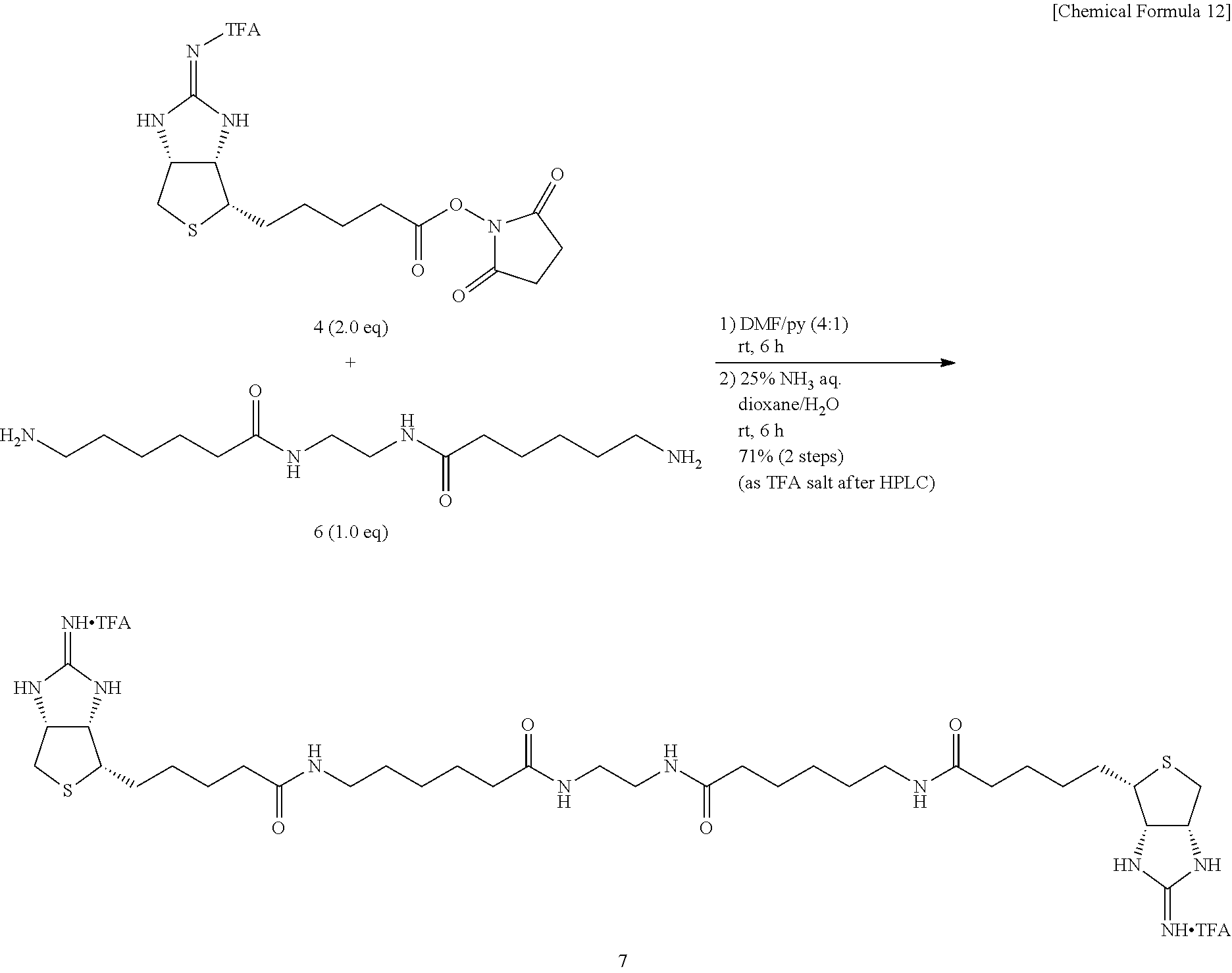

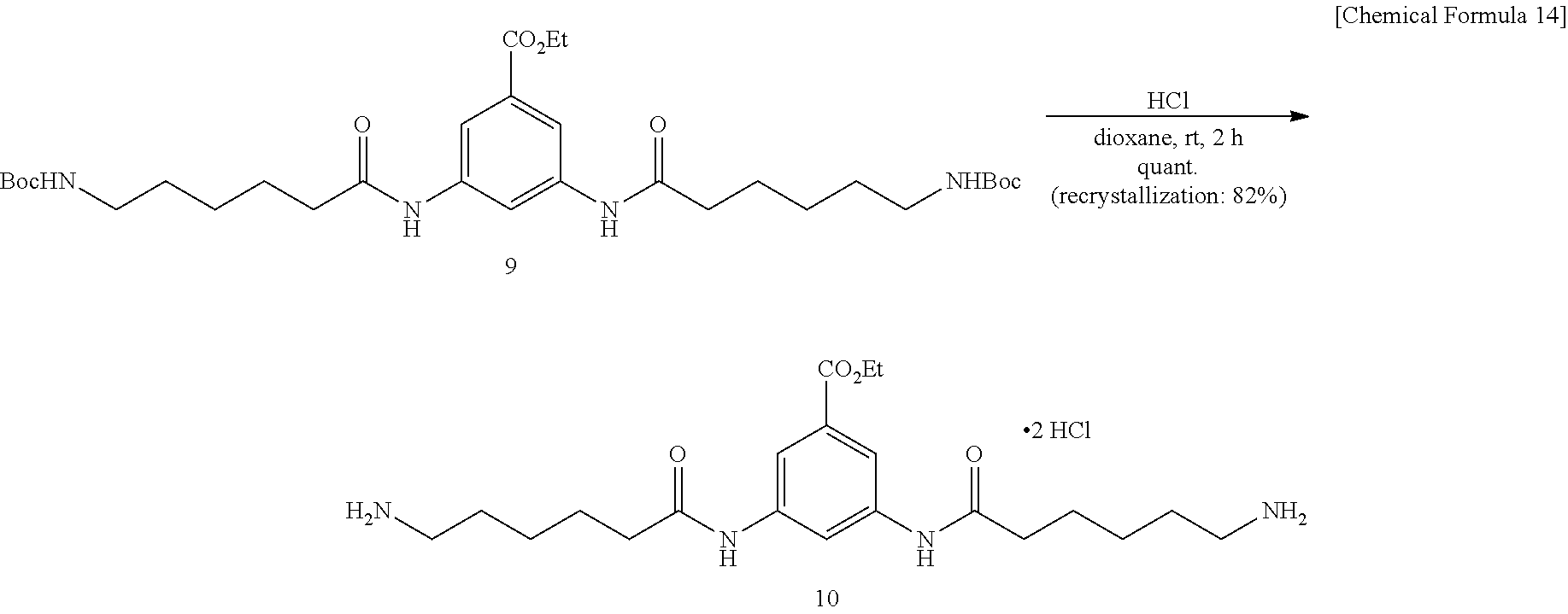



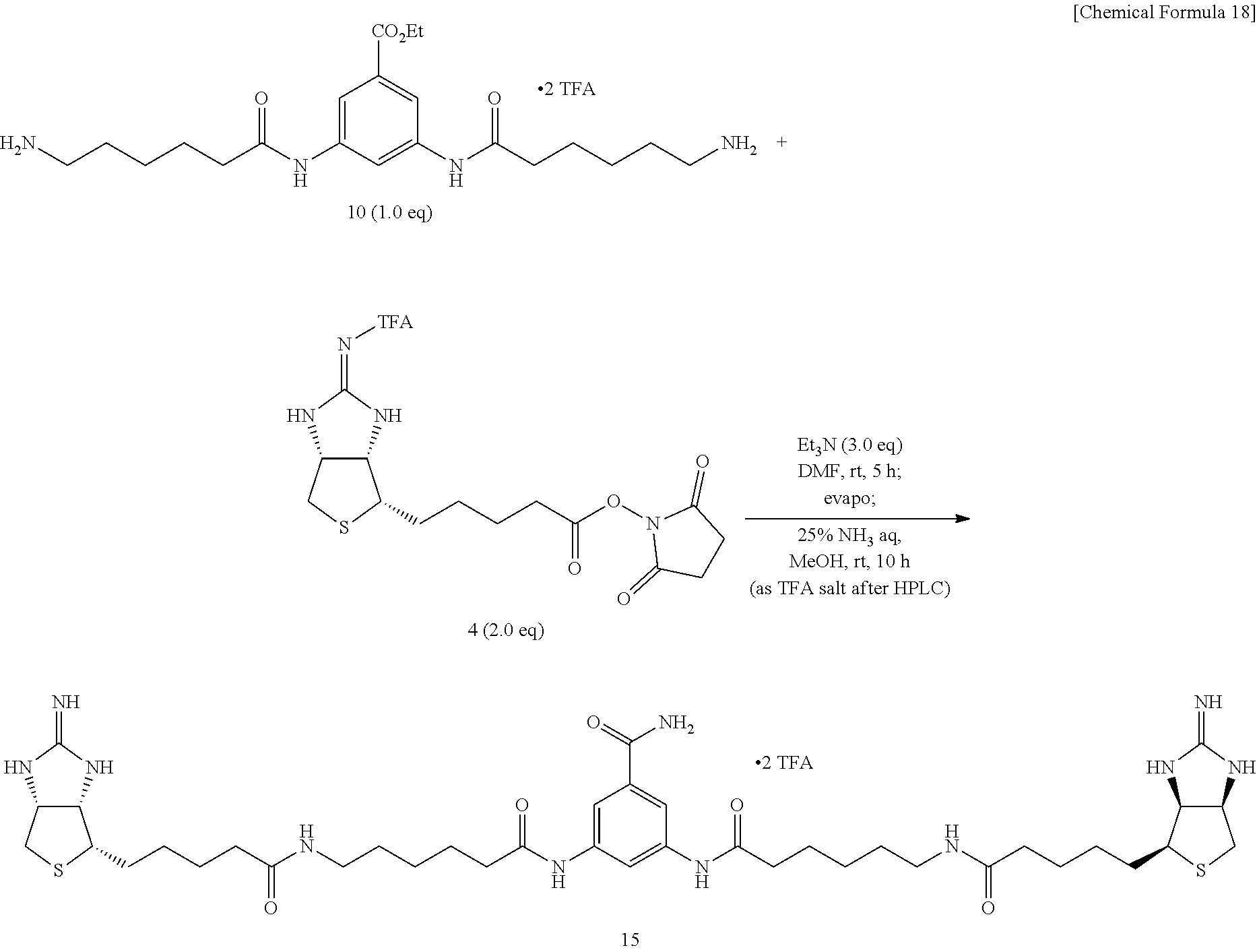
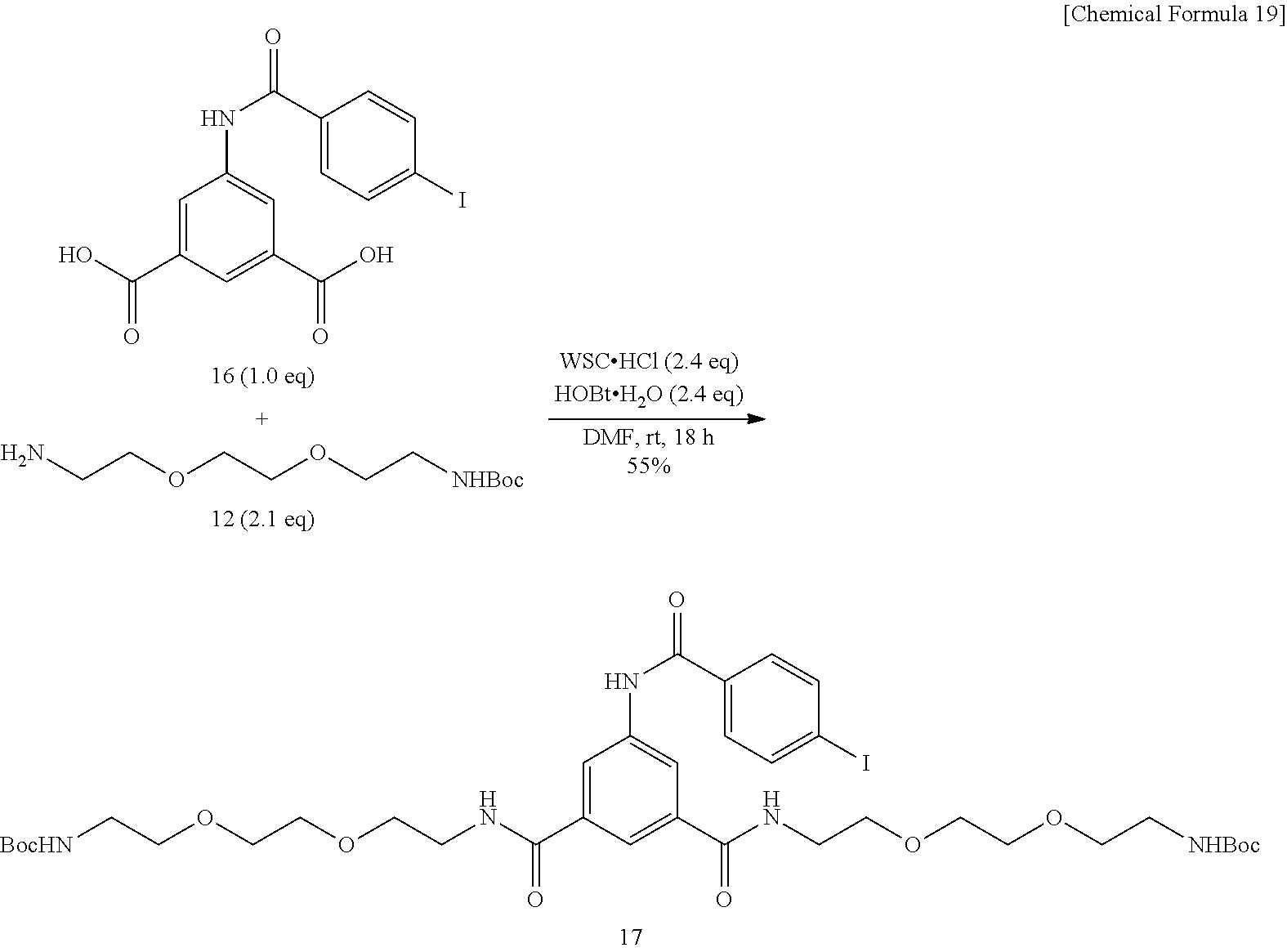

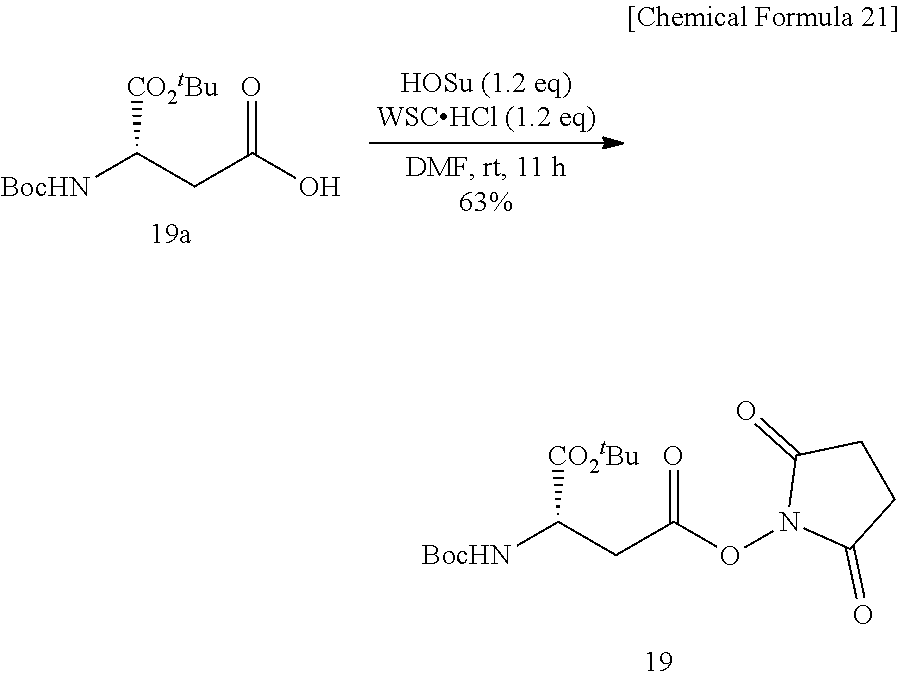
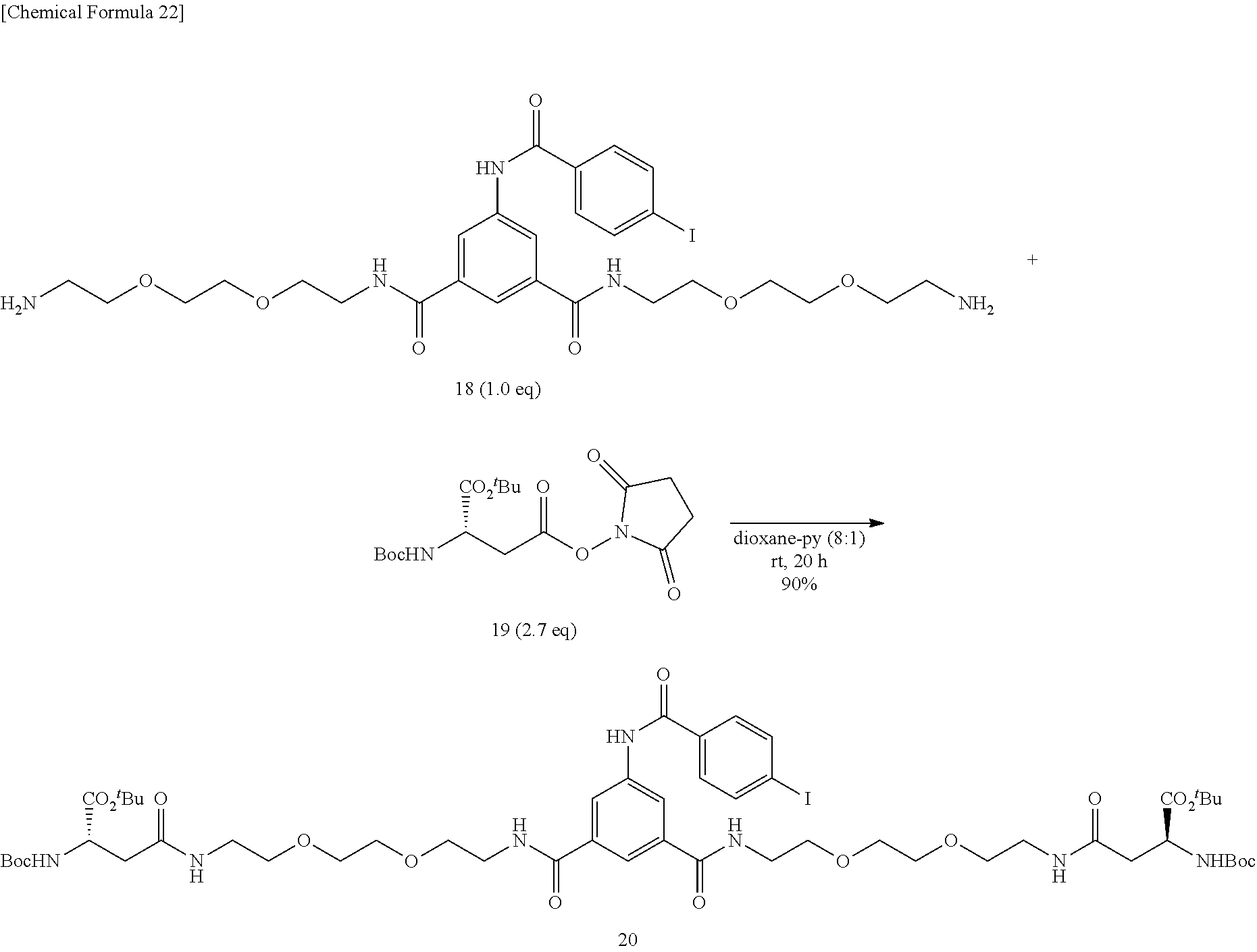
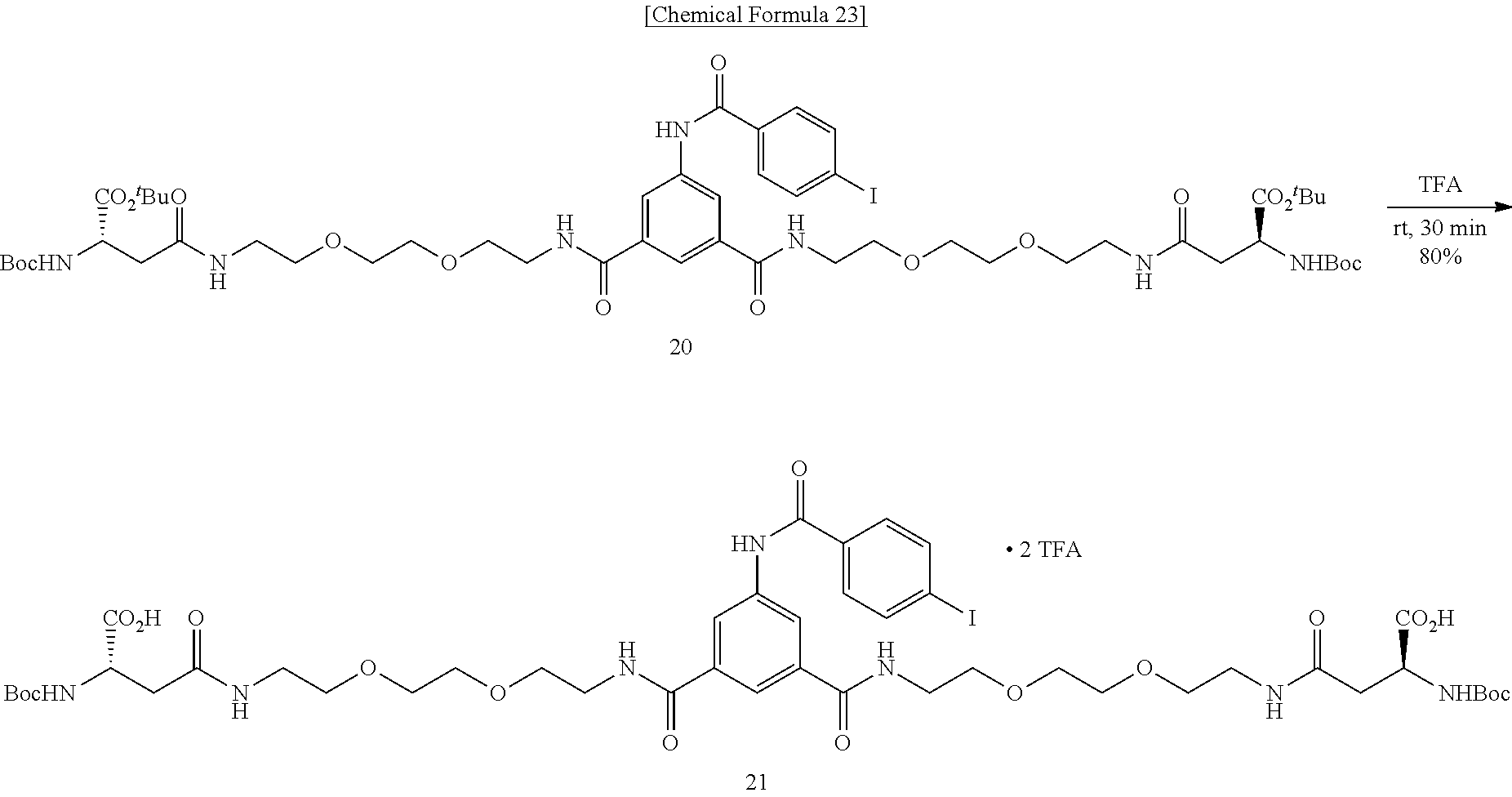
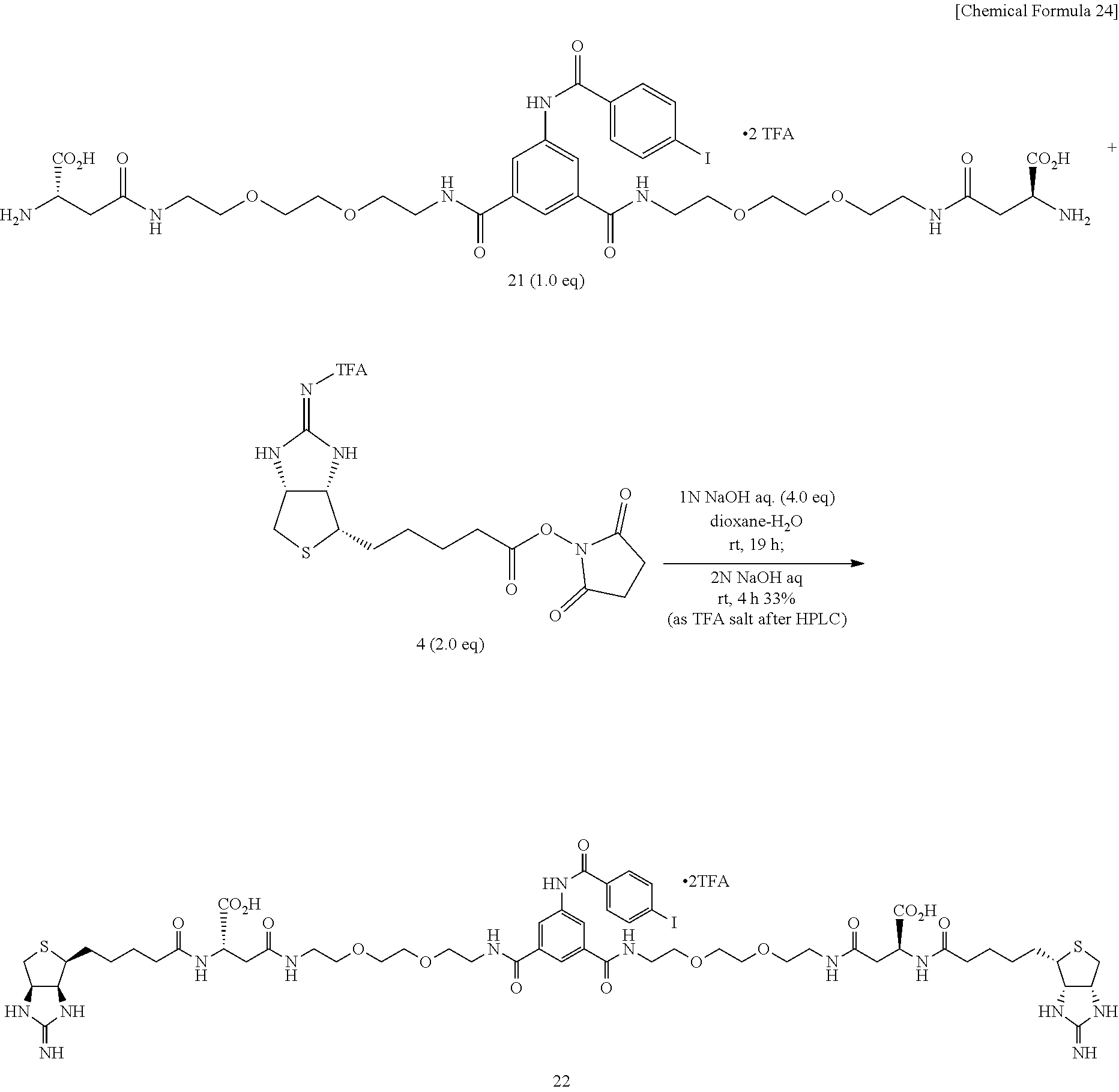
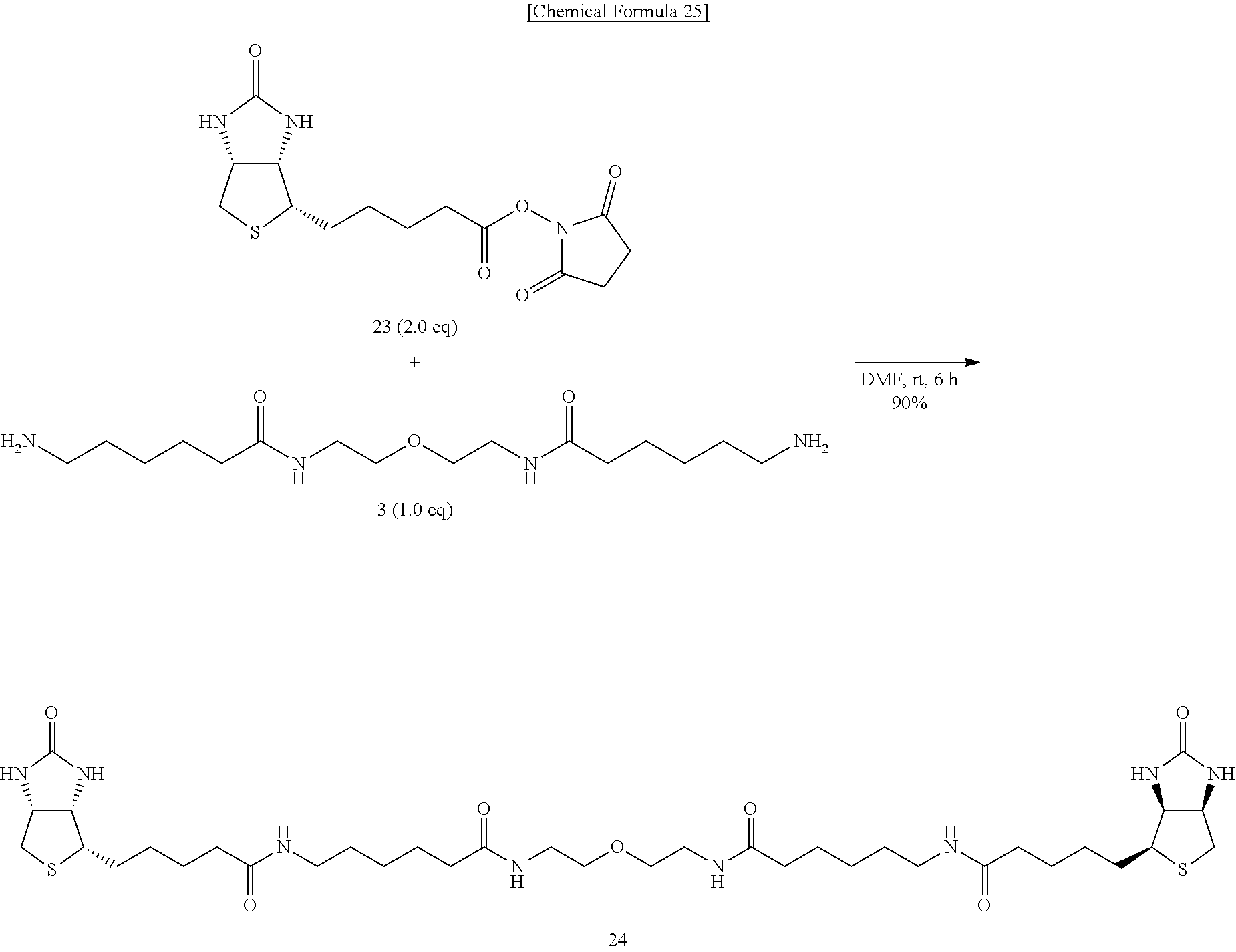
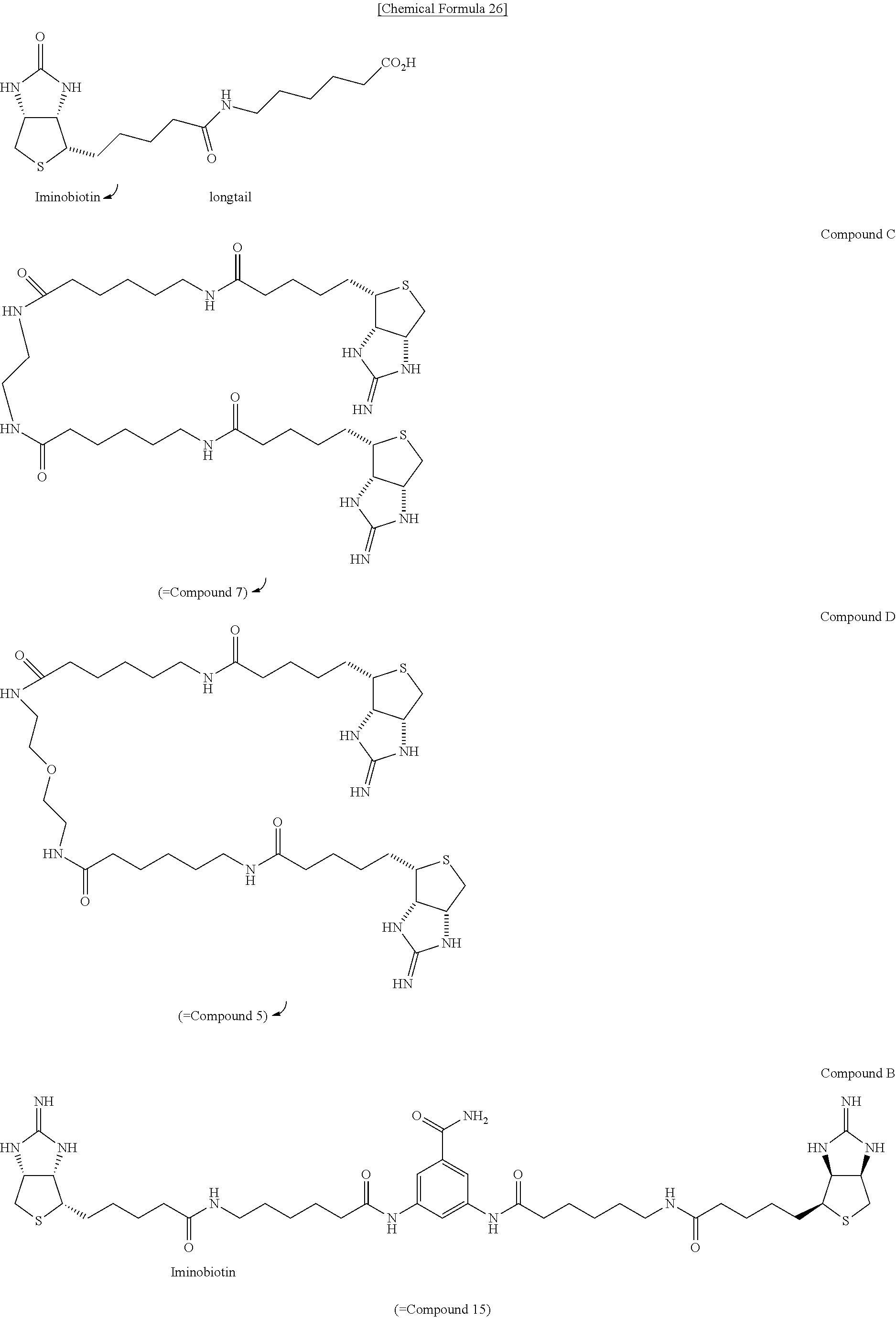
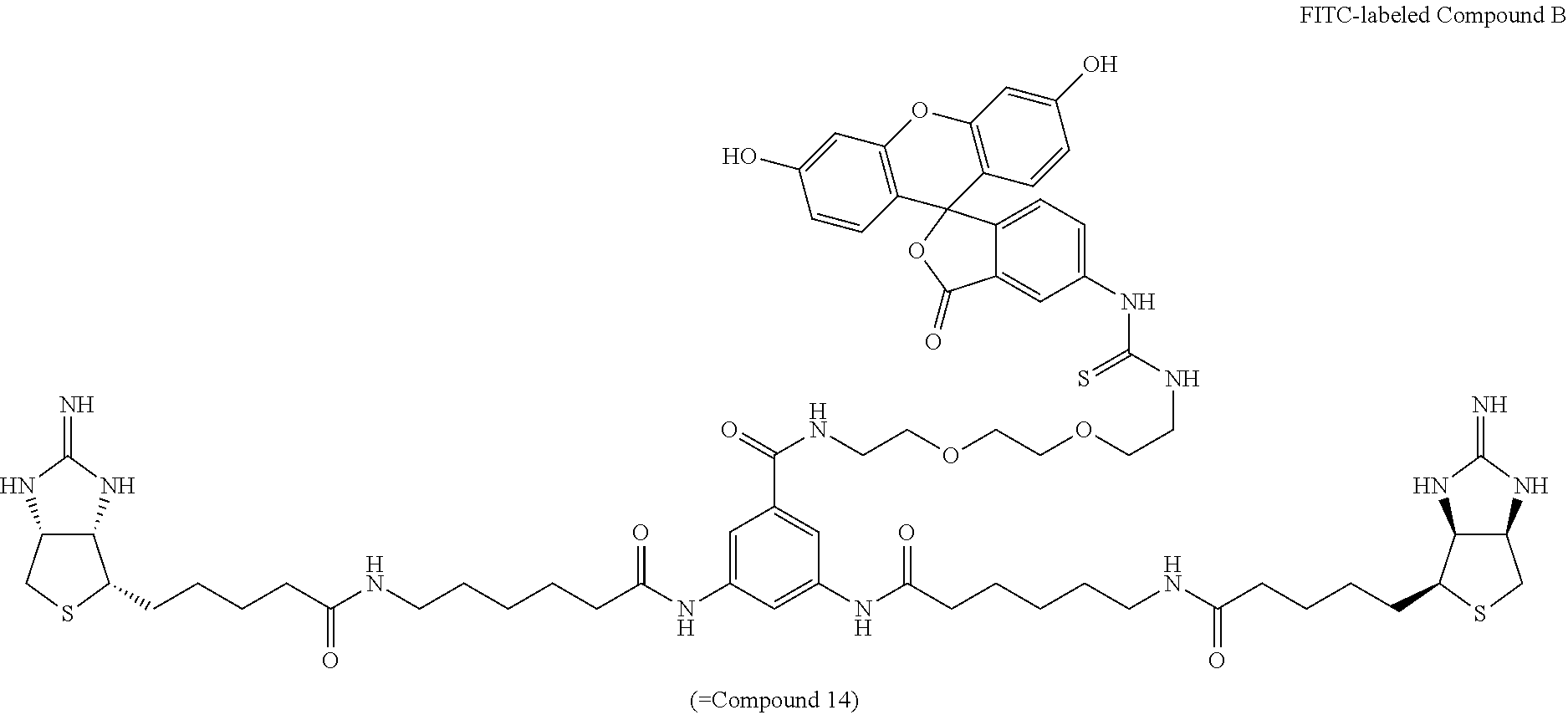
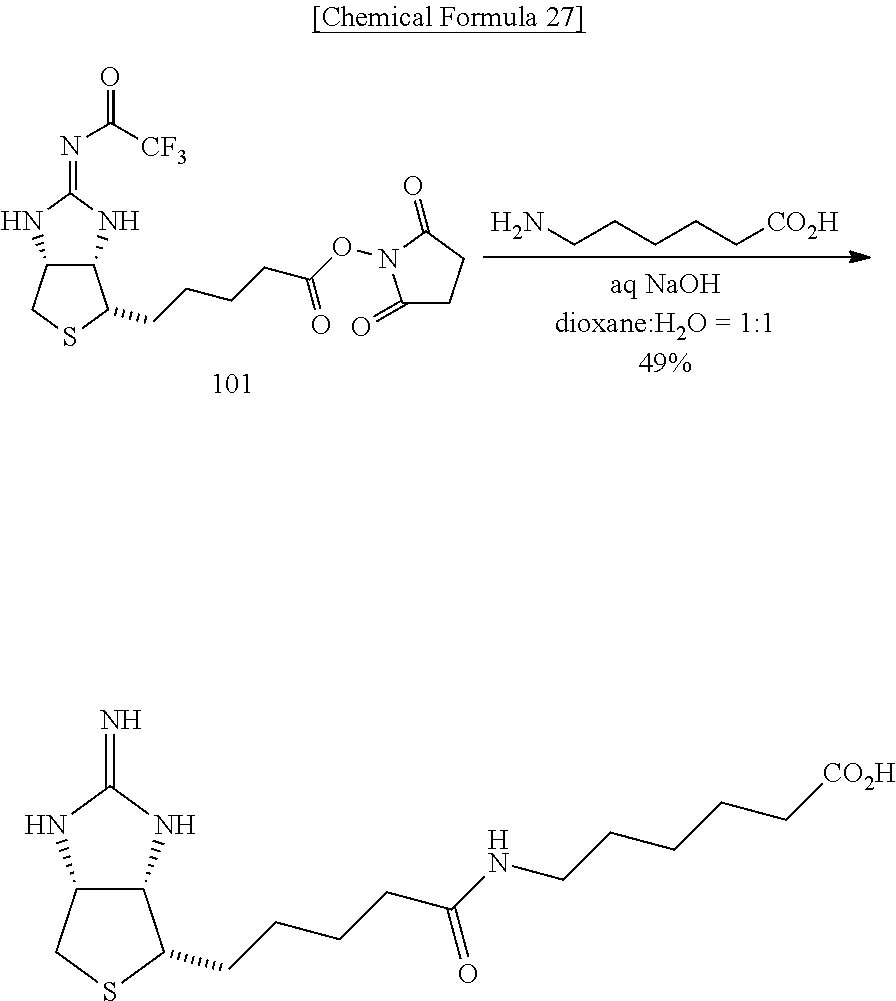




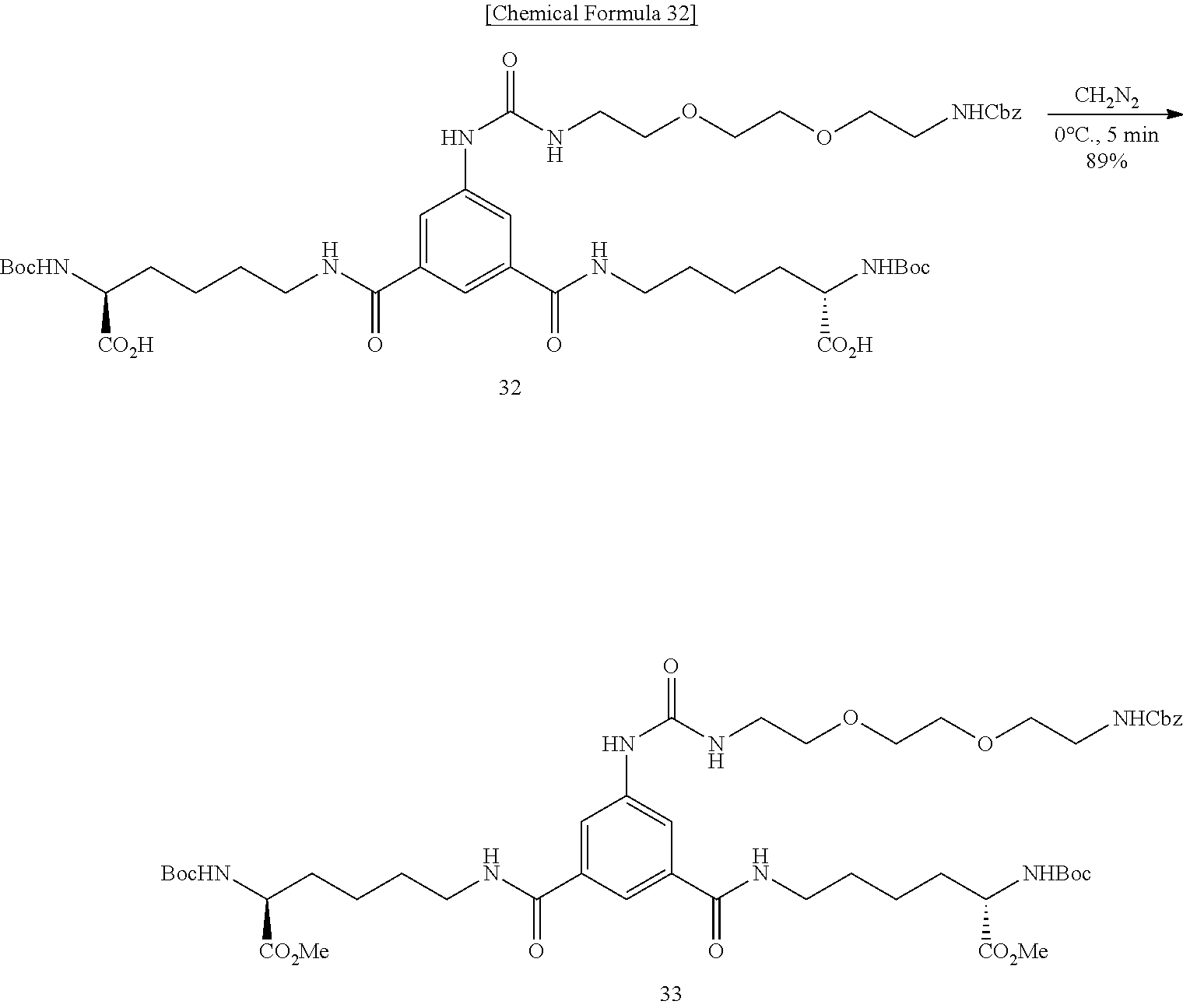
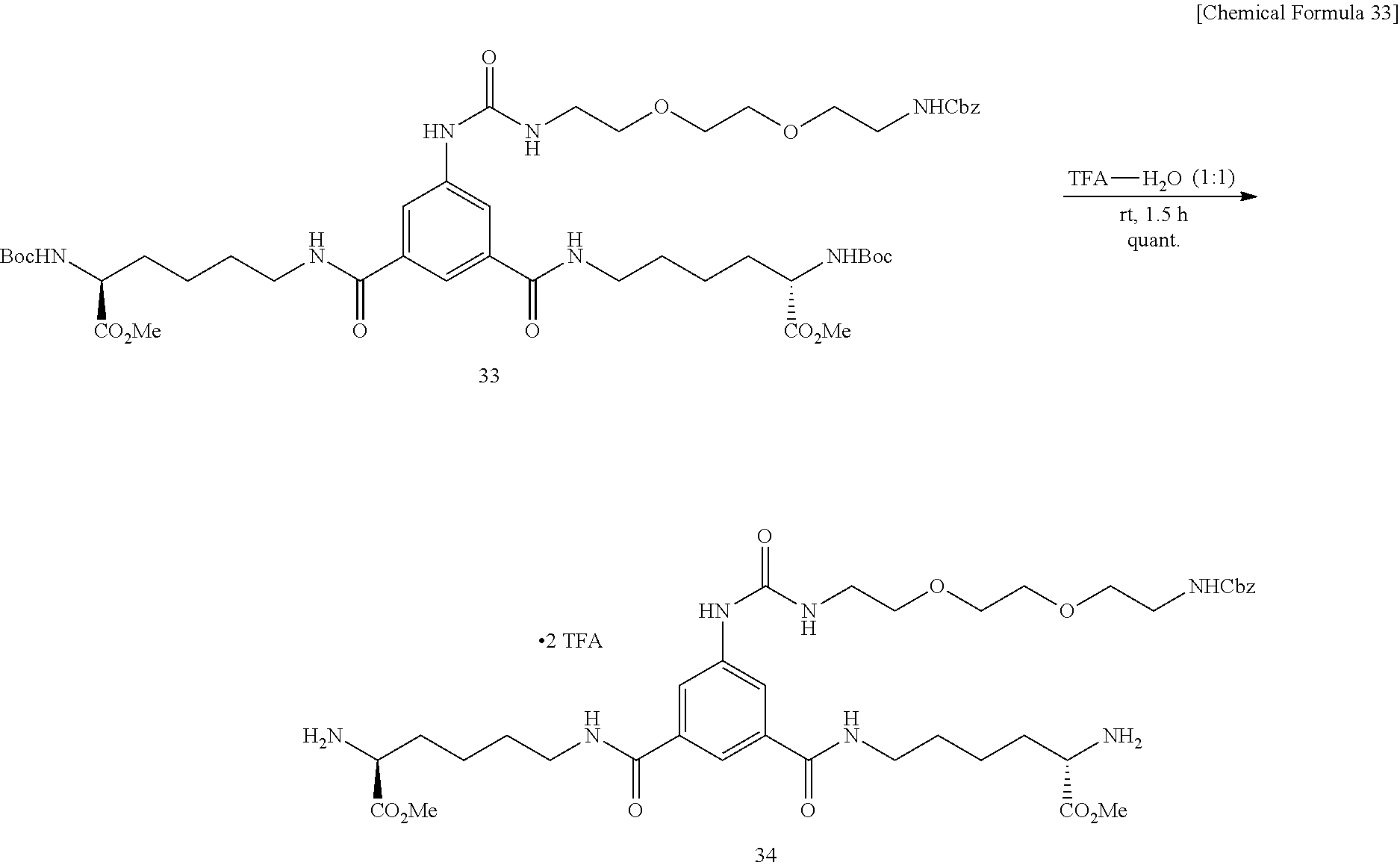
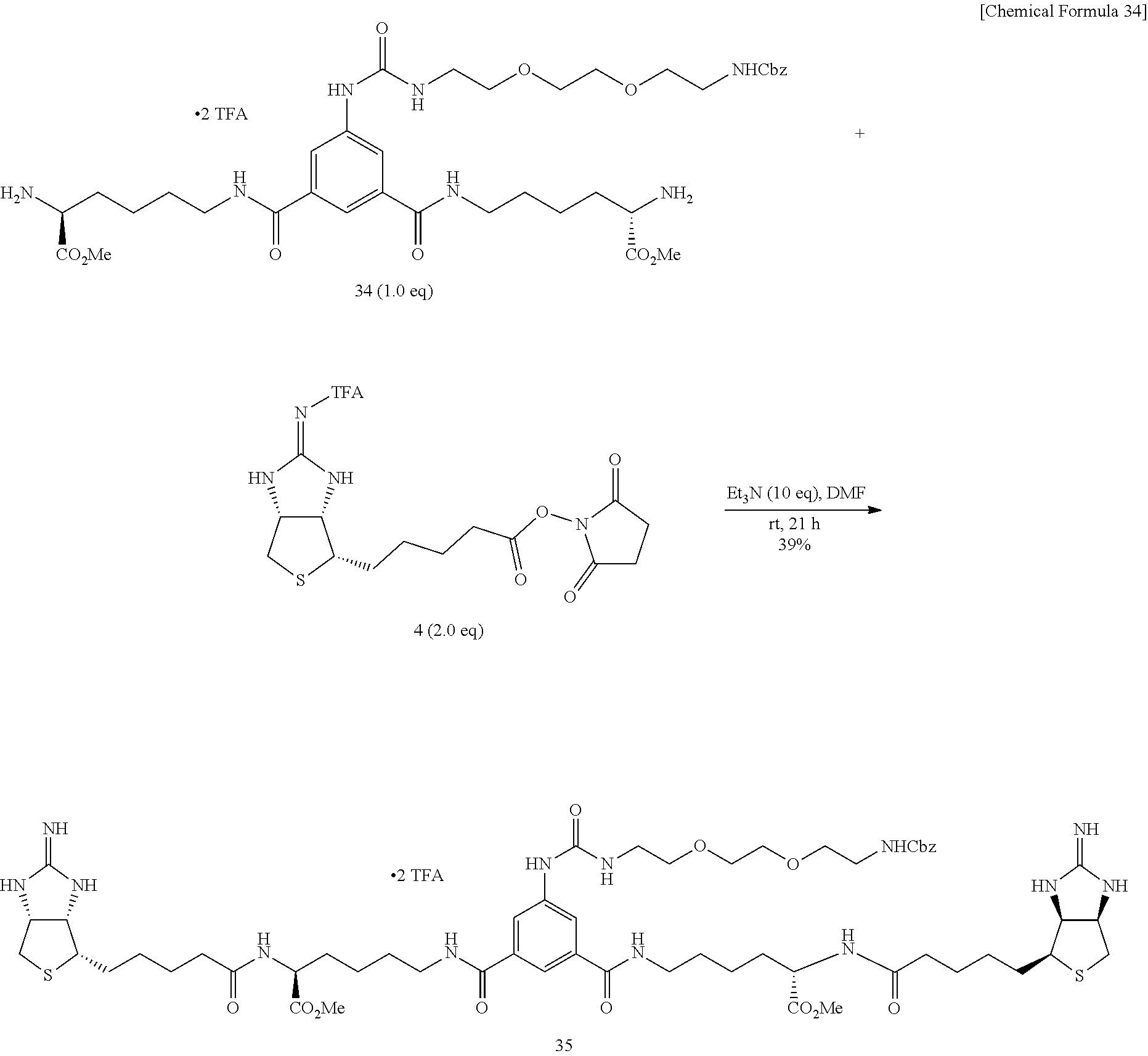
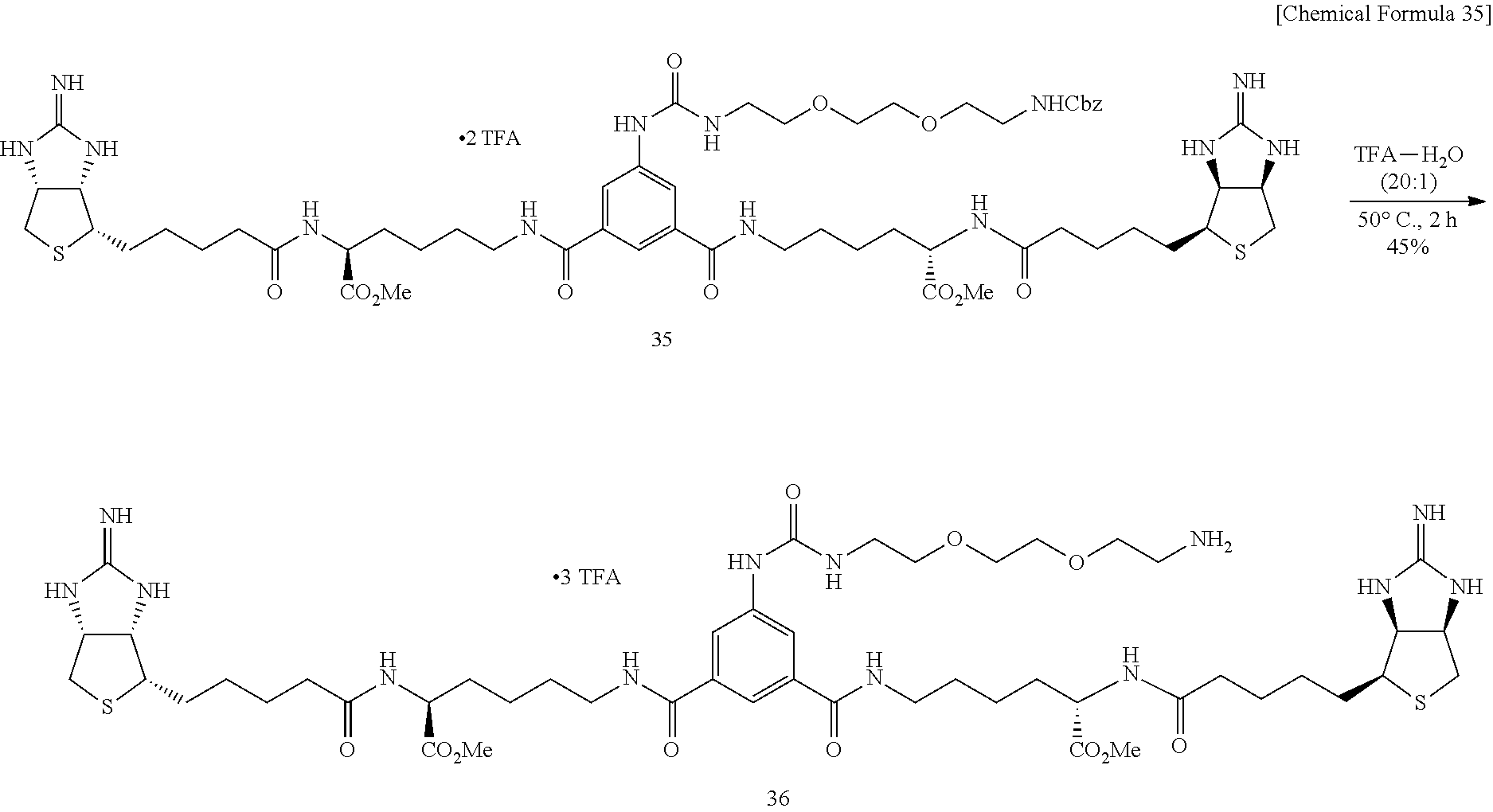




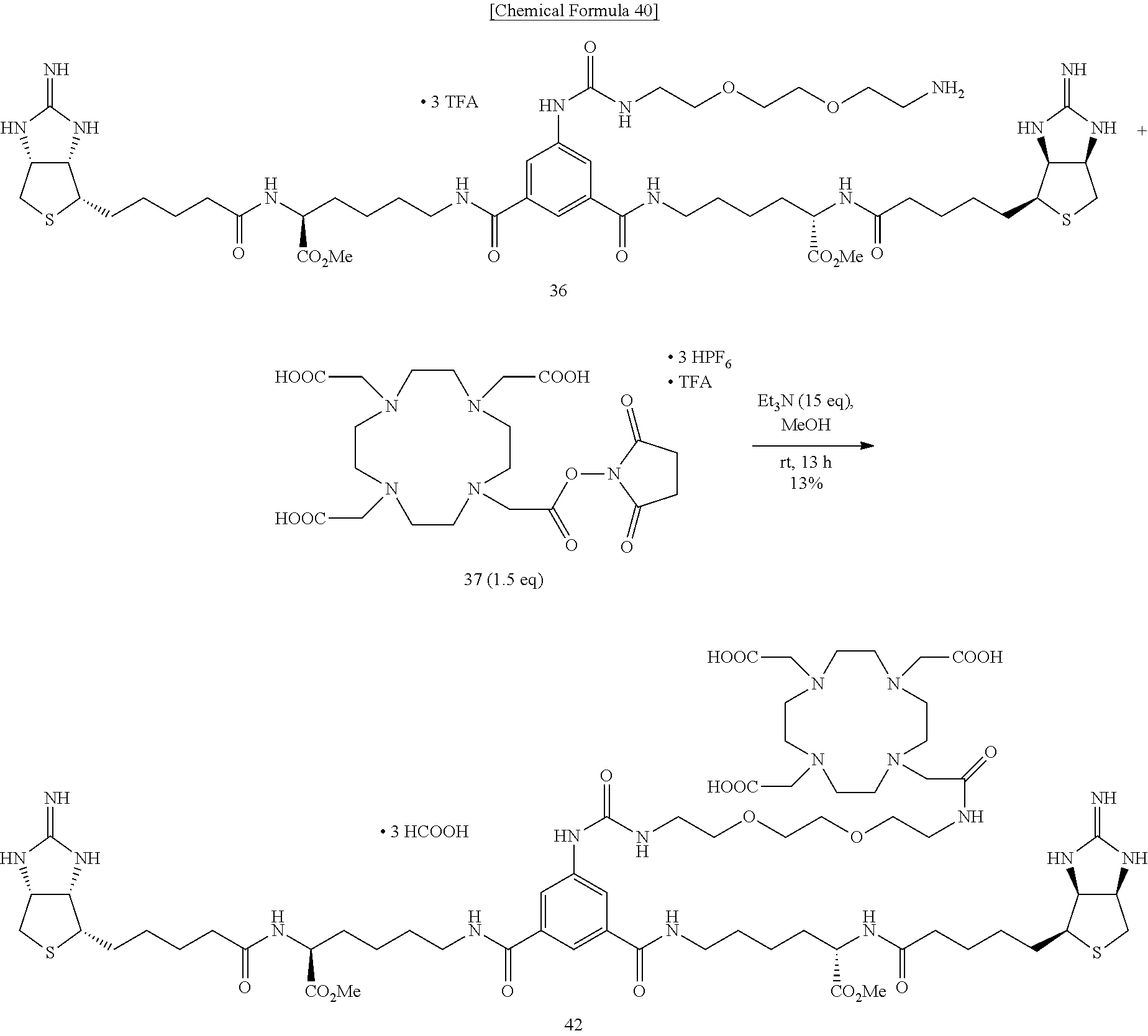
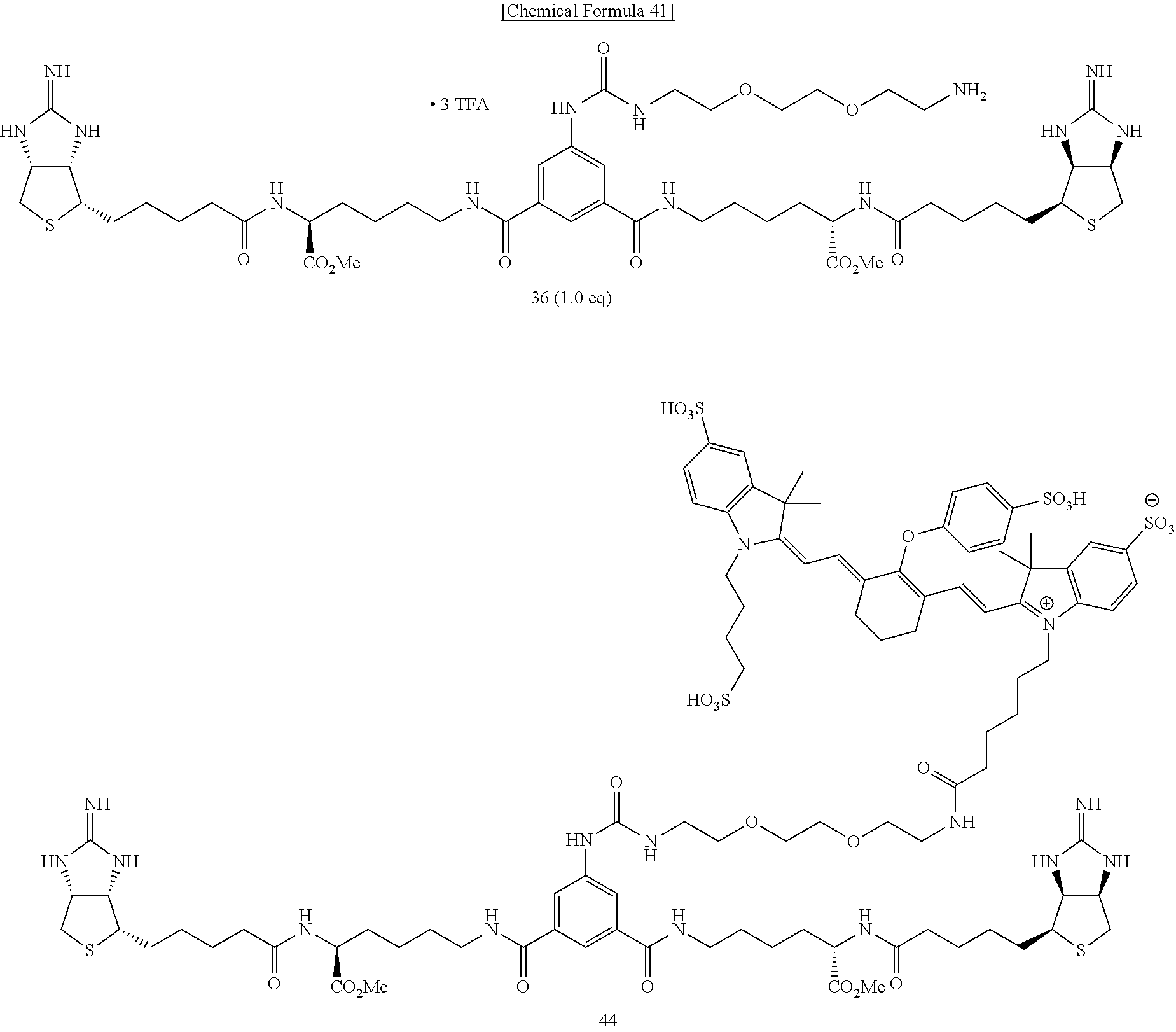
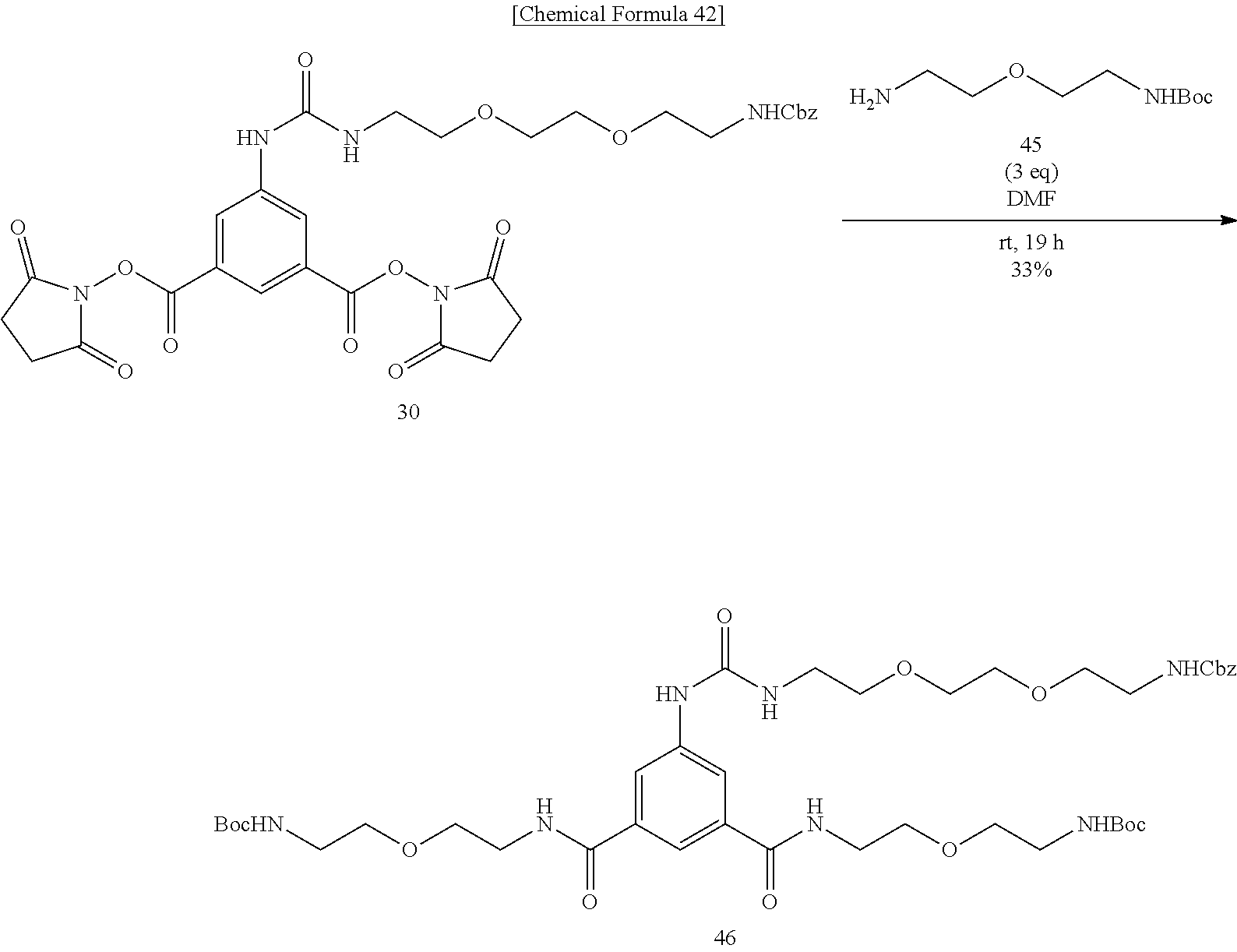

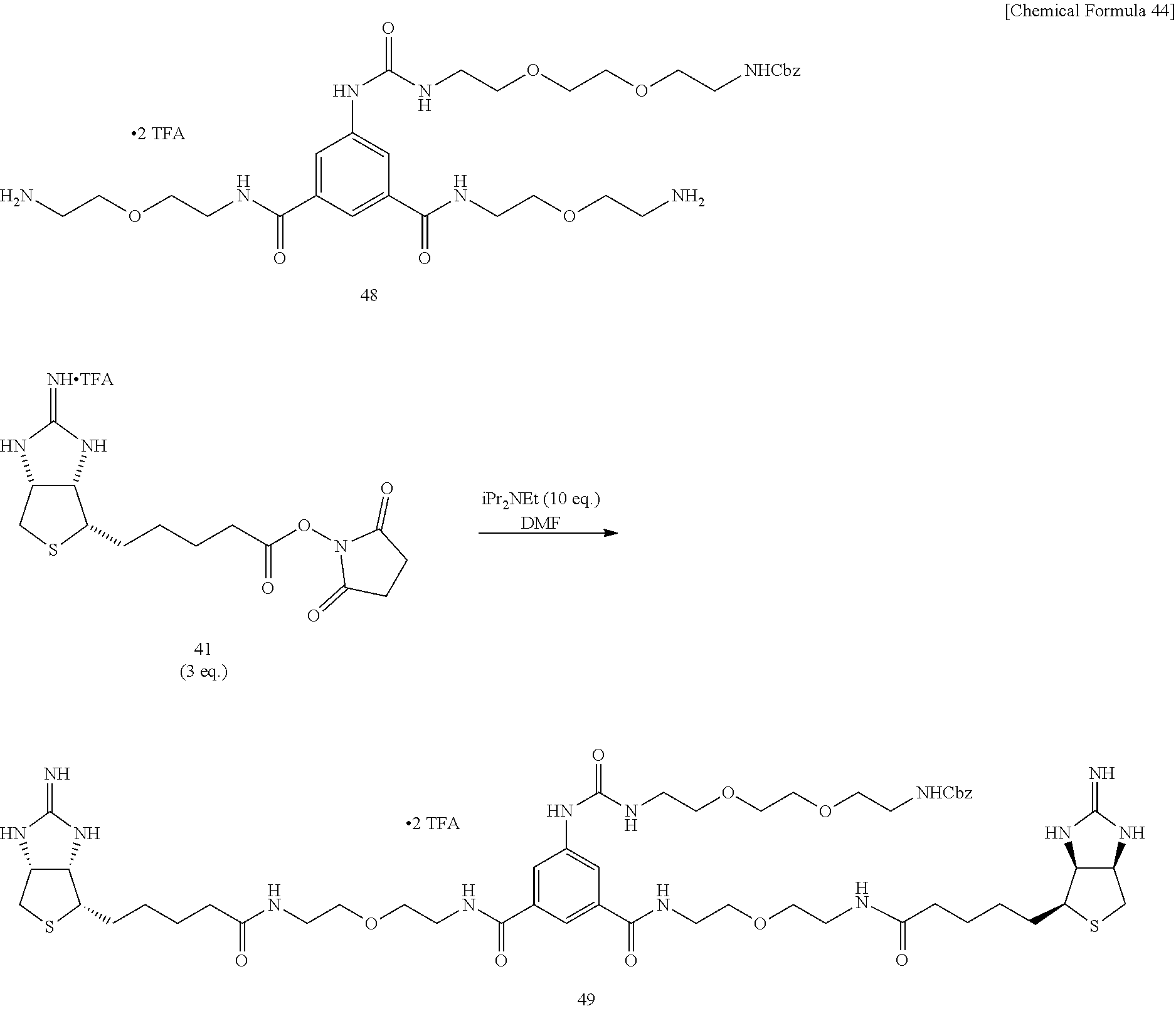
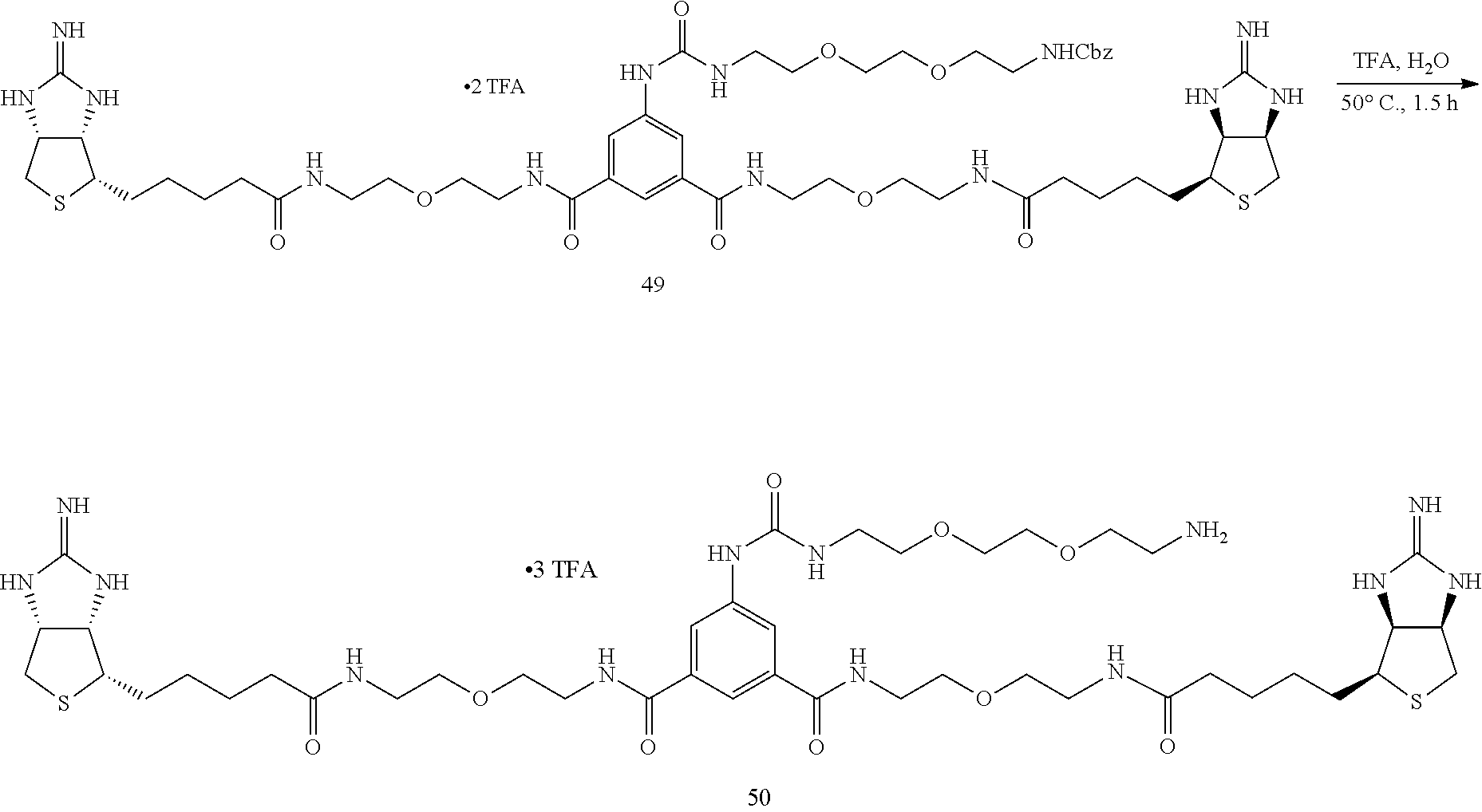
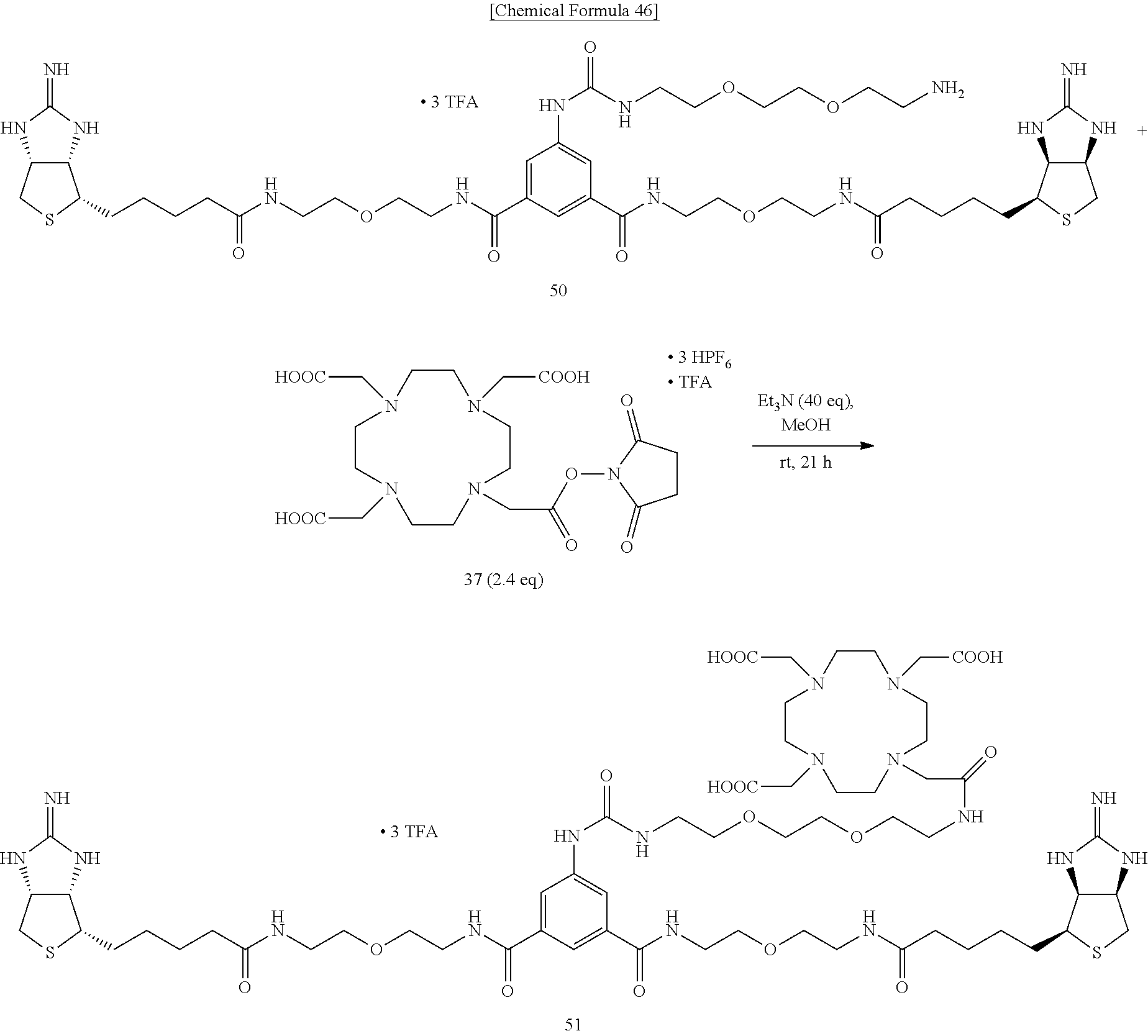
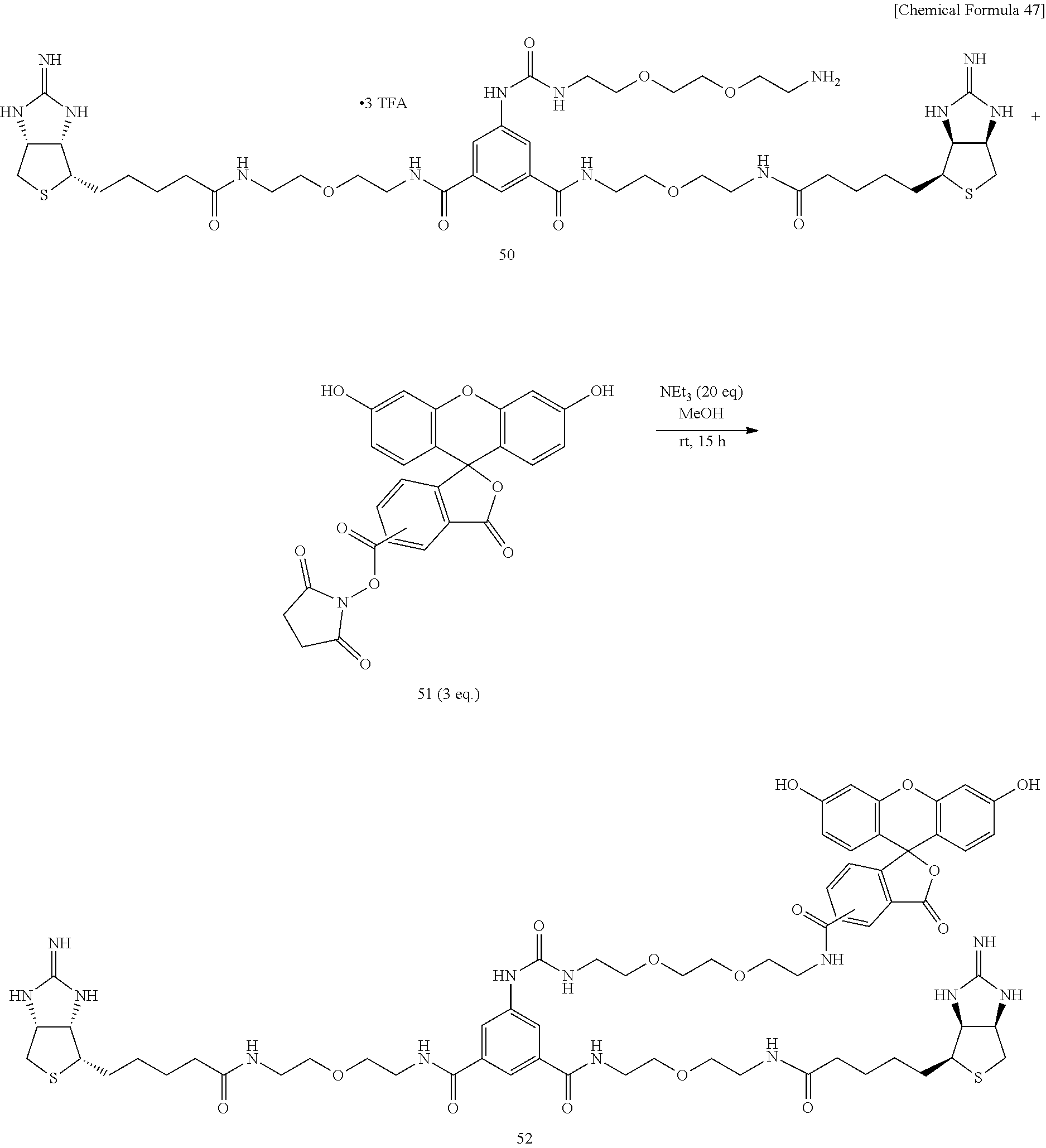

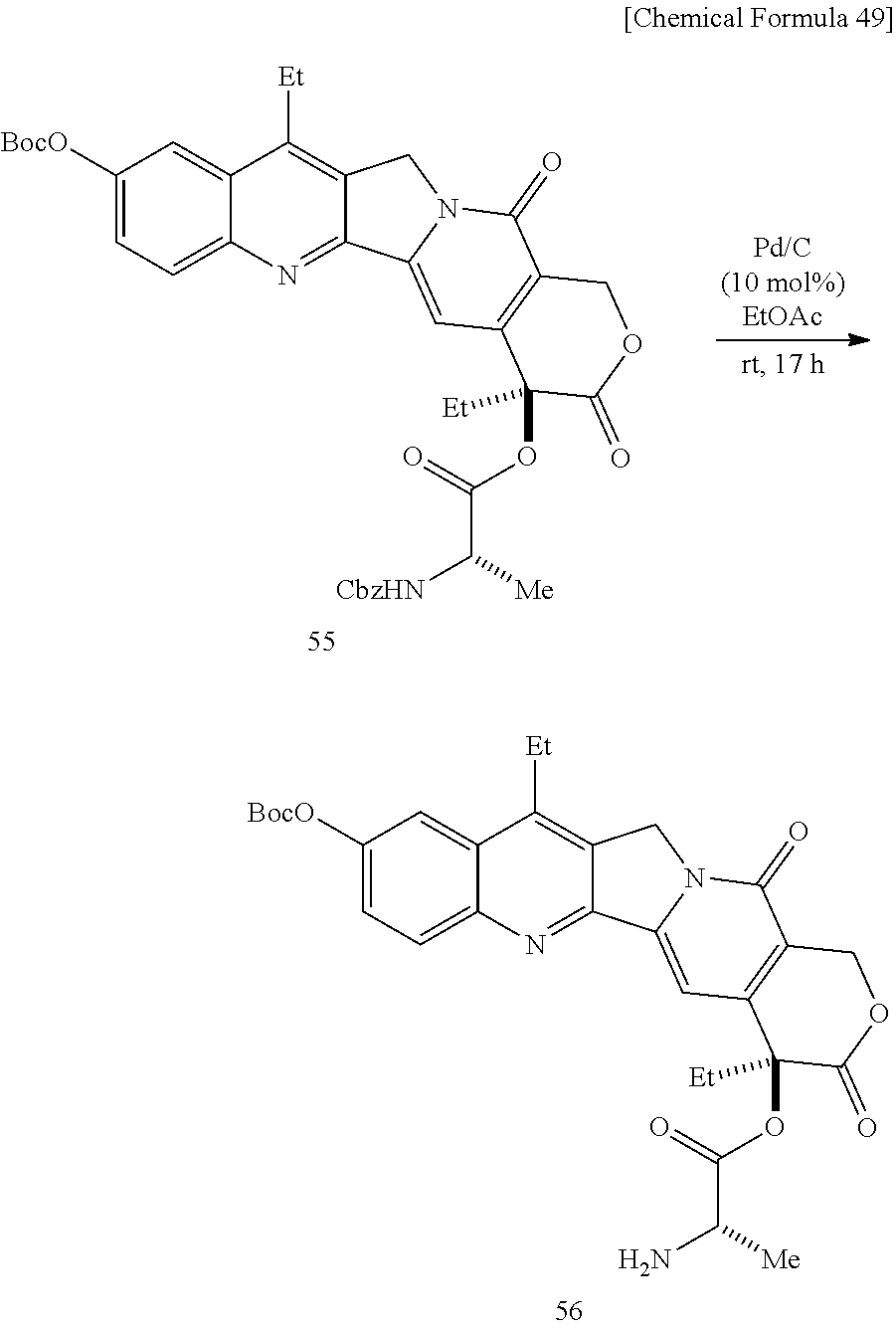

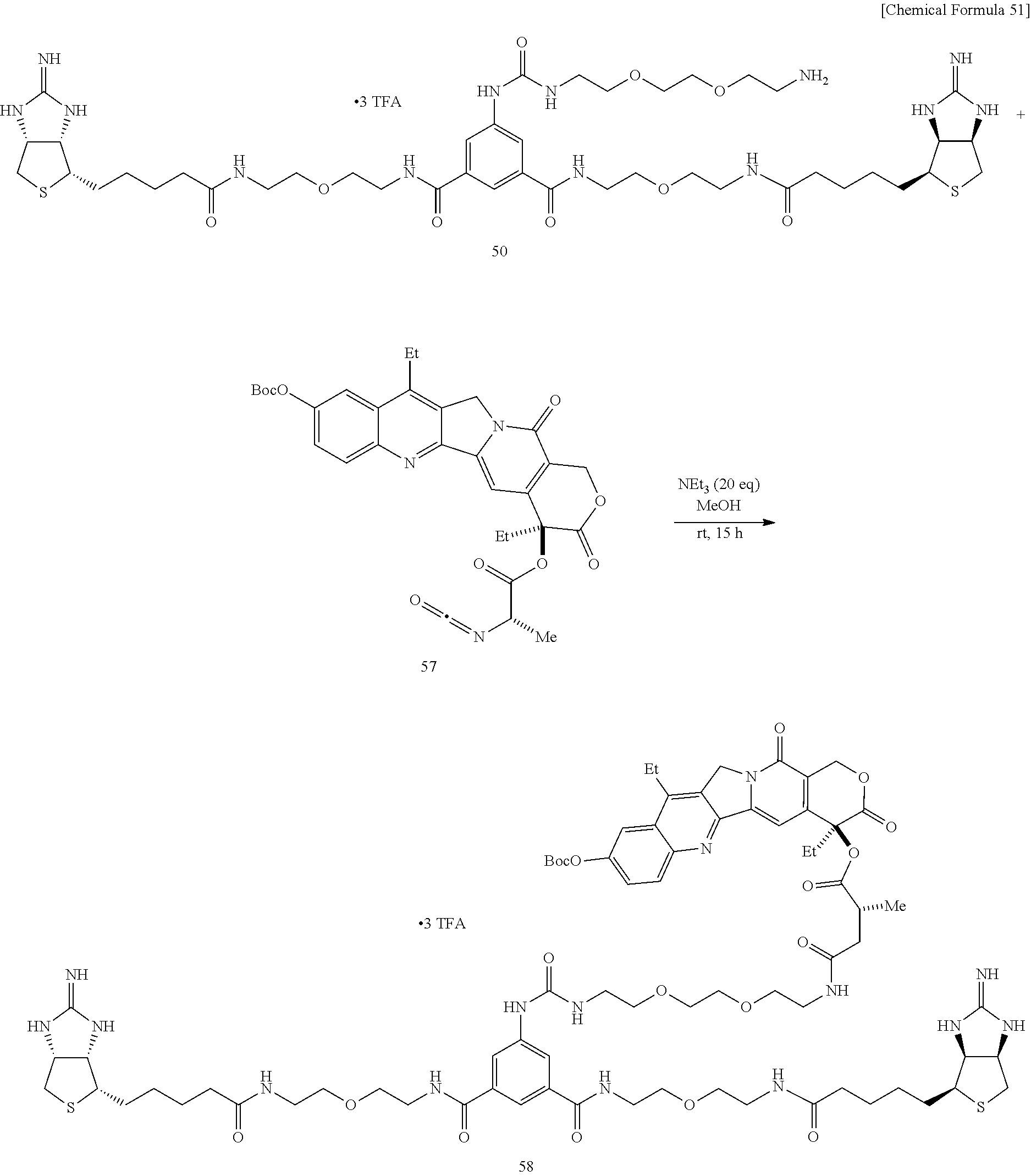


D00001

D00002
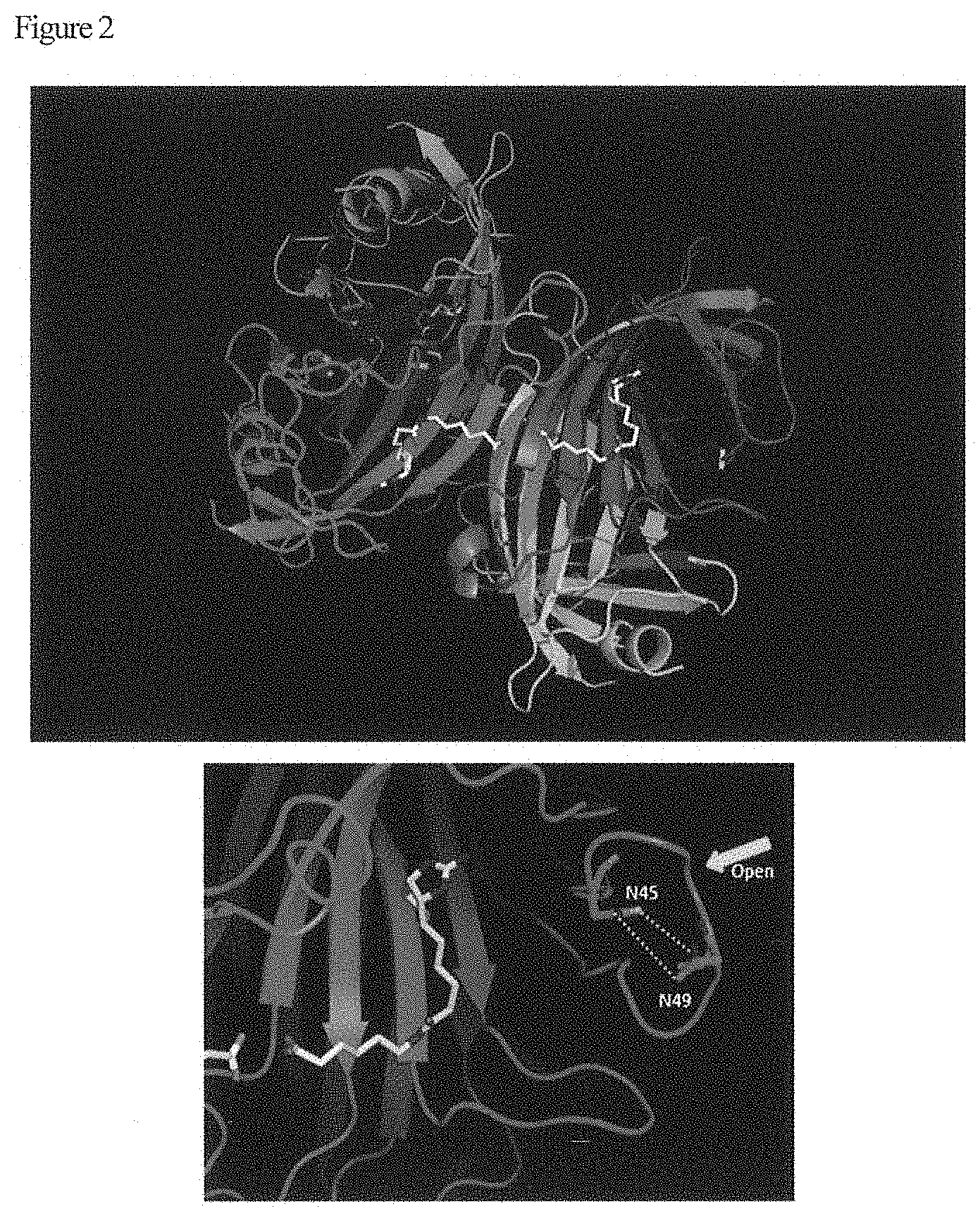
D00003
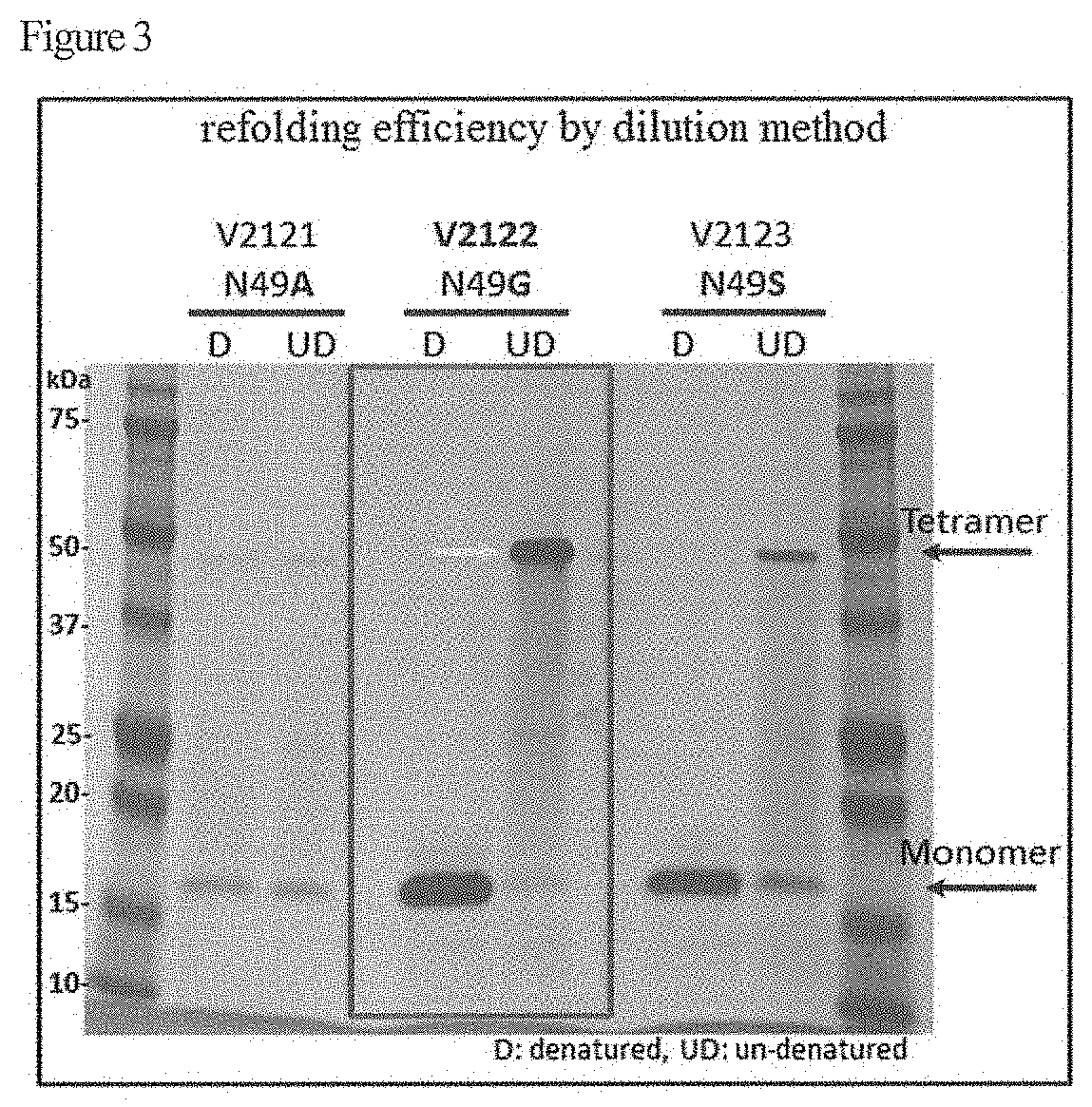
D00004

D00005

D00006
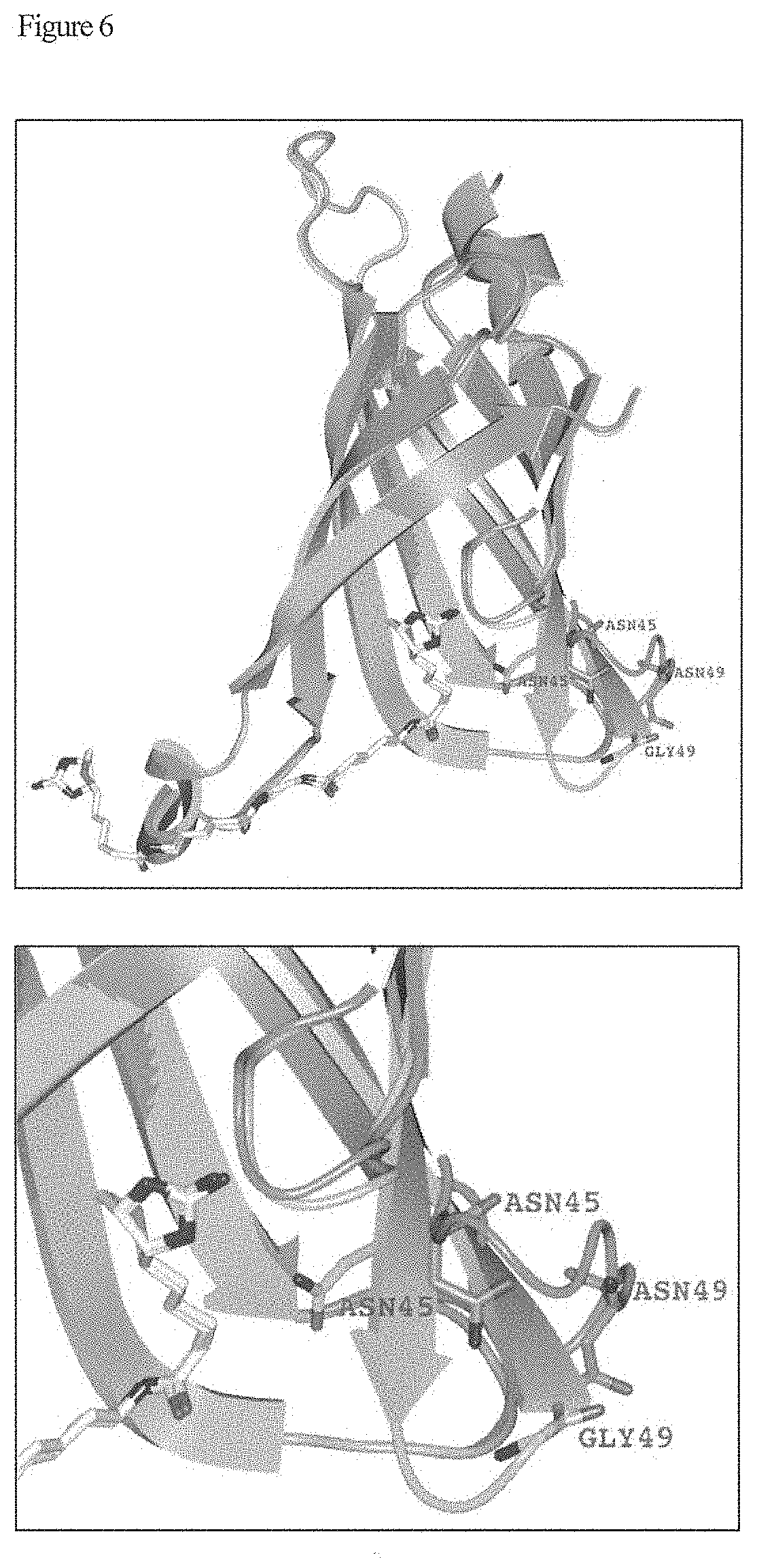
D00007
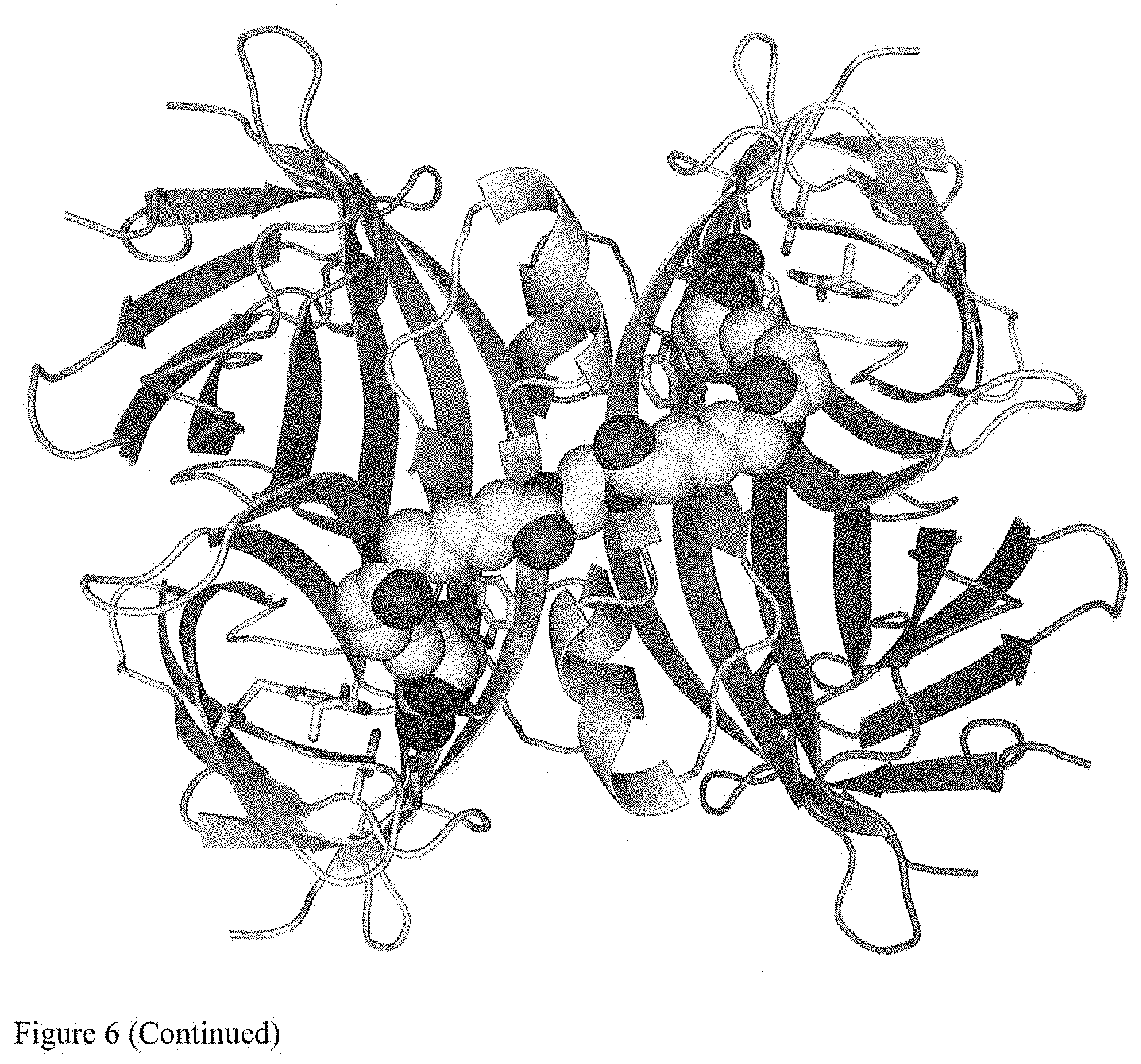
D00008
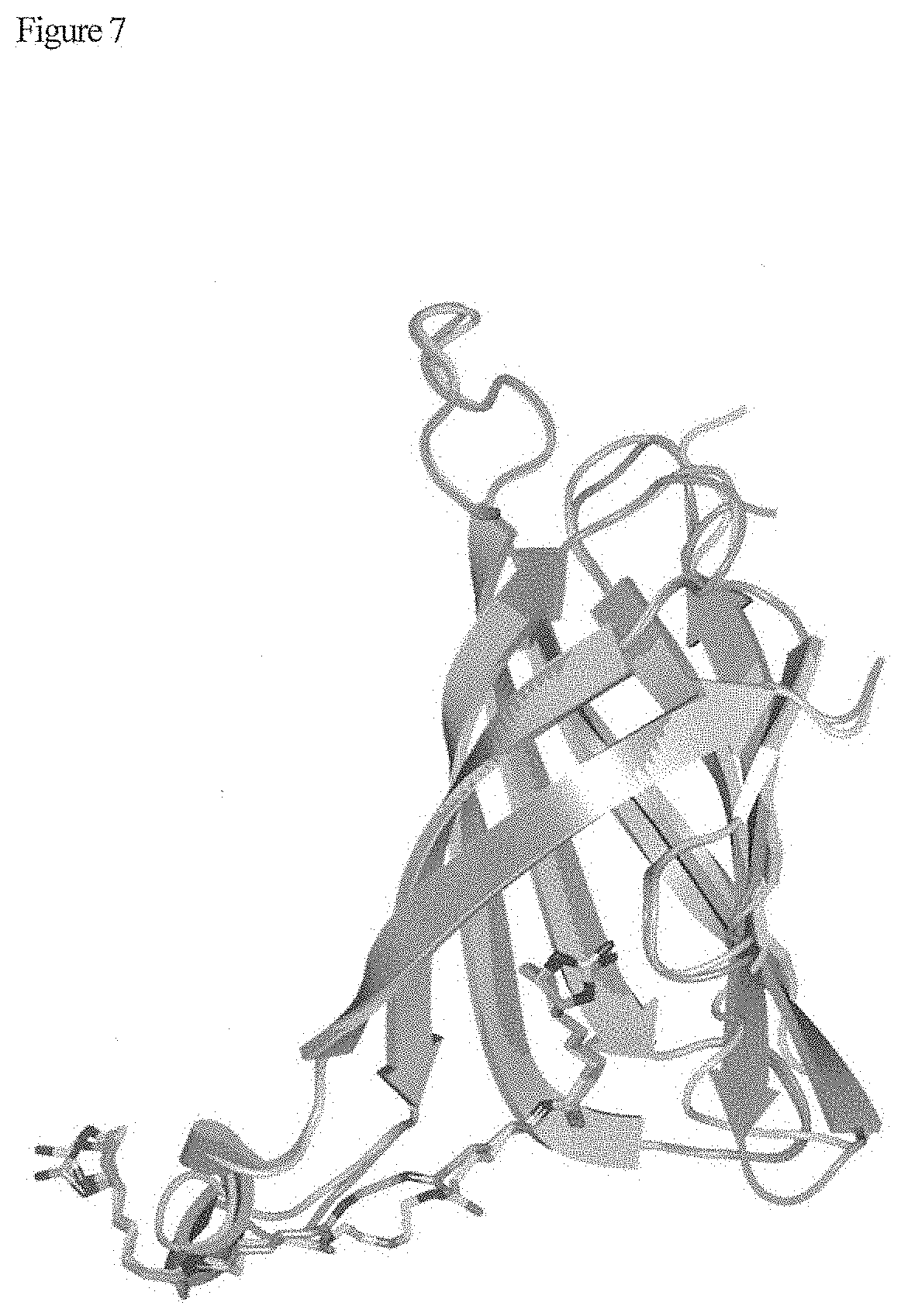
D00009
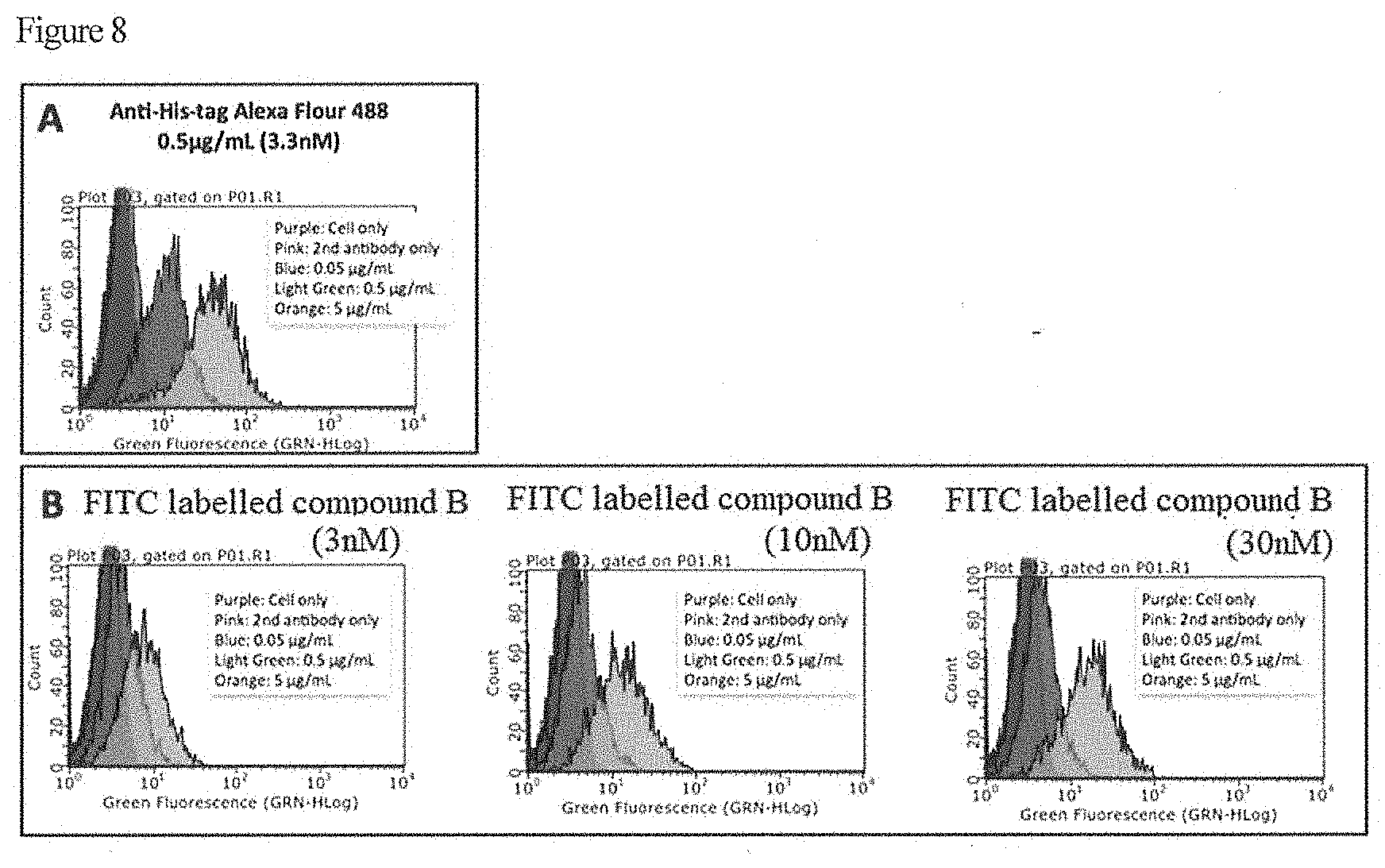
D00010
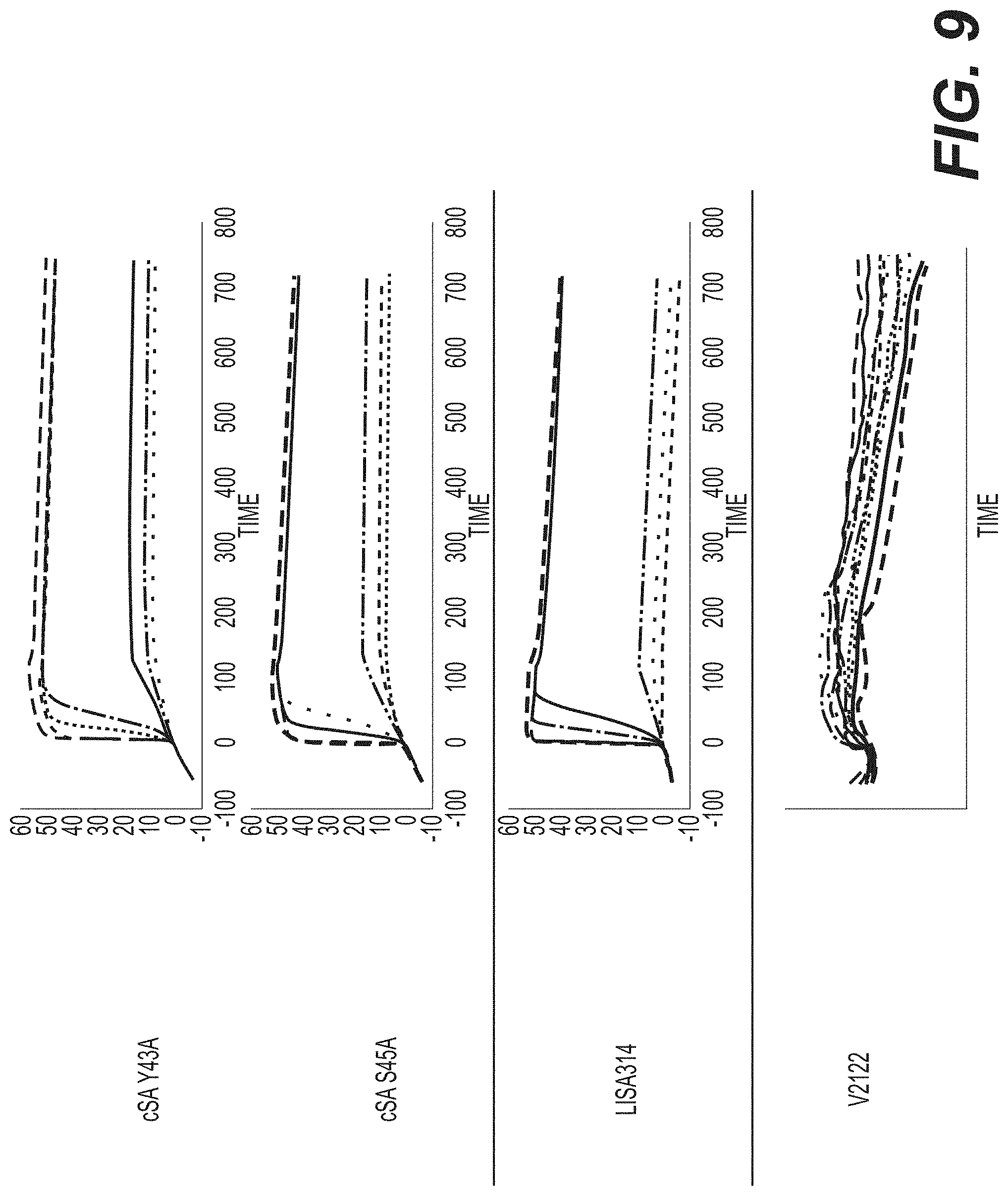
D00011

D00012
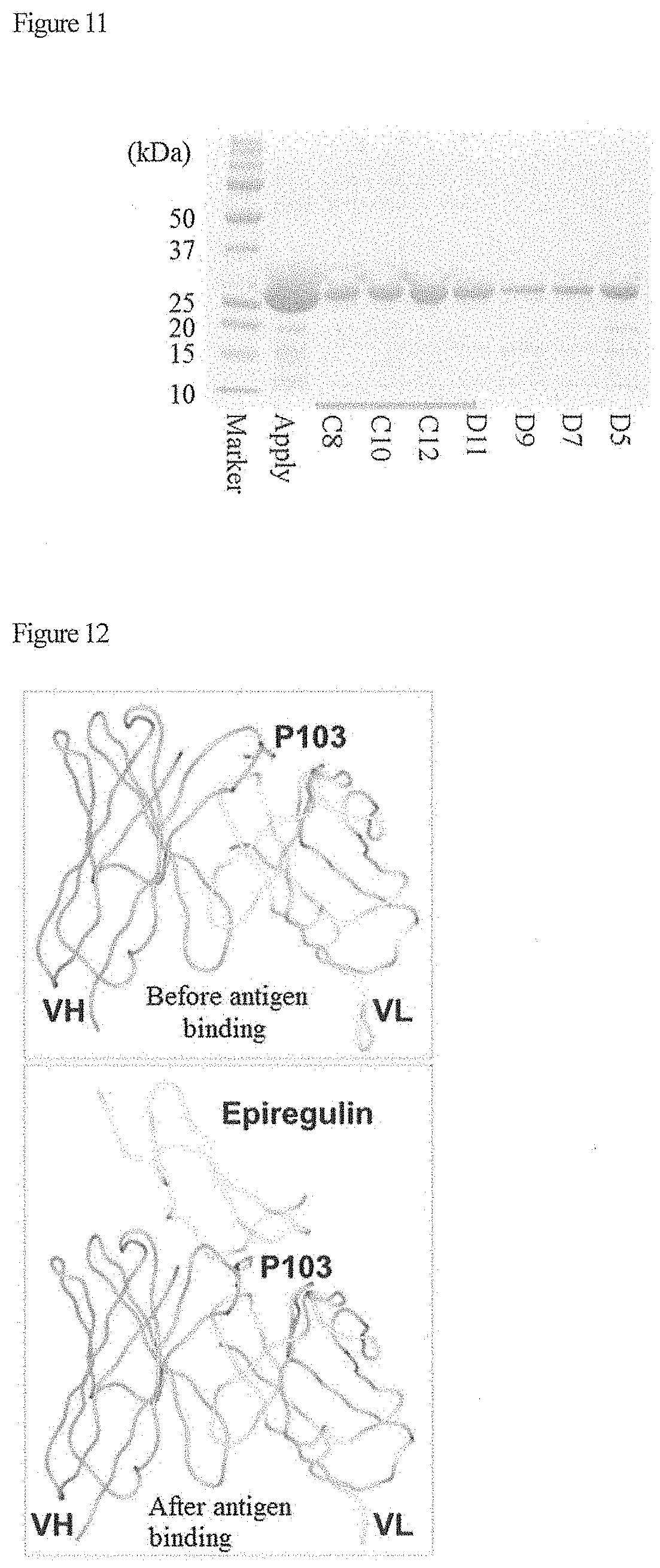
D00013
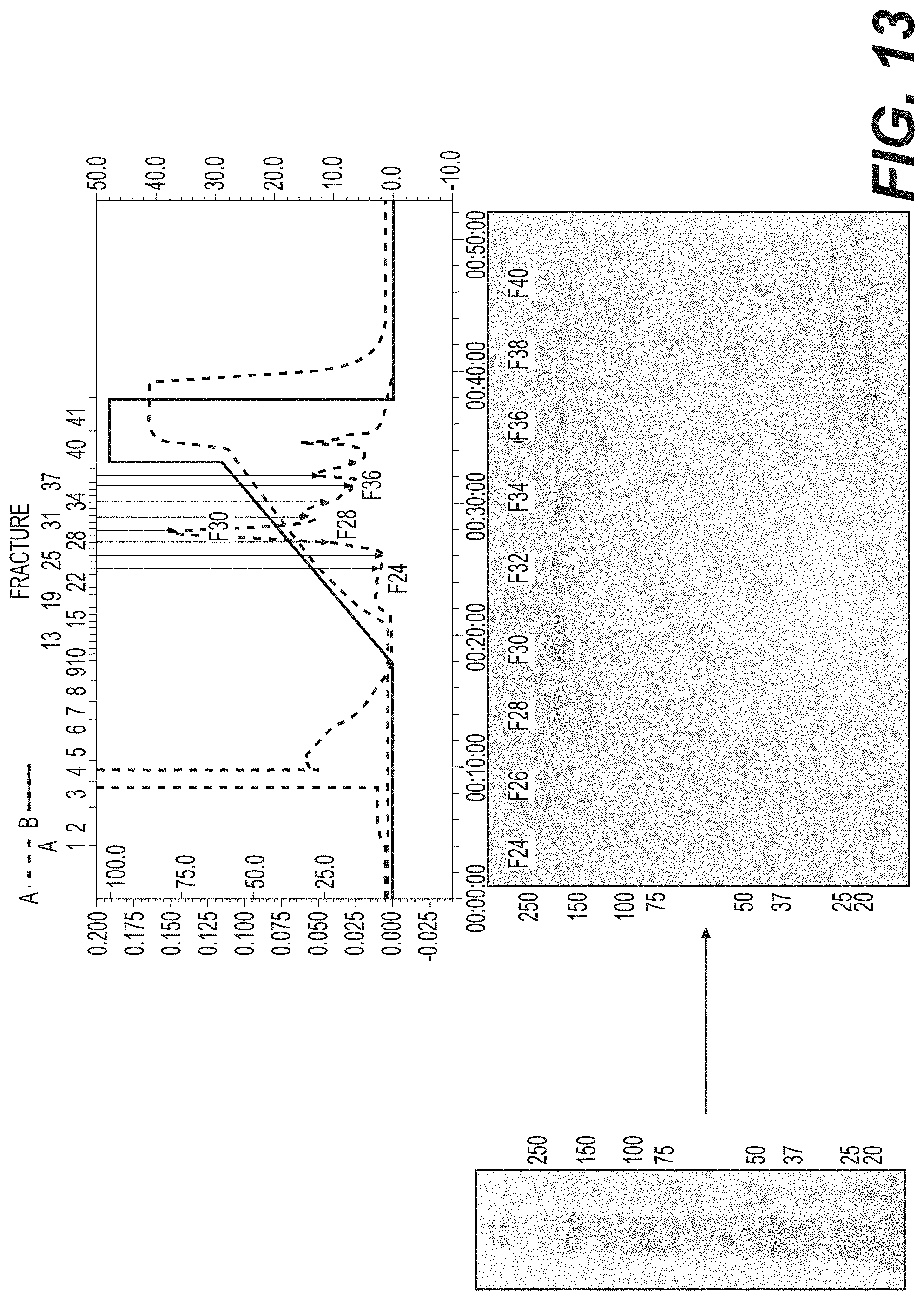
D00014
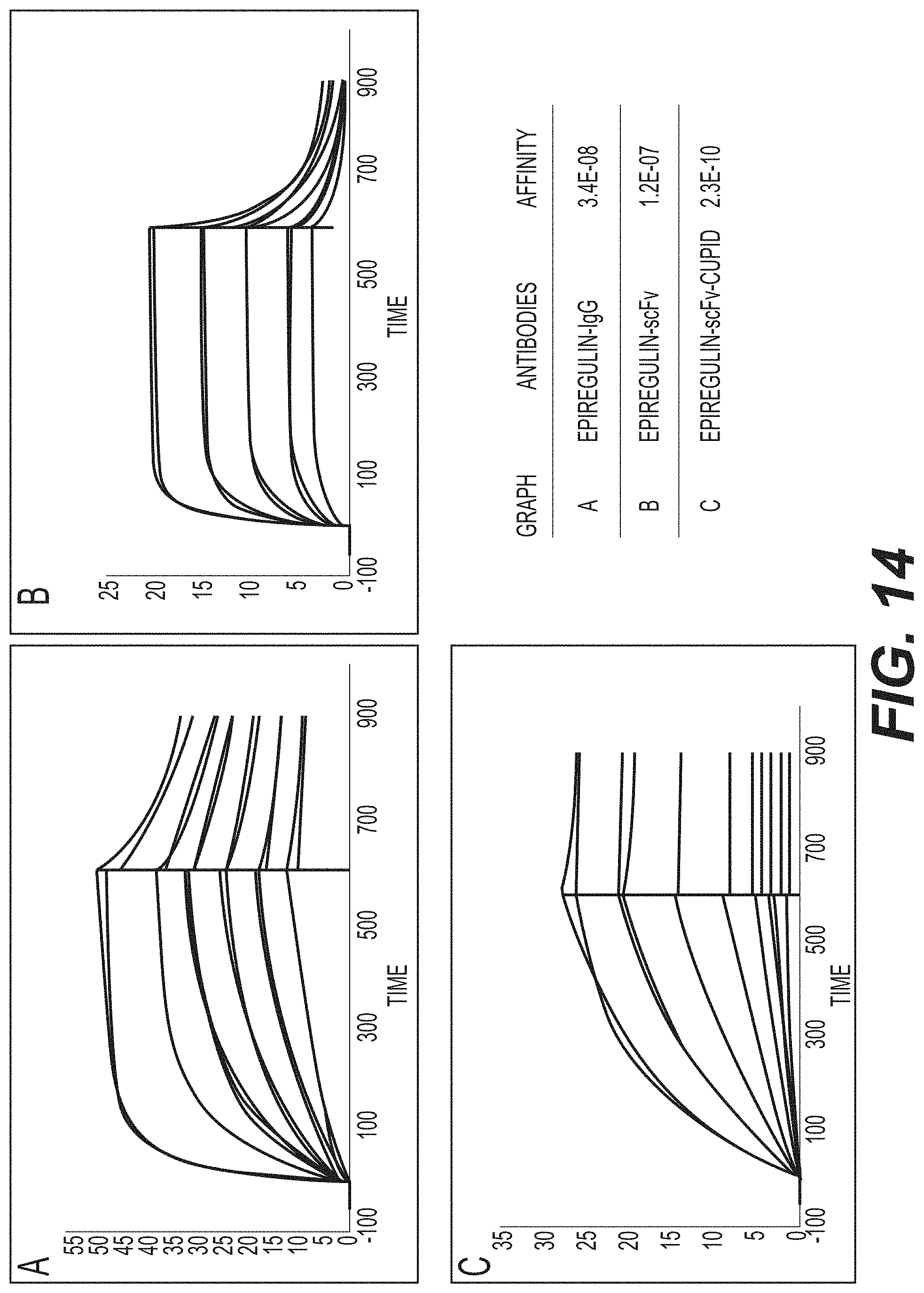
D00015
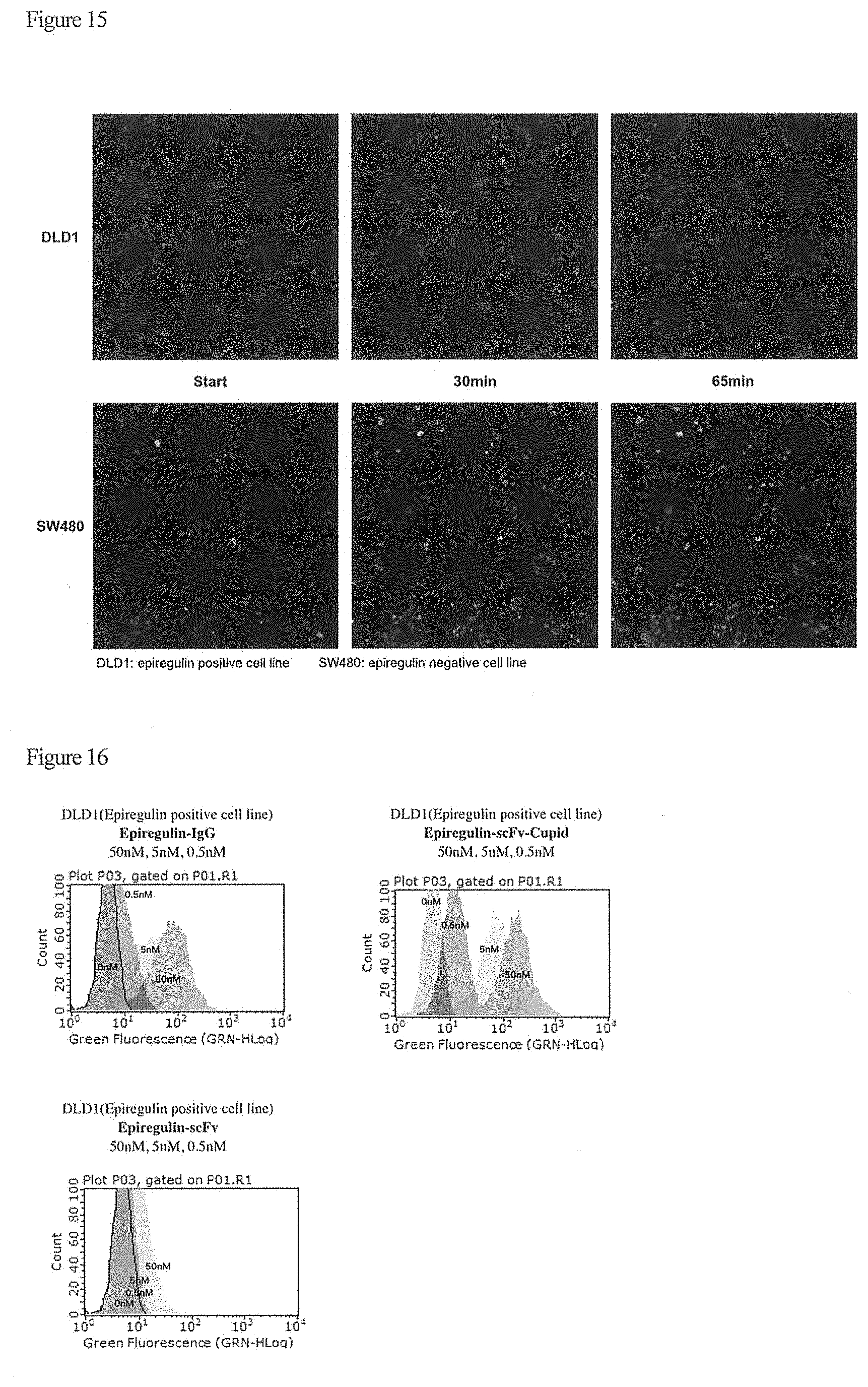
D00016
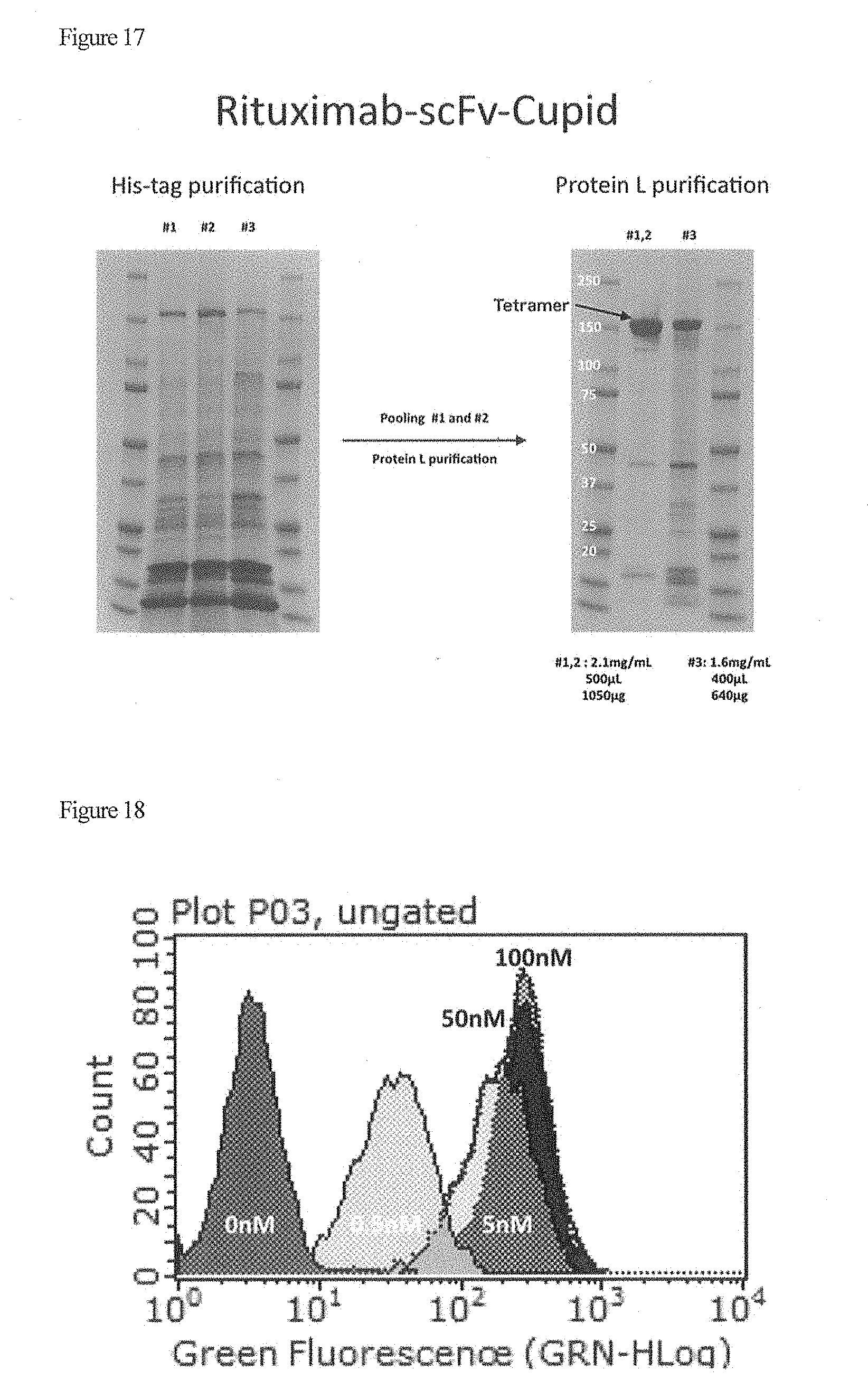
D00017
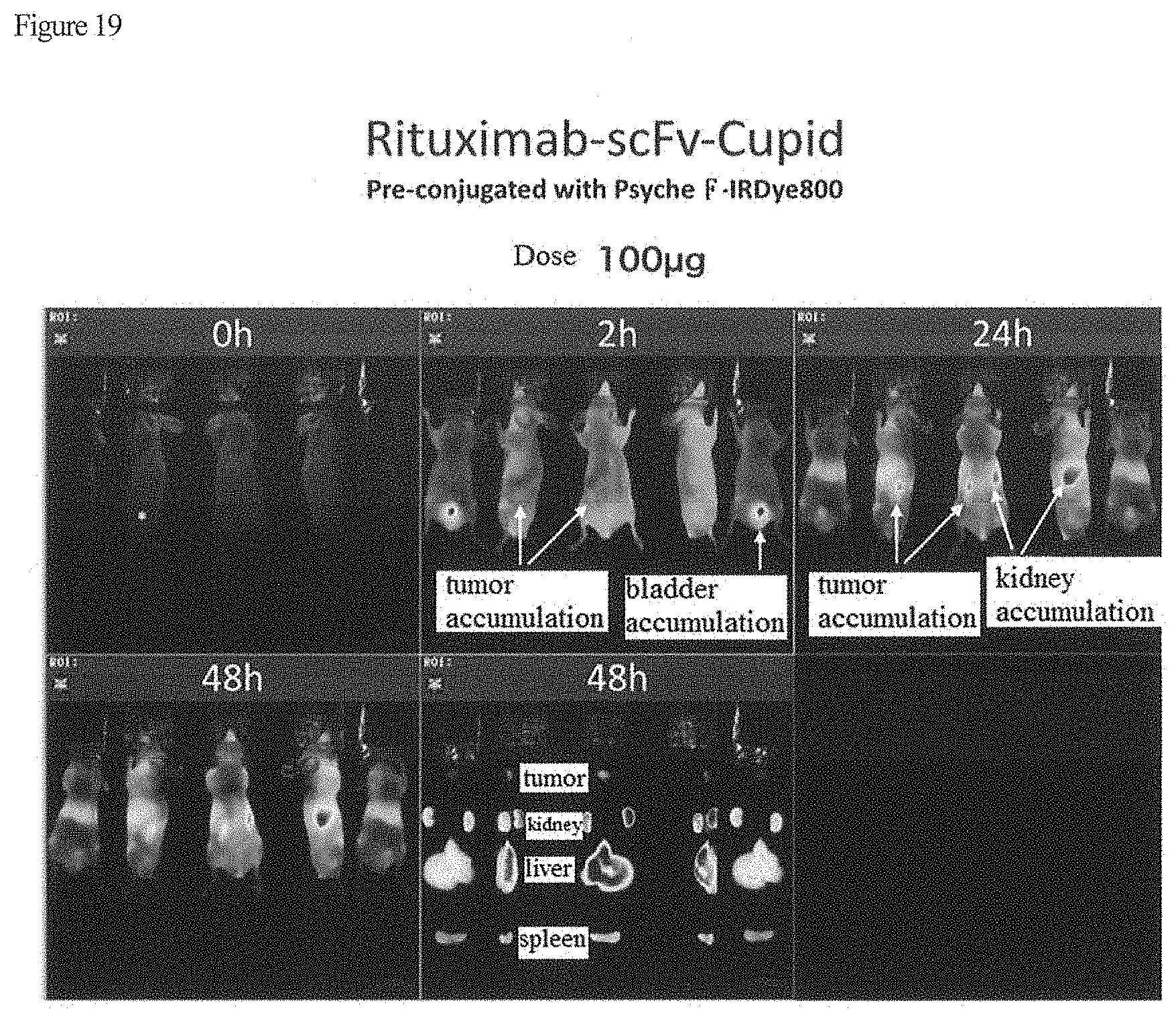
D00018

S00001
XML
uspto.report is an independent third-party trademark research tool that is not affiliated, endorsed, or sponsored by the United States Patent and Trademark Office (USPTO) or any other governmental organization. The information provided by uspto.report is based on publicly available data at the time of writing and is intended for informational purposes only.
While we strive to provide accurate and up-to-date information, we do not guarantee the accuracy, completeness, reliability, or suitability of the information displayed on this site. The use of this site is at your own risk. Any reliance you place on such information is therefore strictly at your own risk.
All official trademark data, including owner information, should be verified by visiting the official USPTO website at www.uspto.gov. This site is not intended to replace professional legal advice and should not be used as a substitute for consulting with a legal professional who is knowledgeable about trademark law.